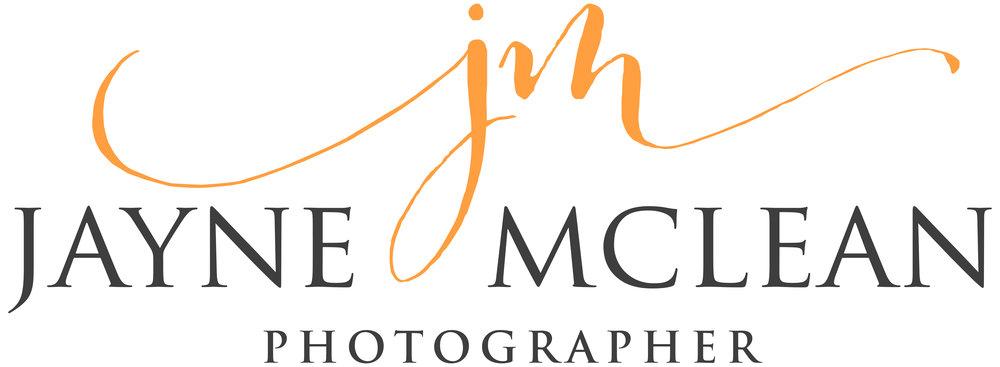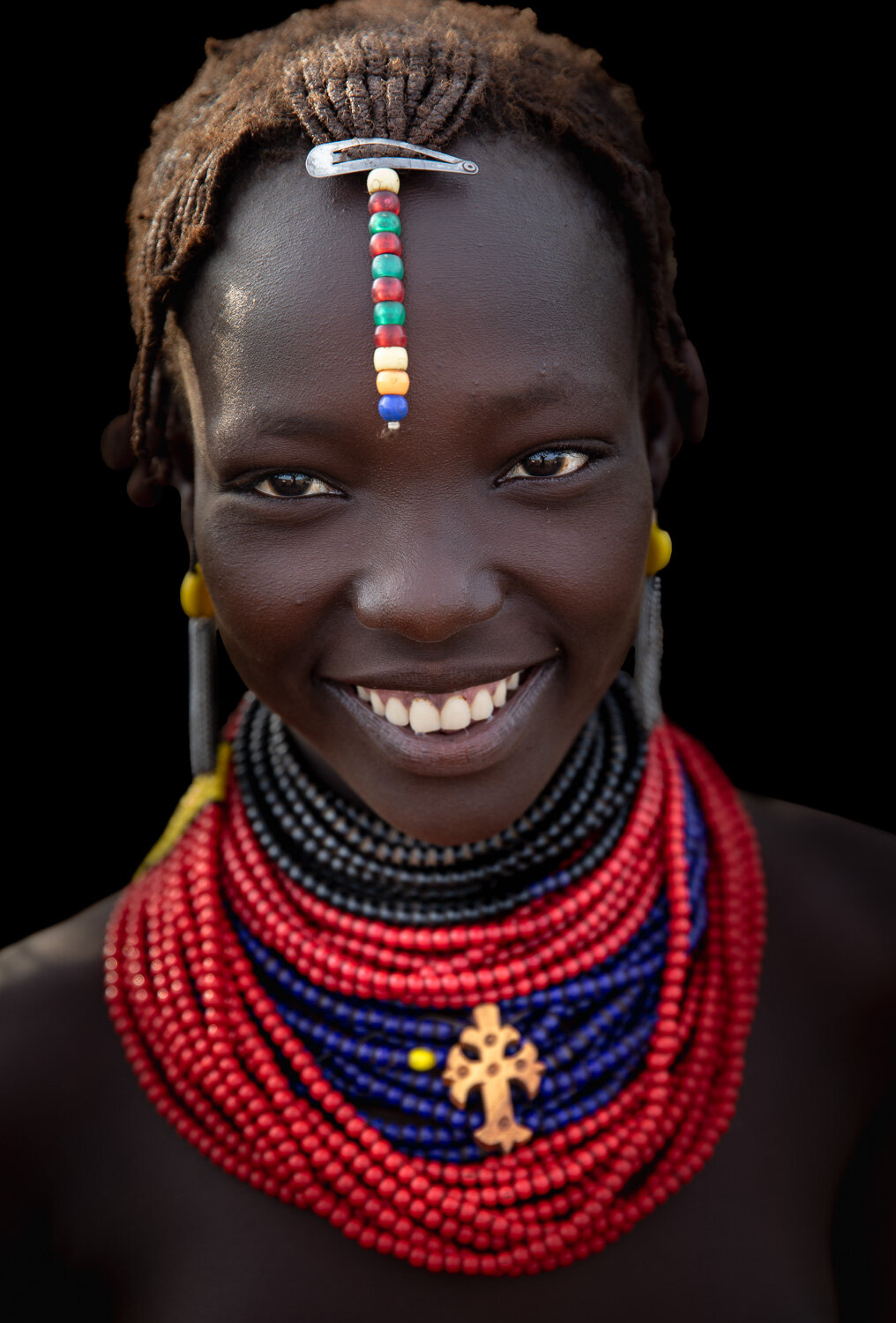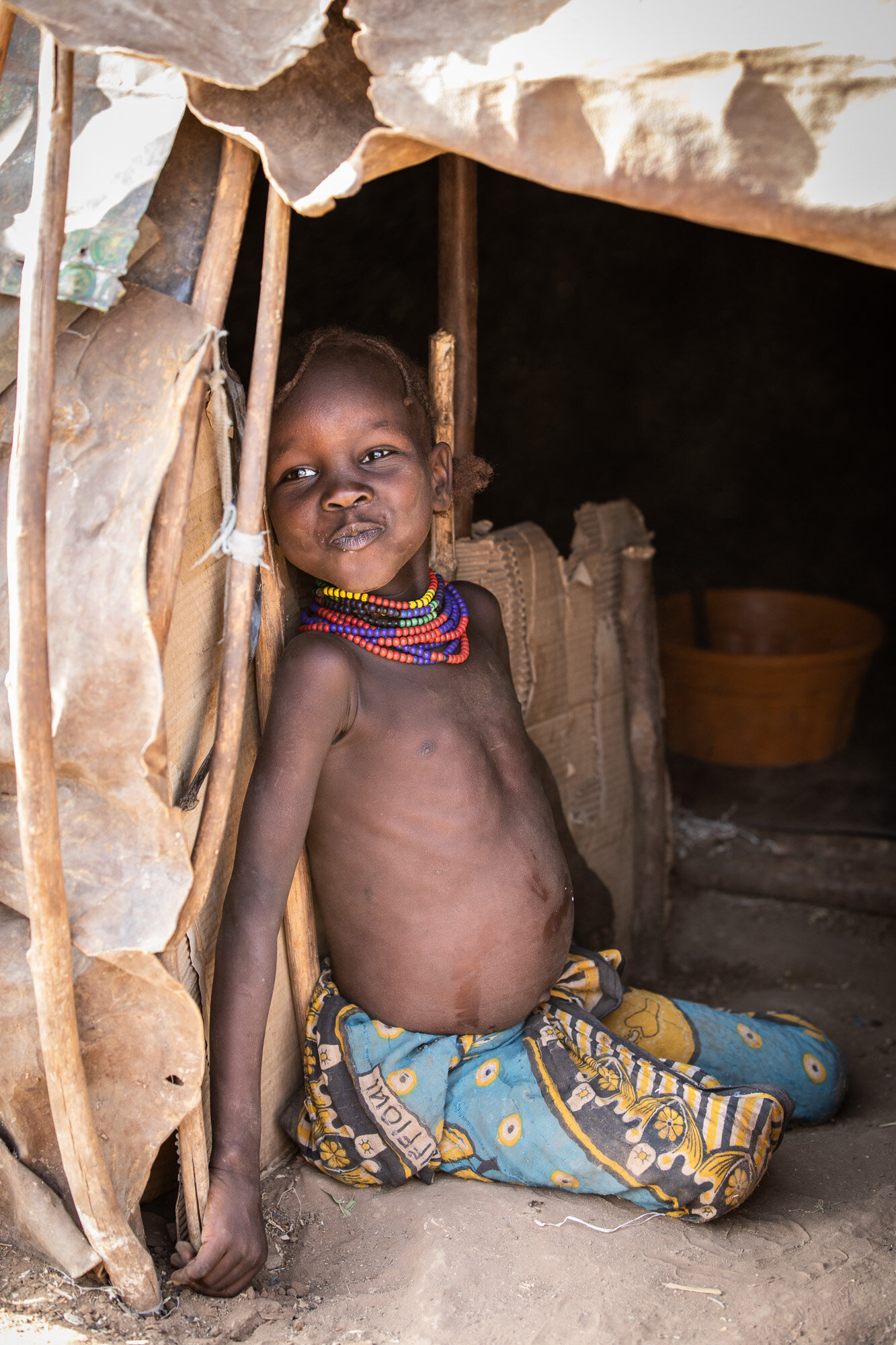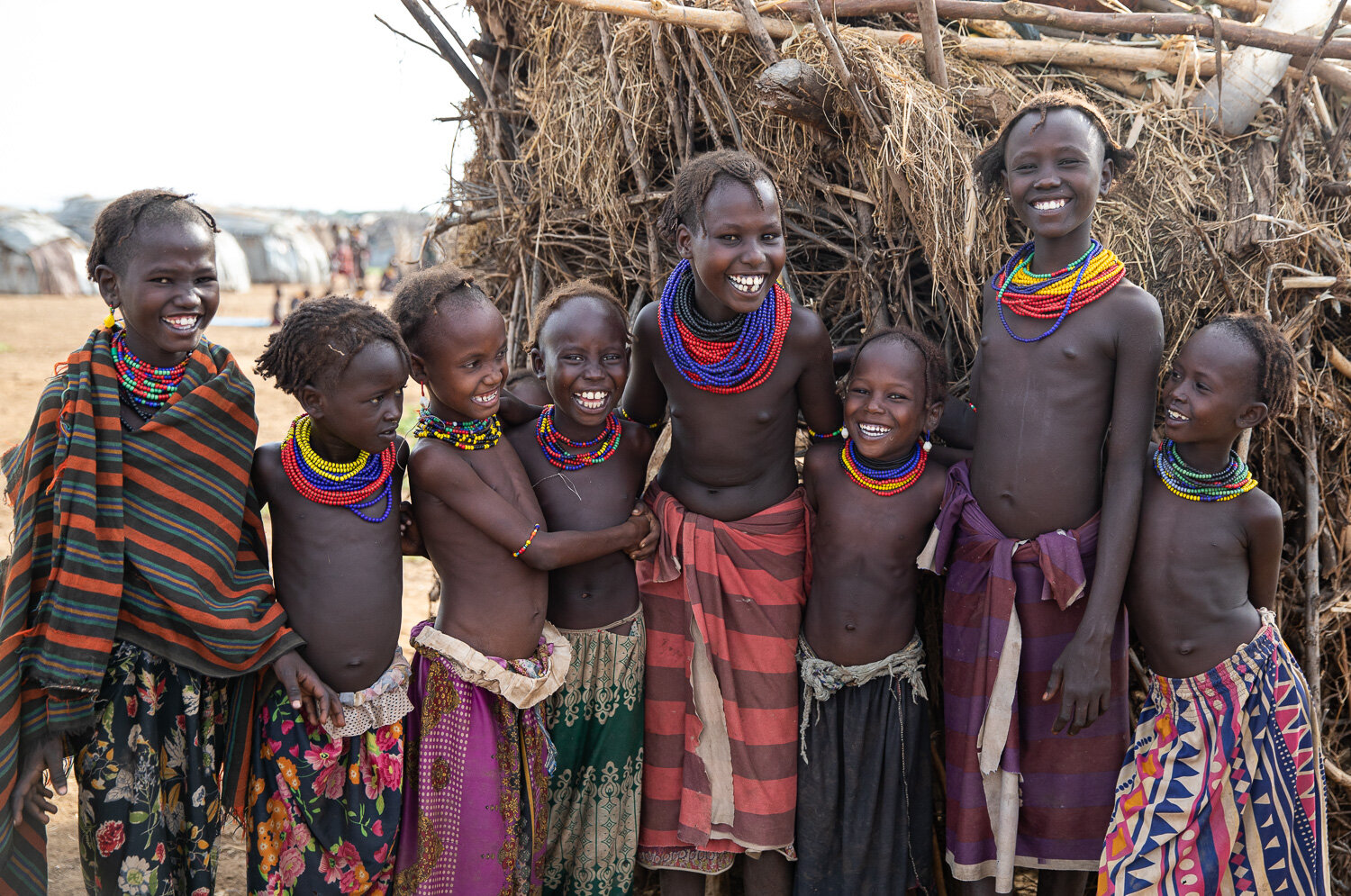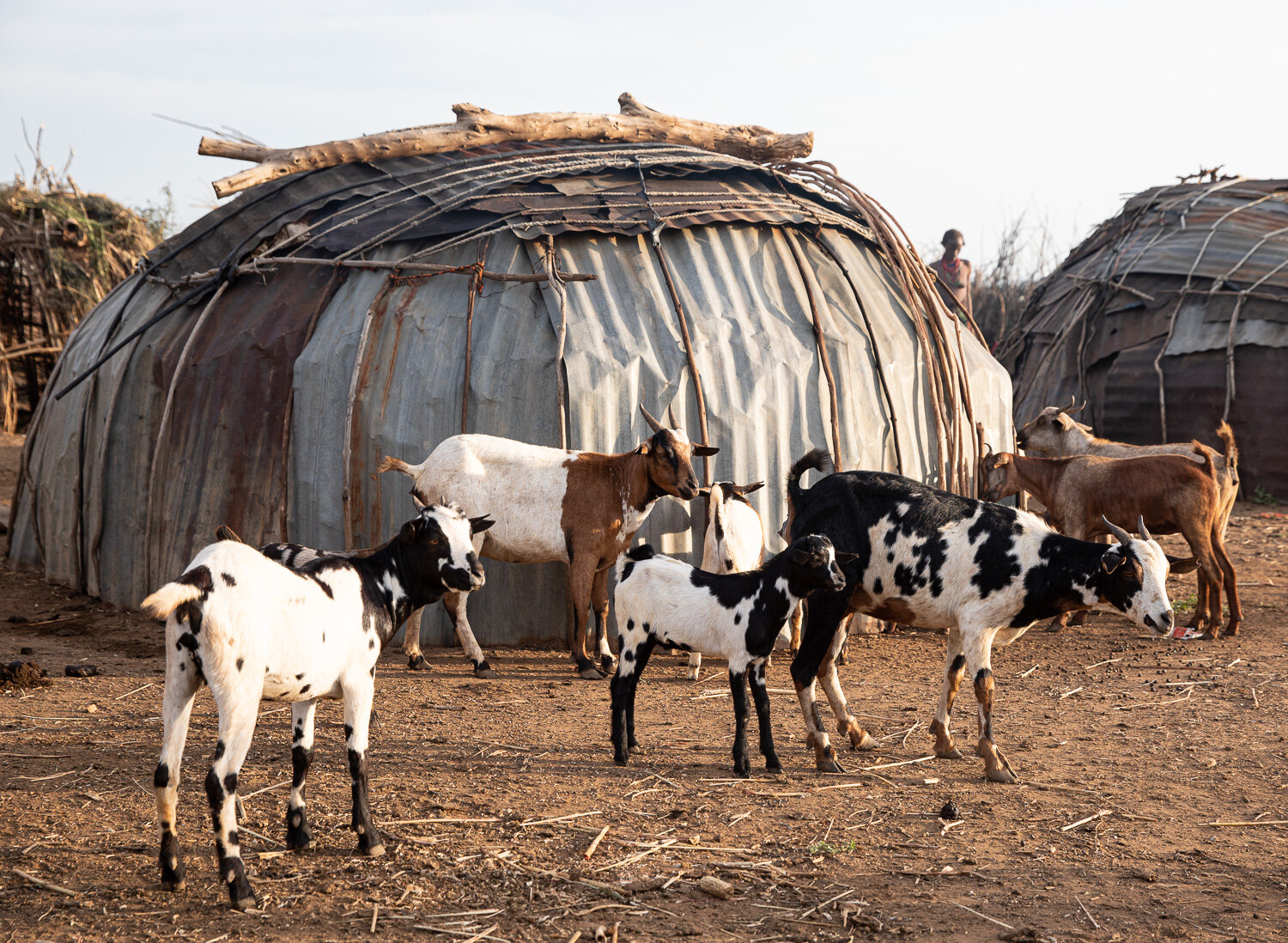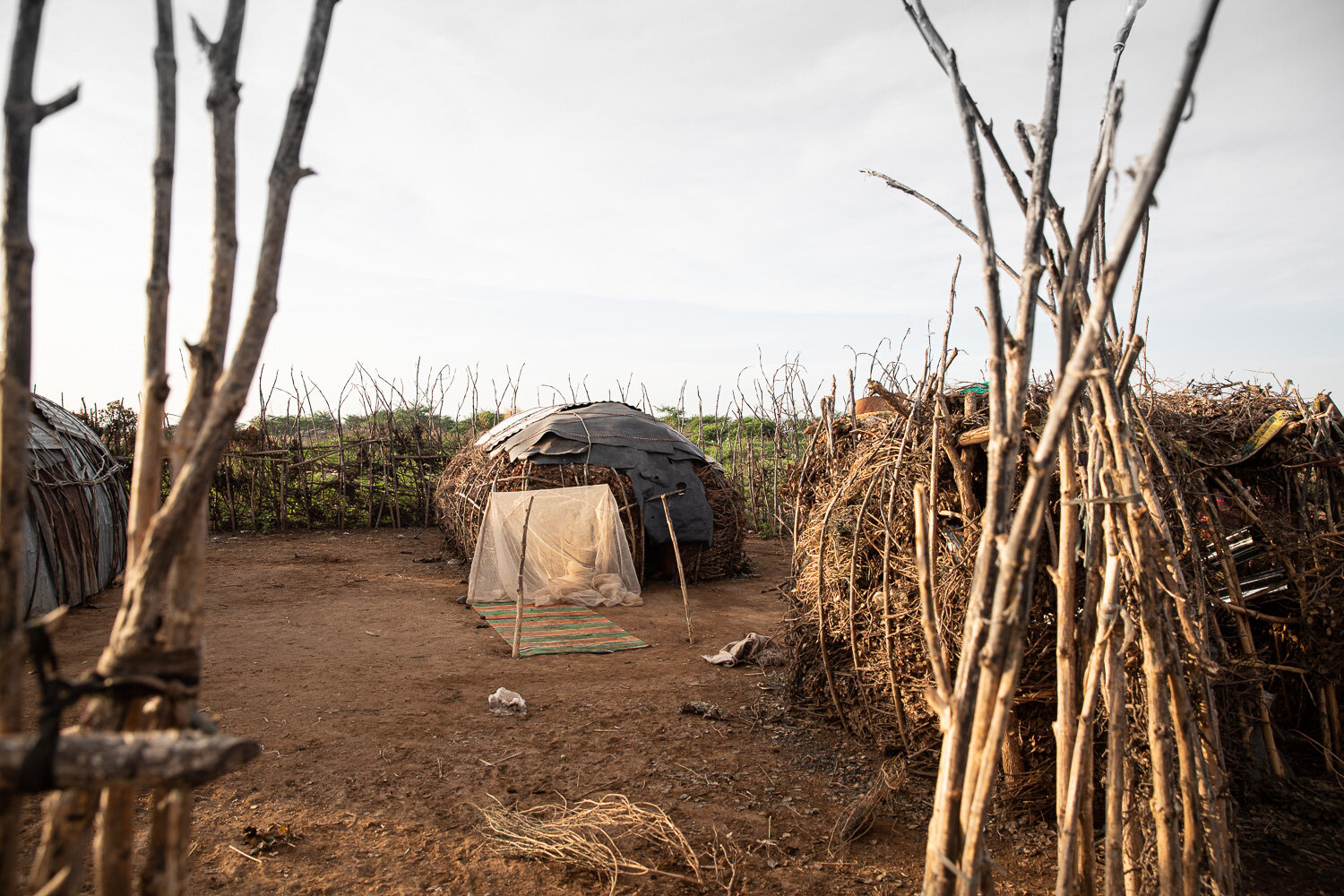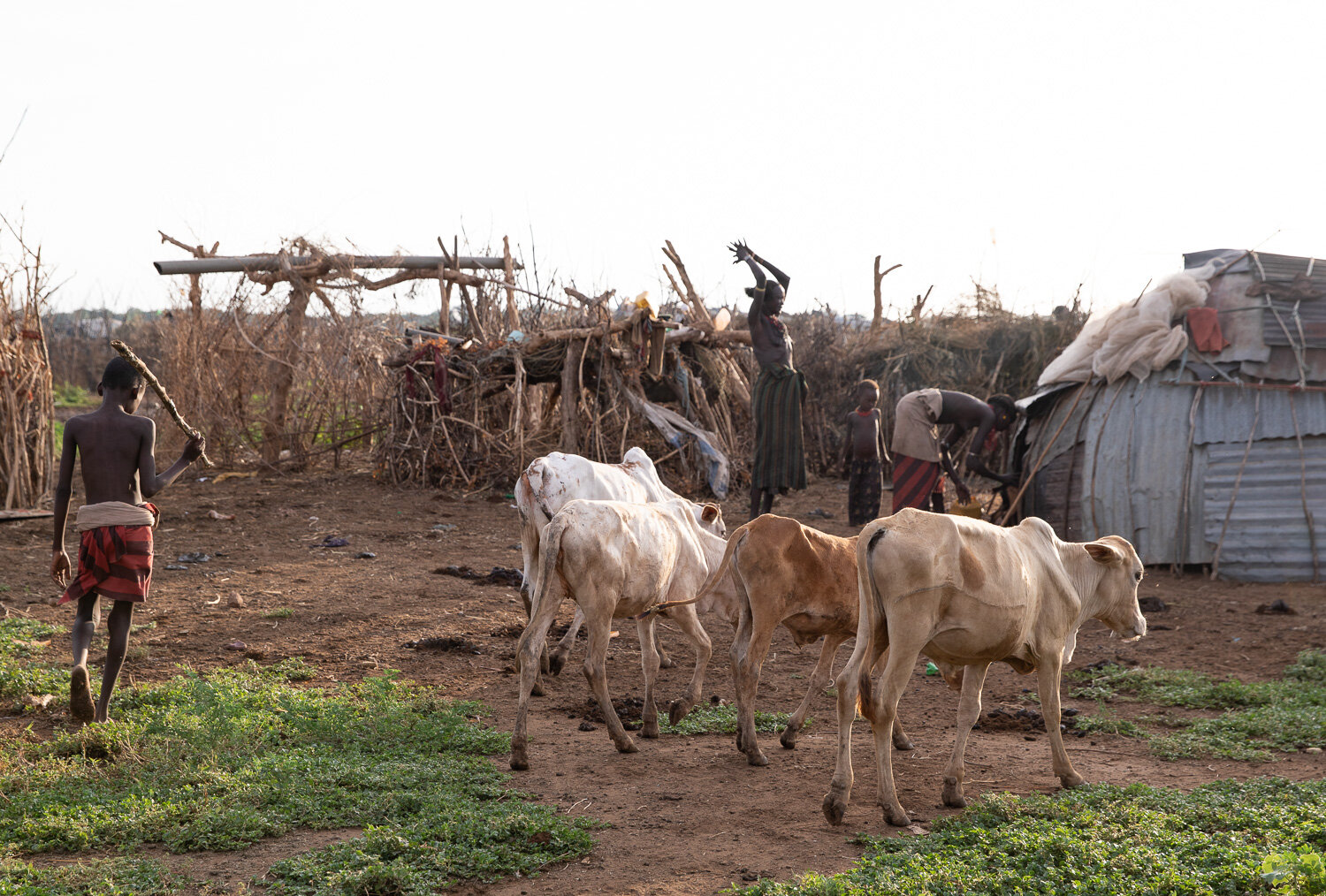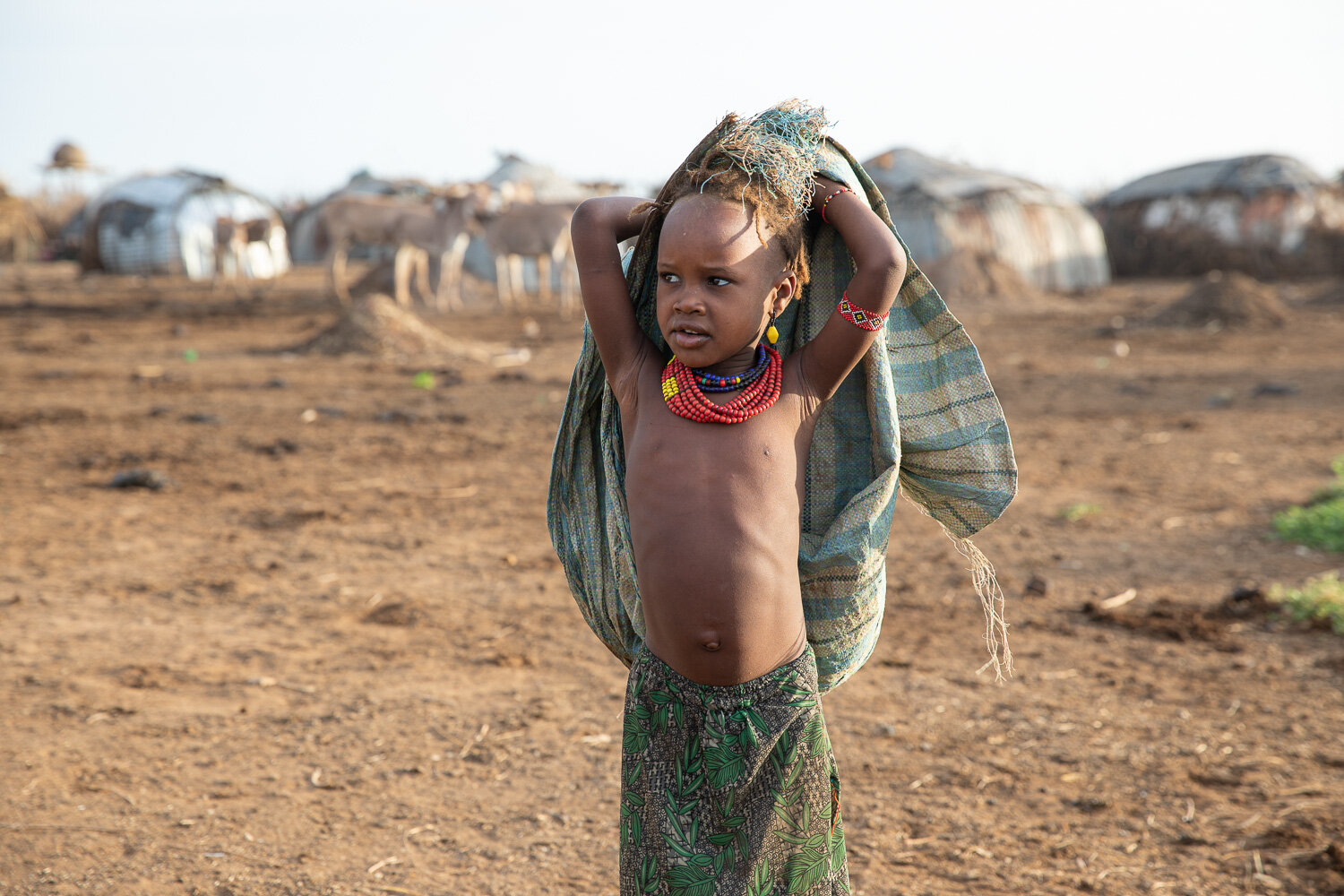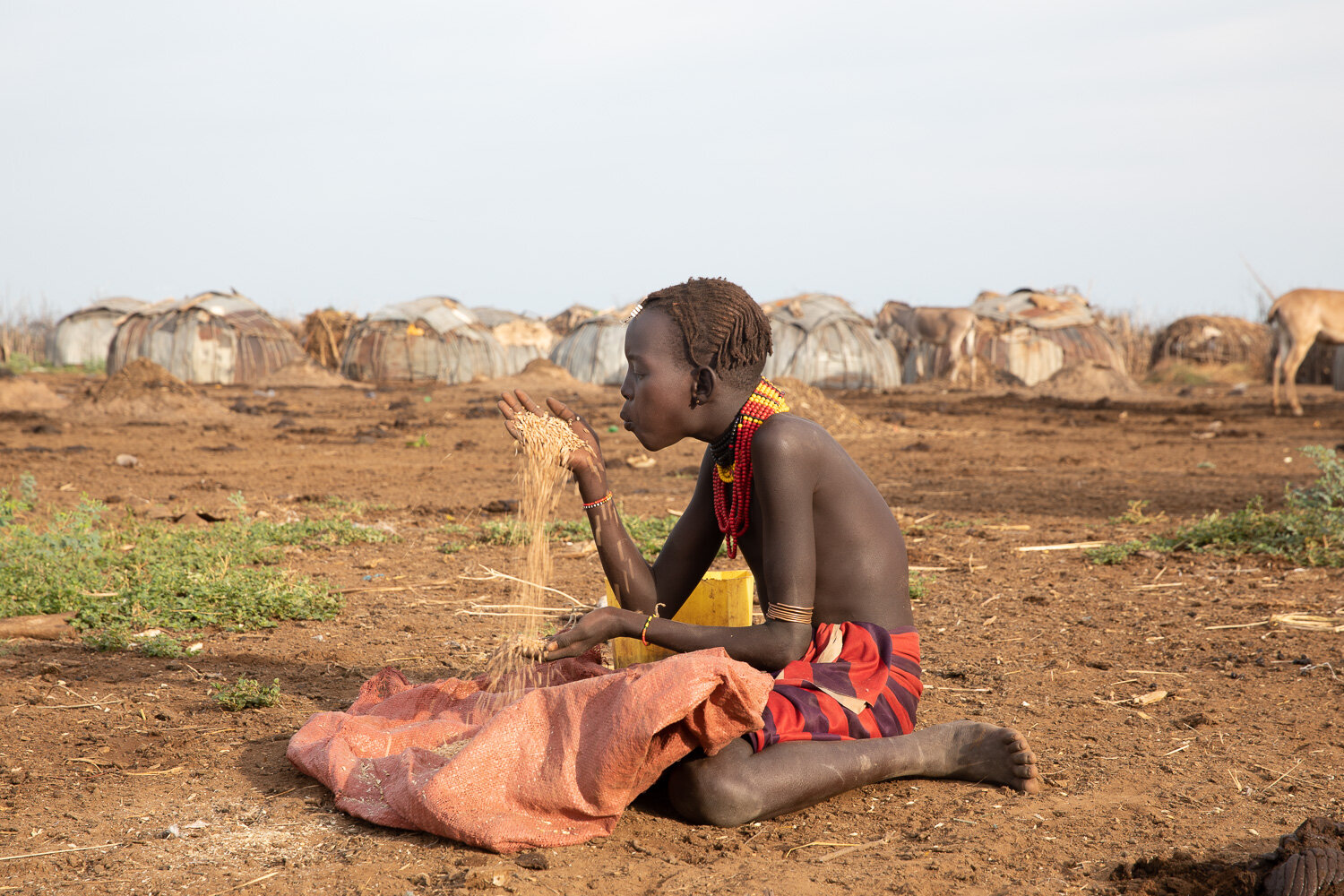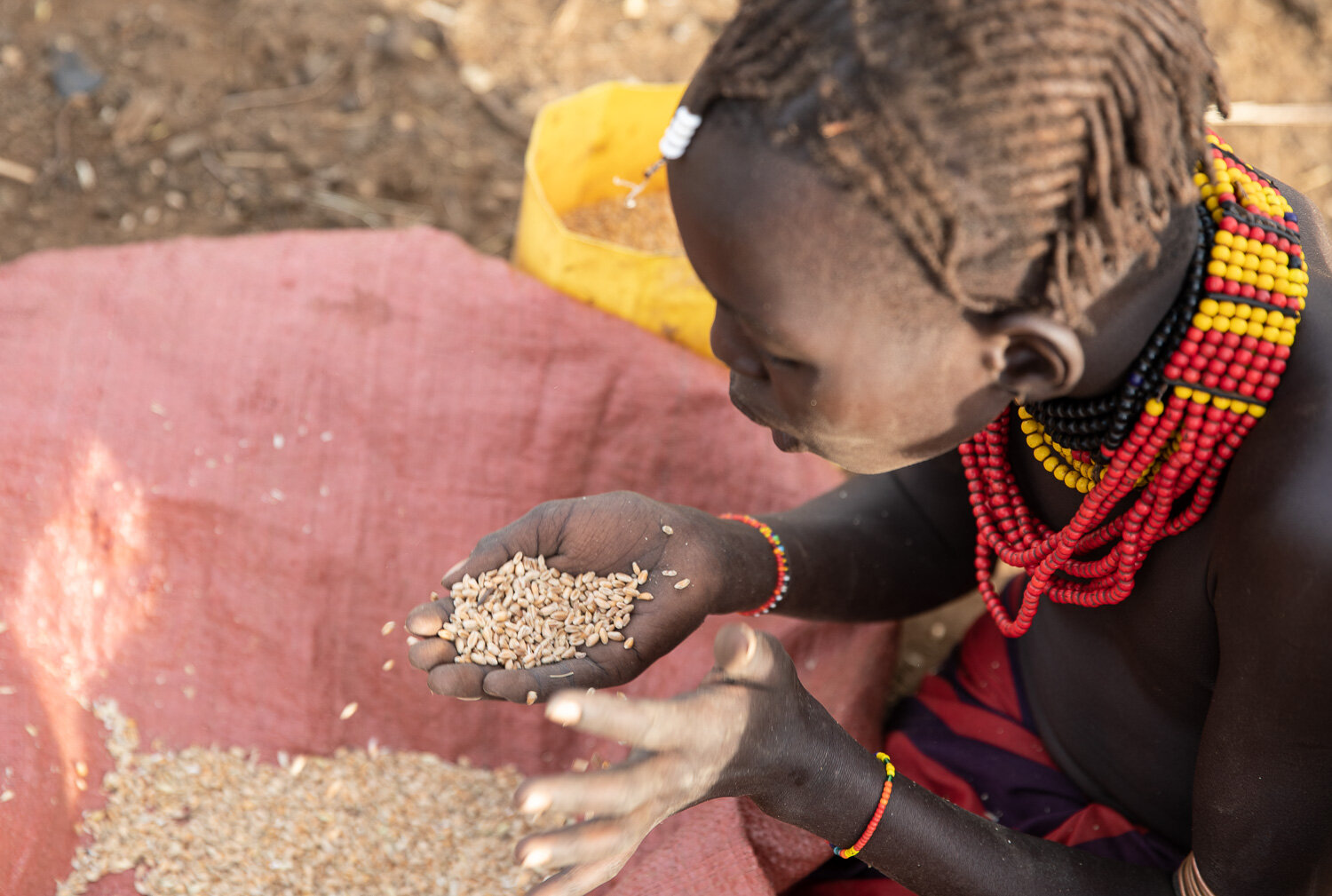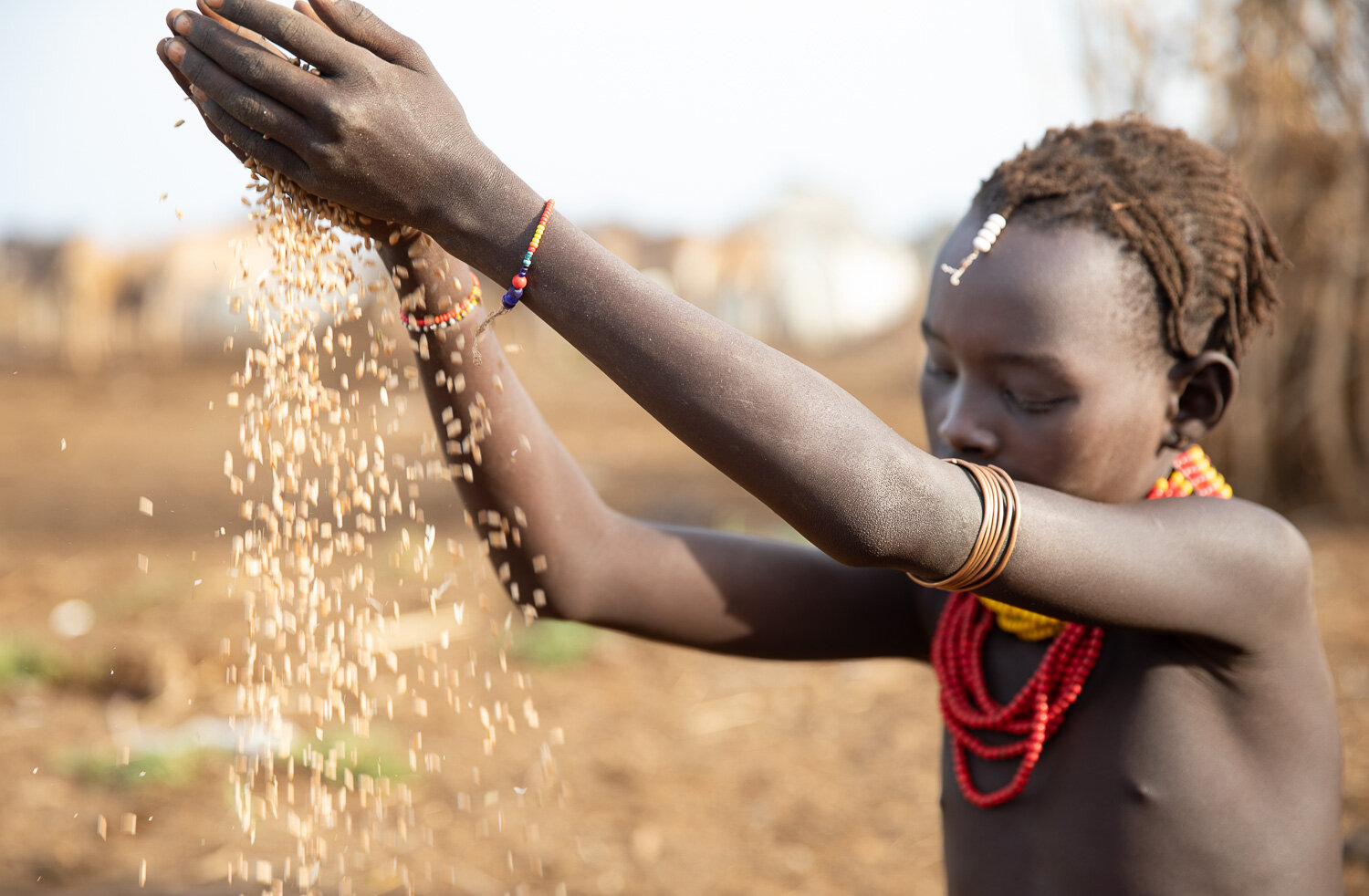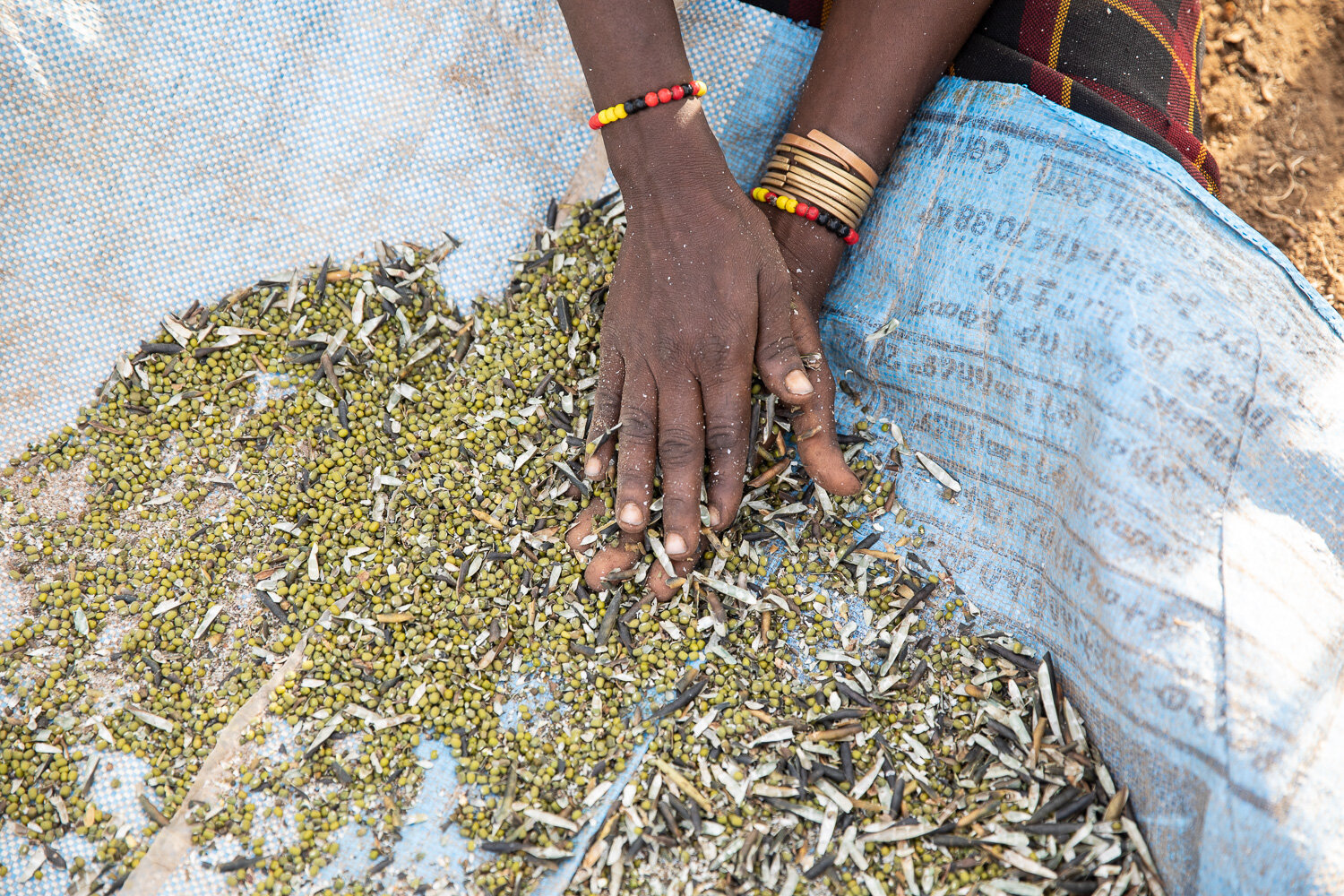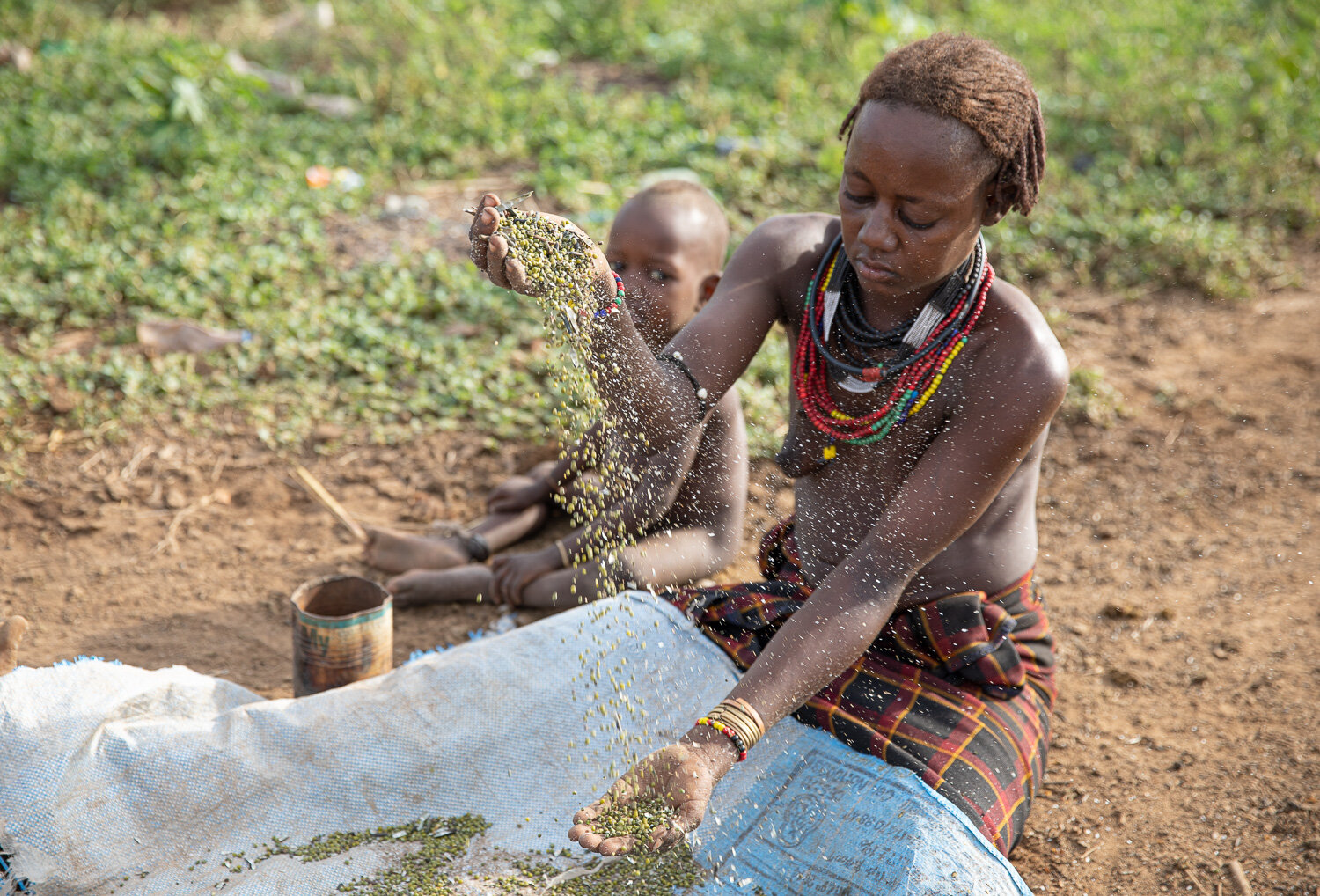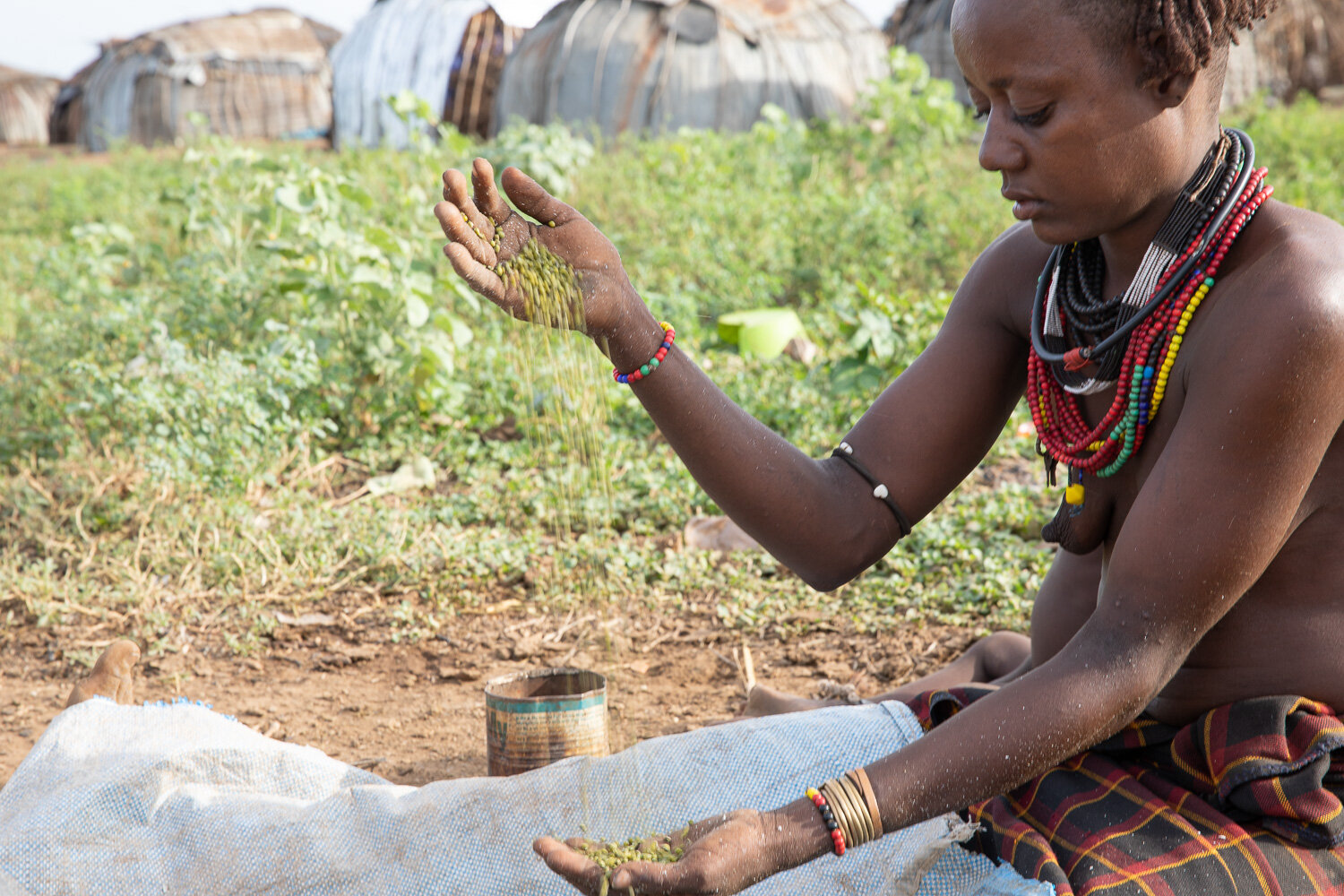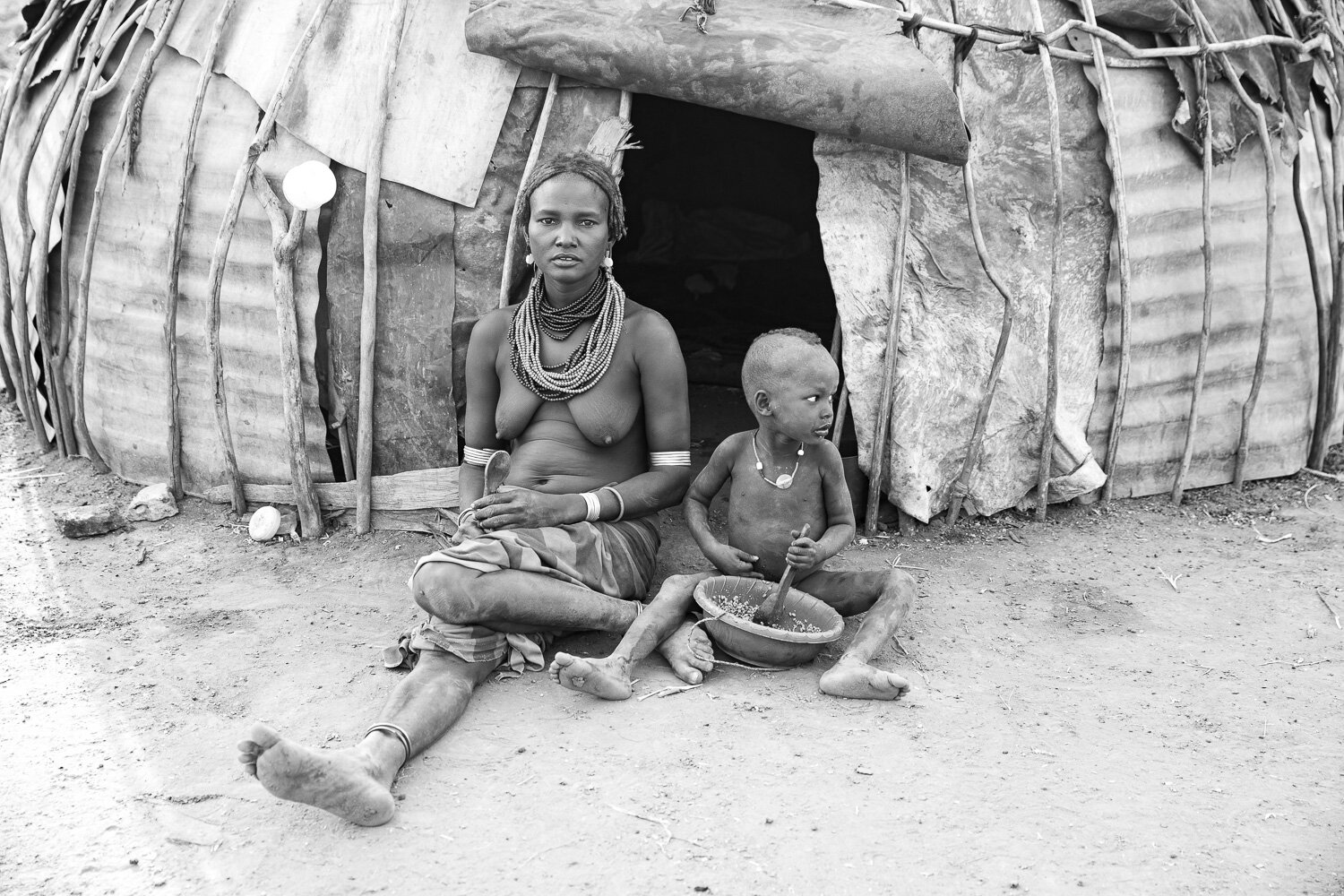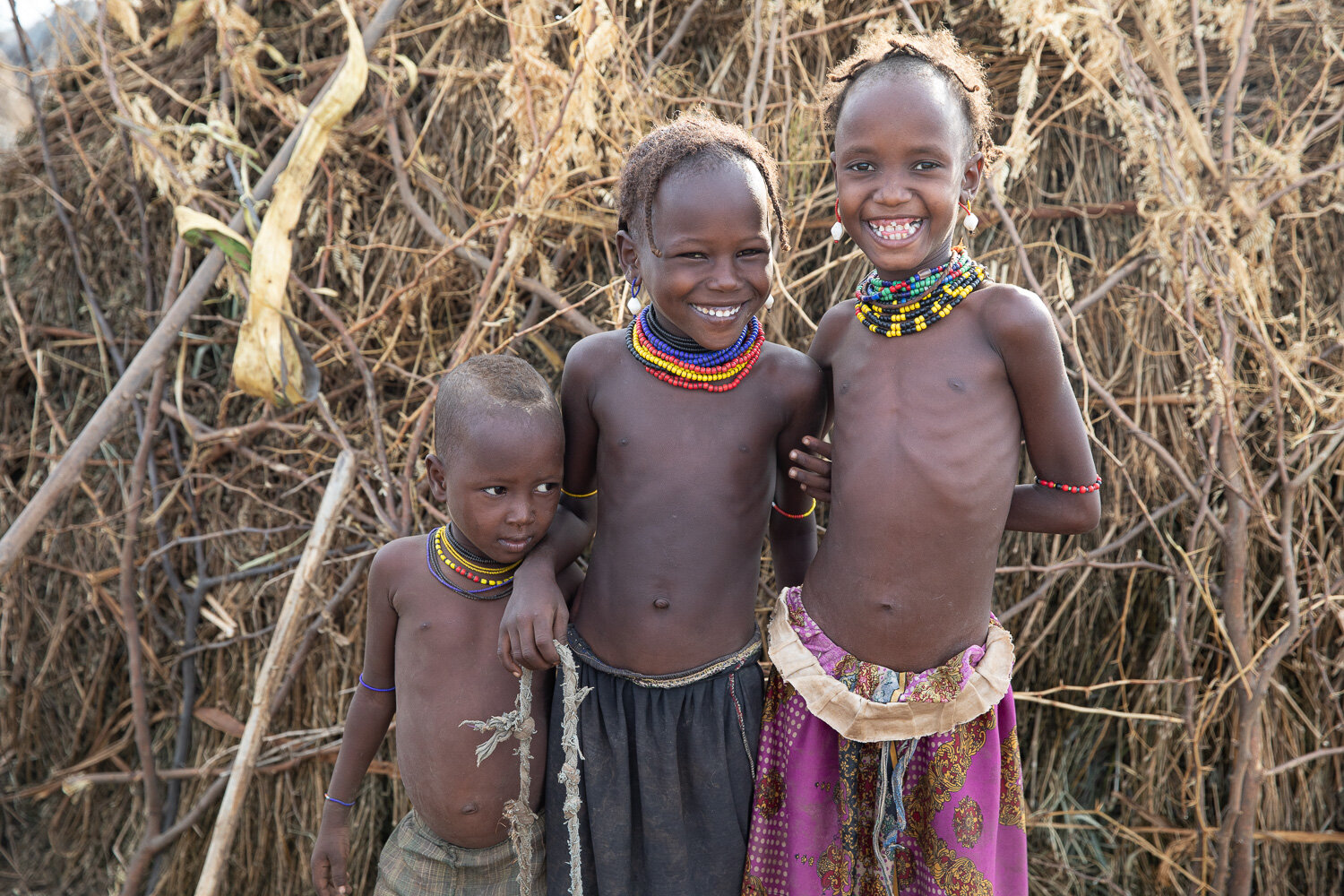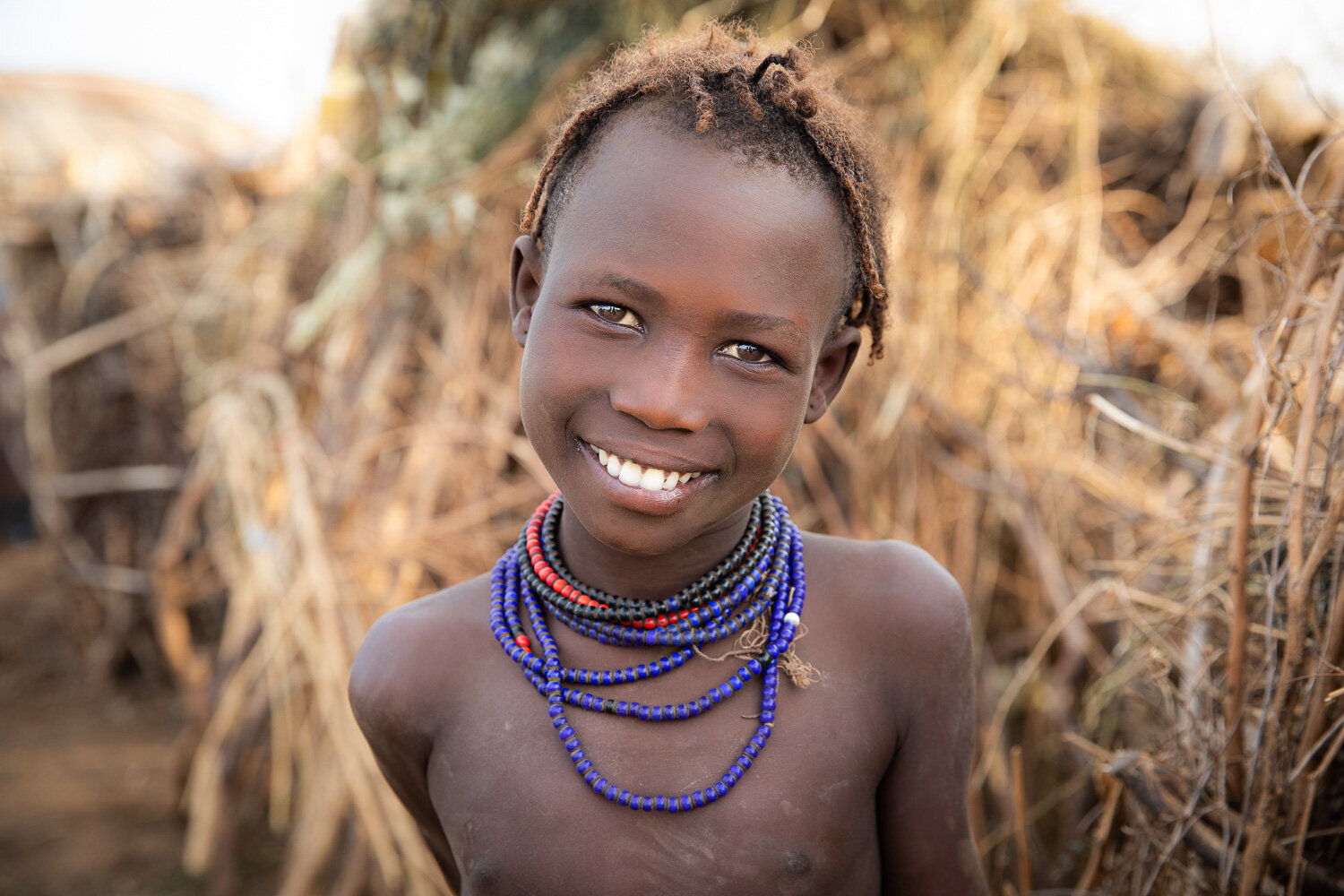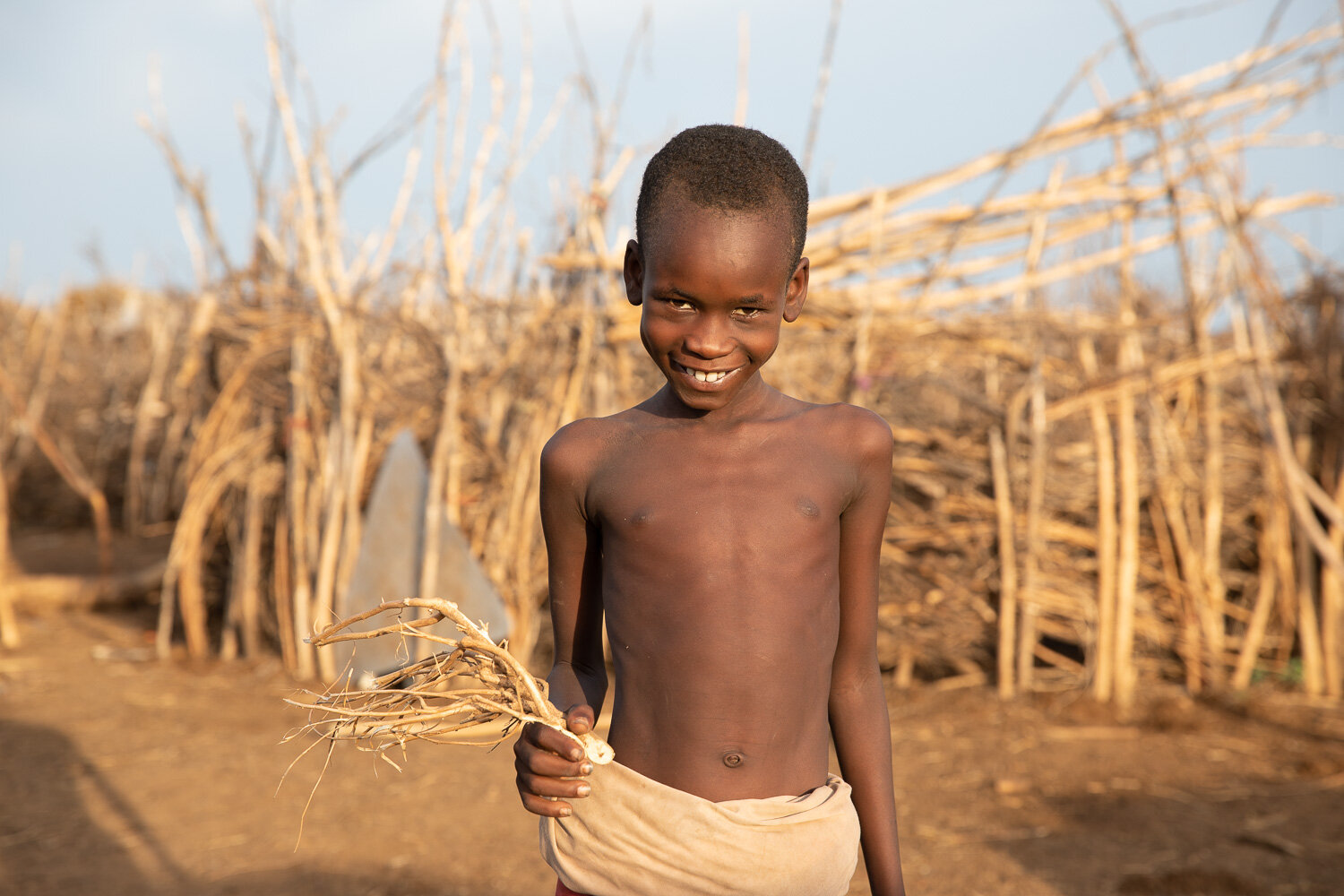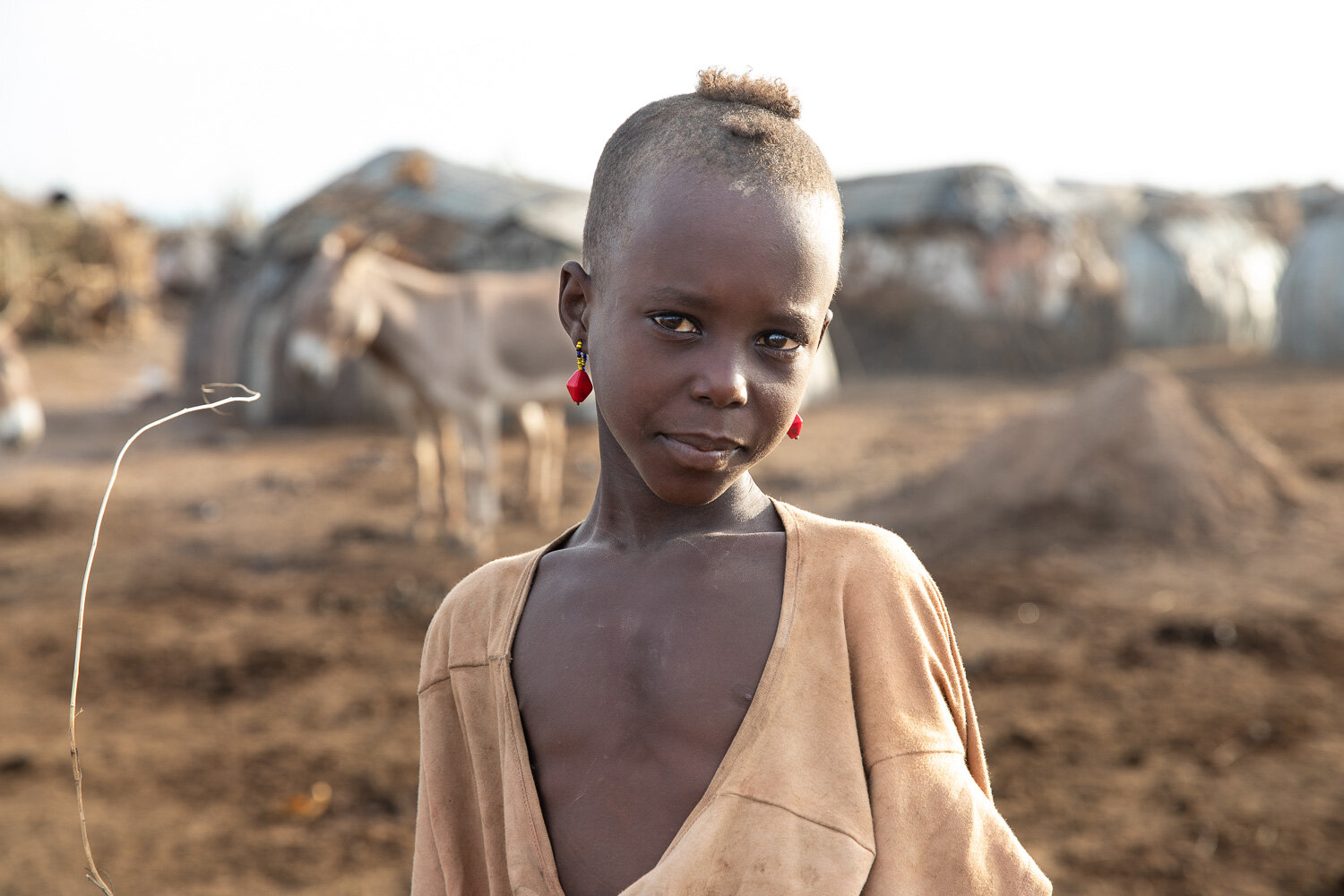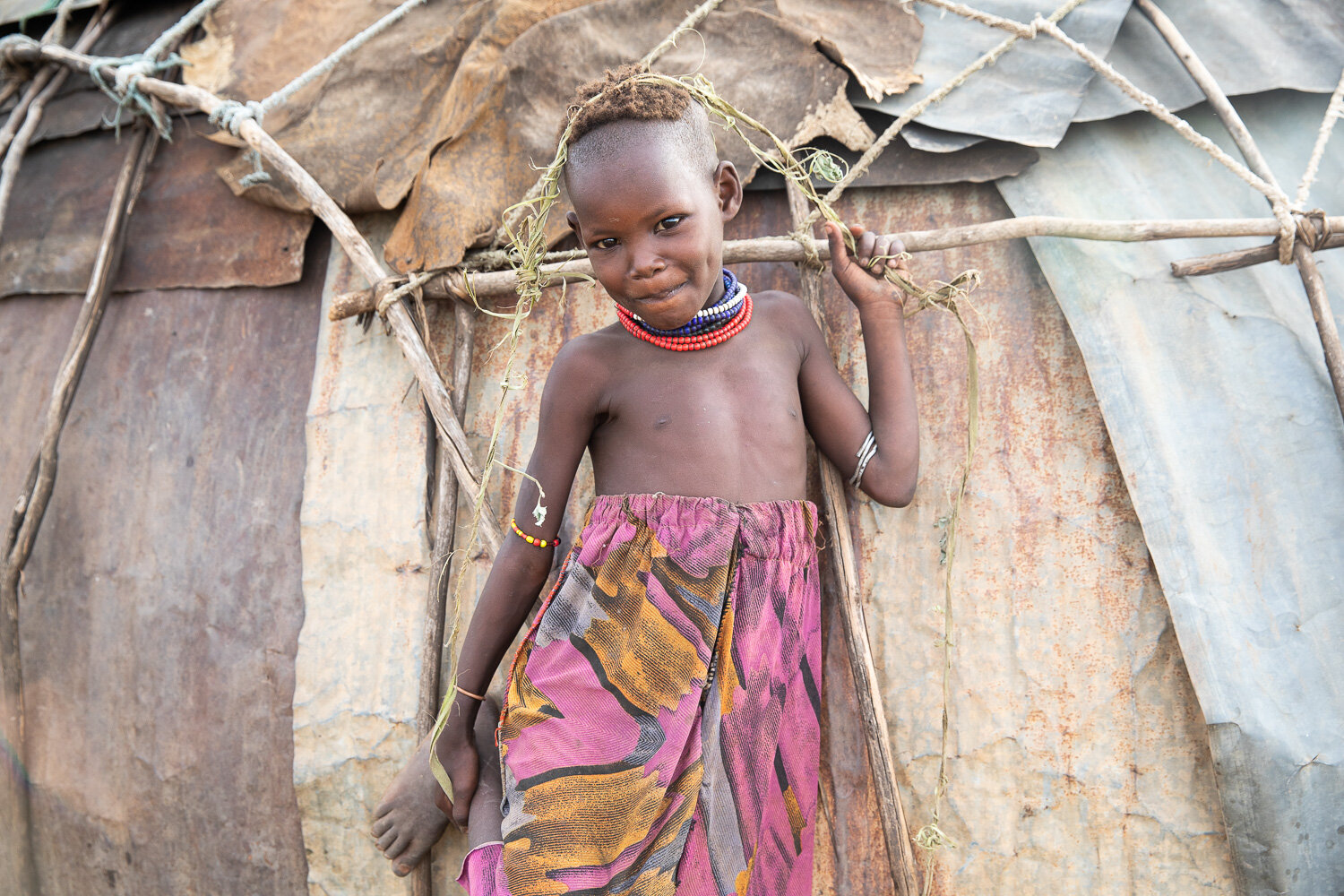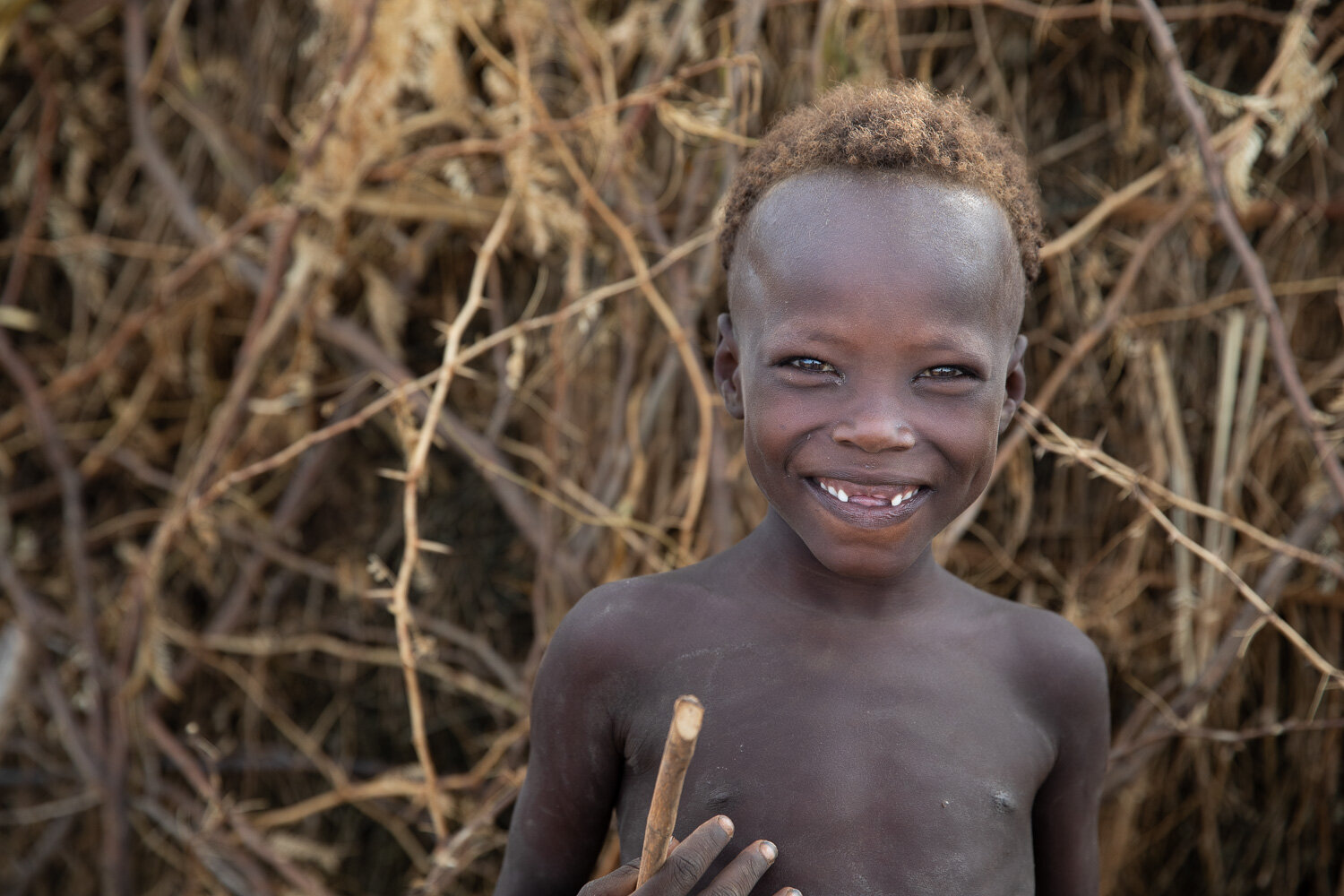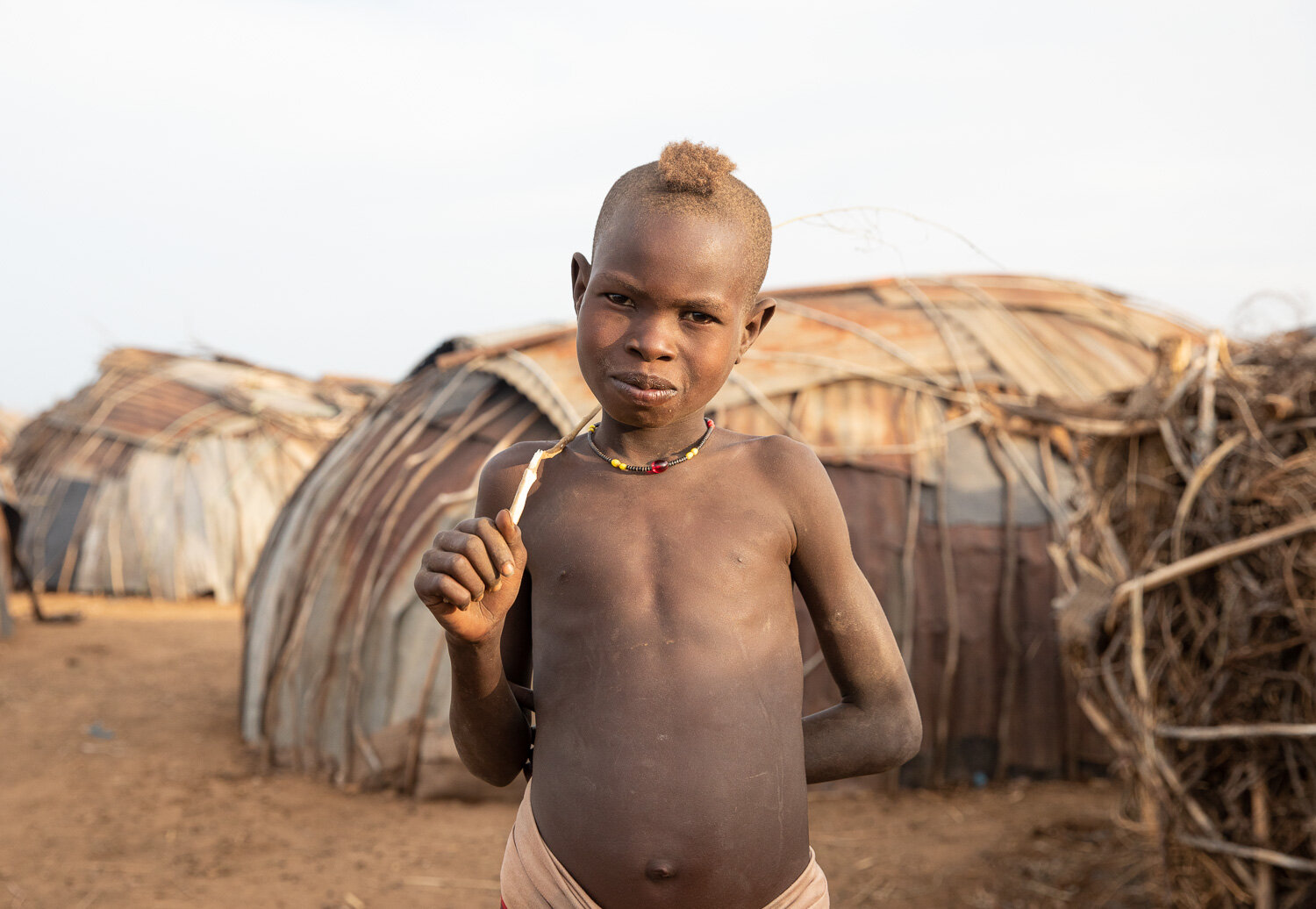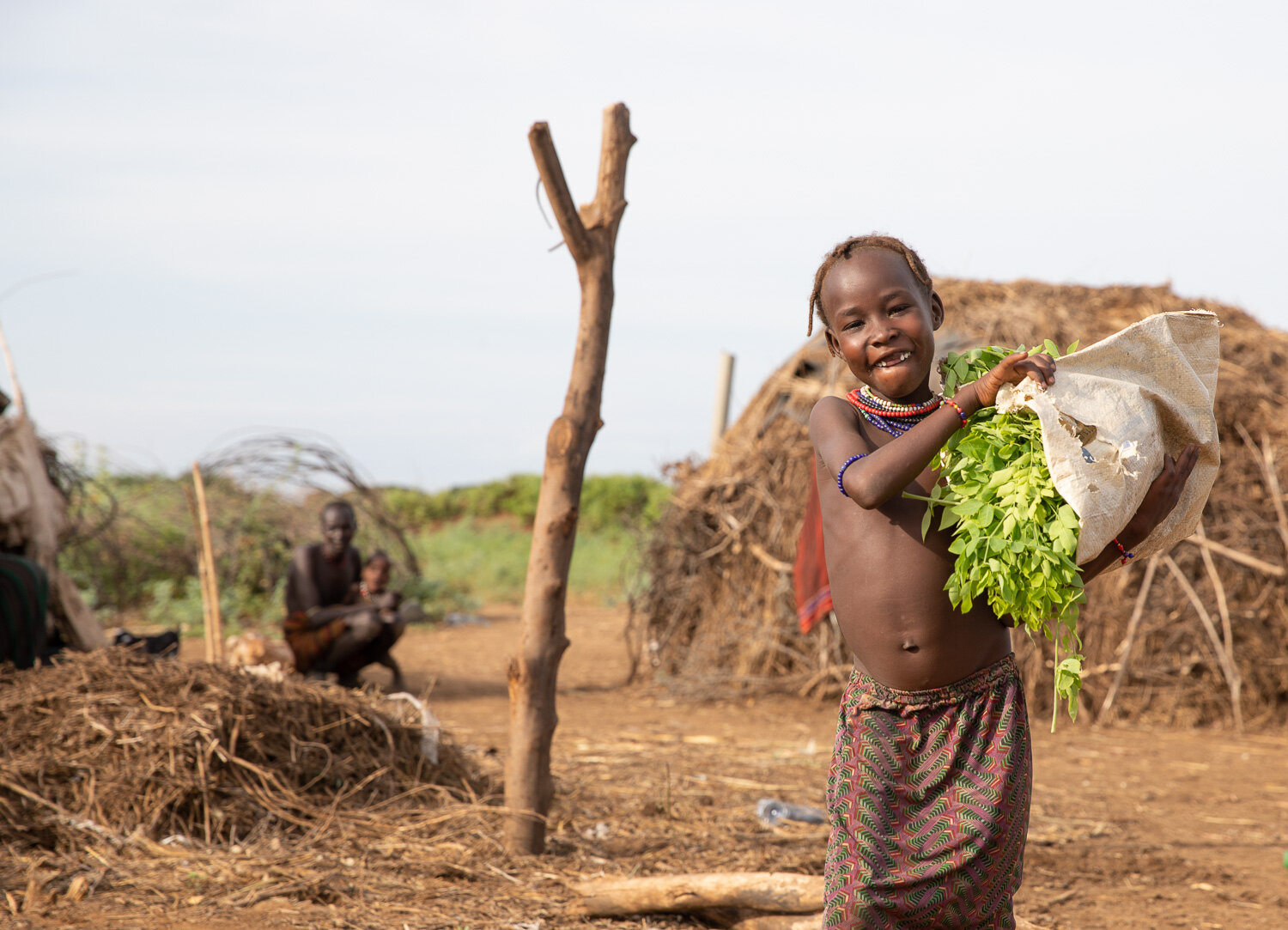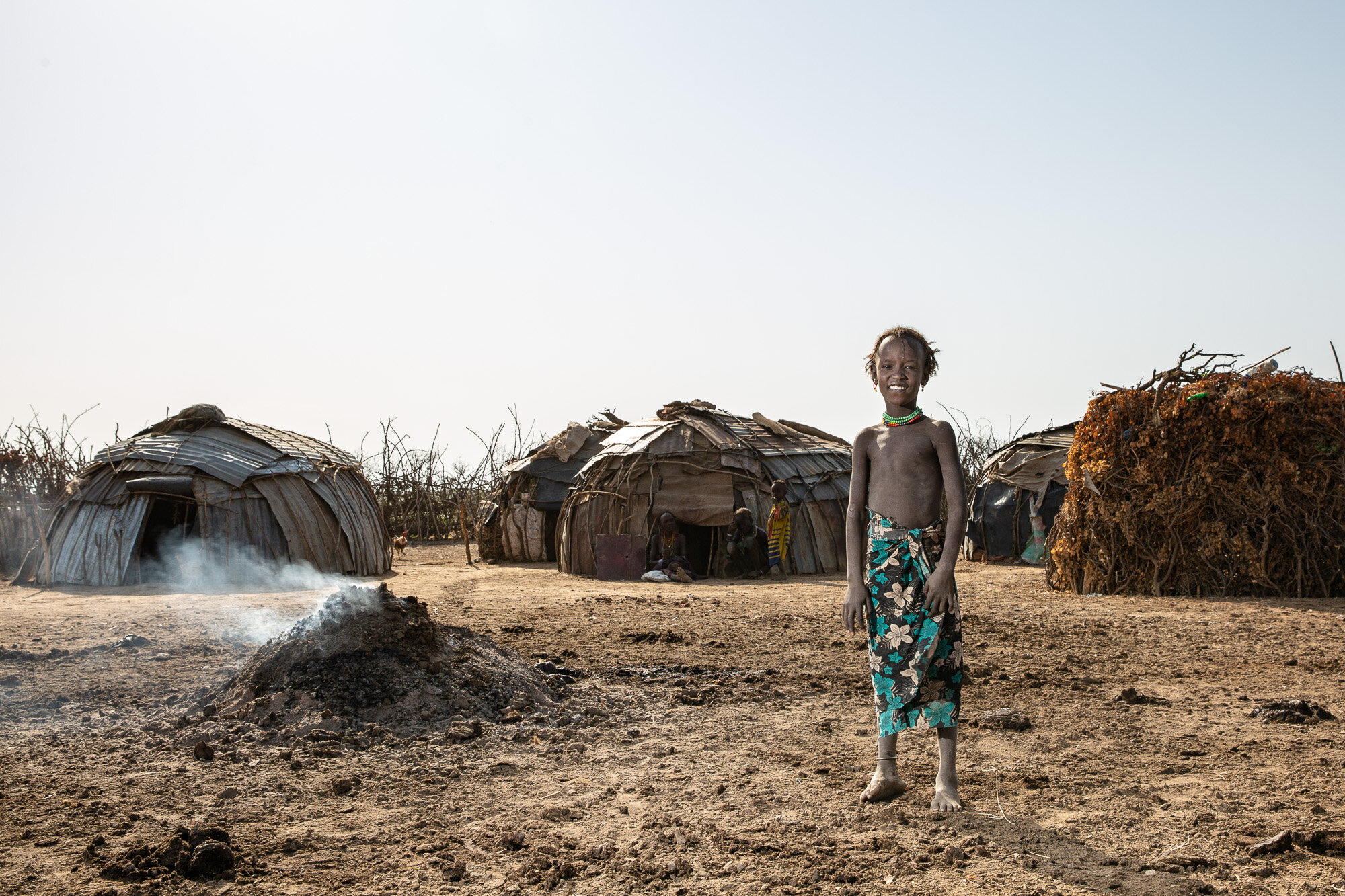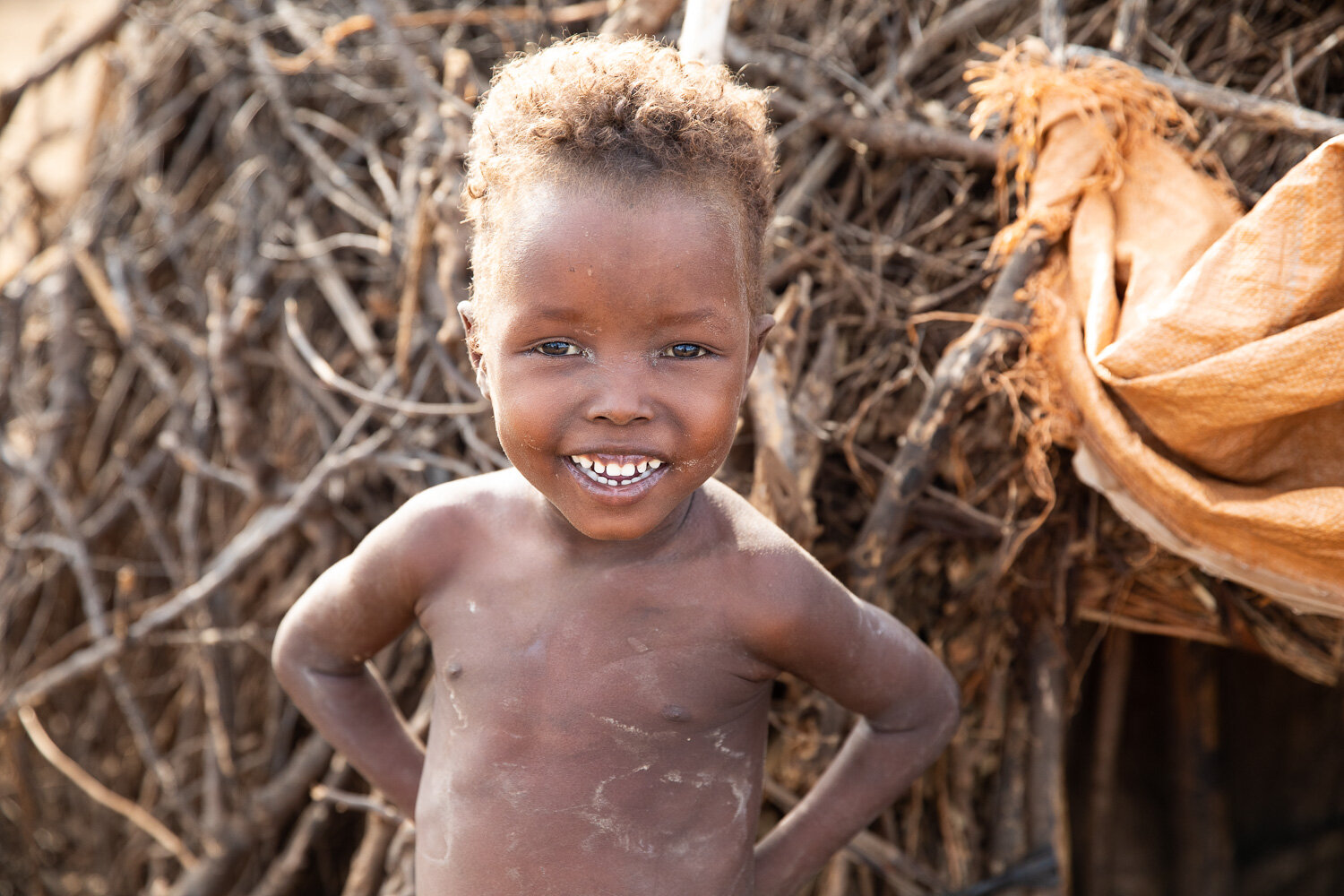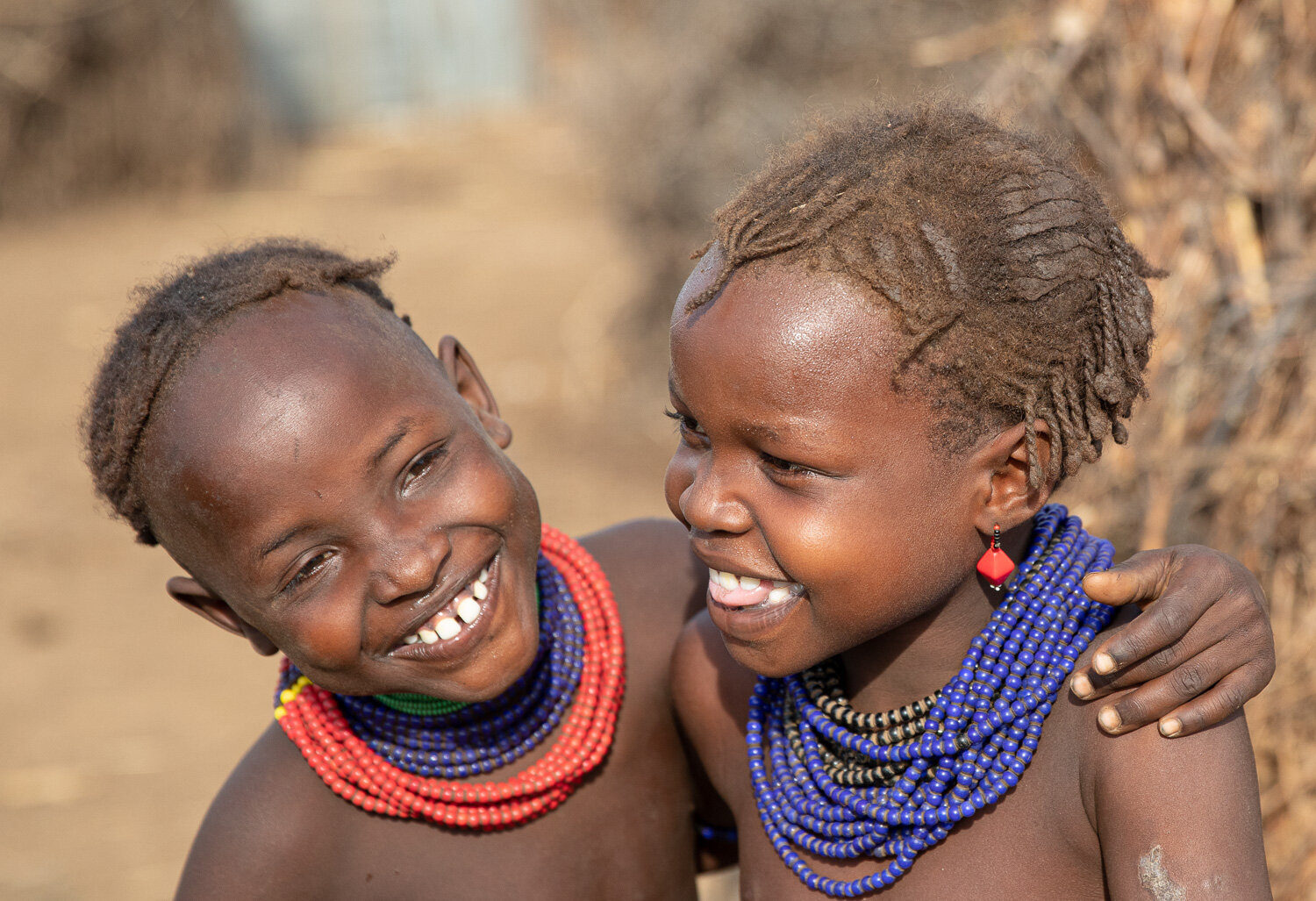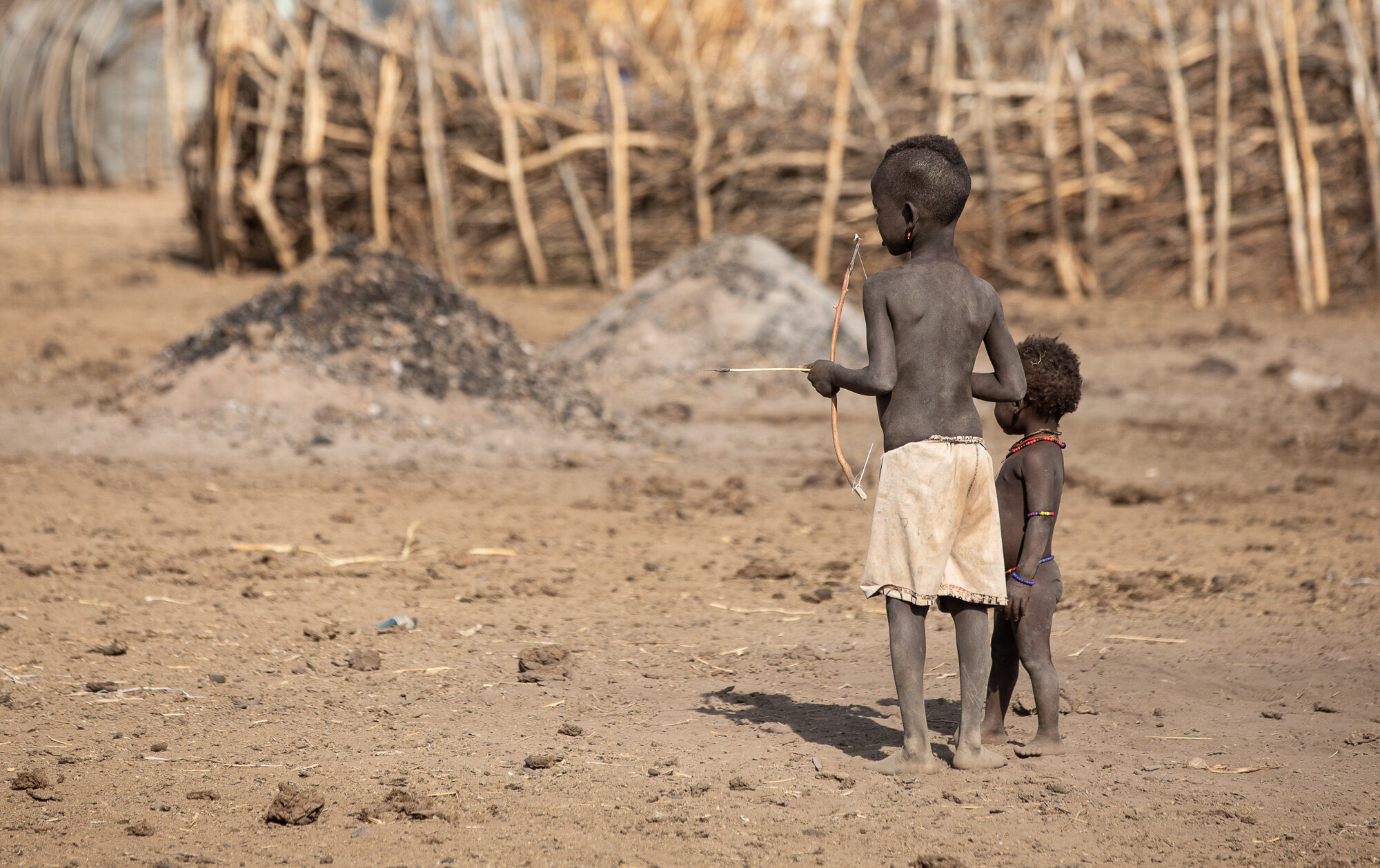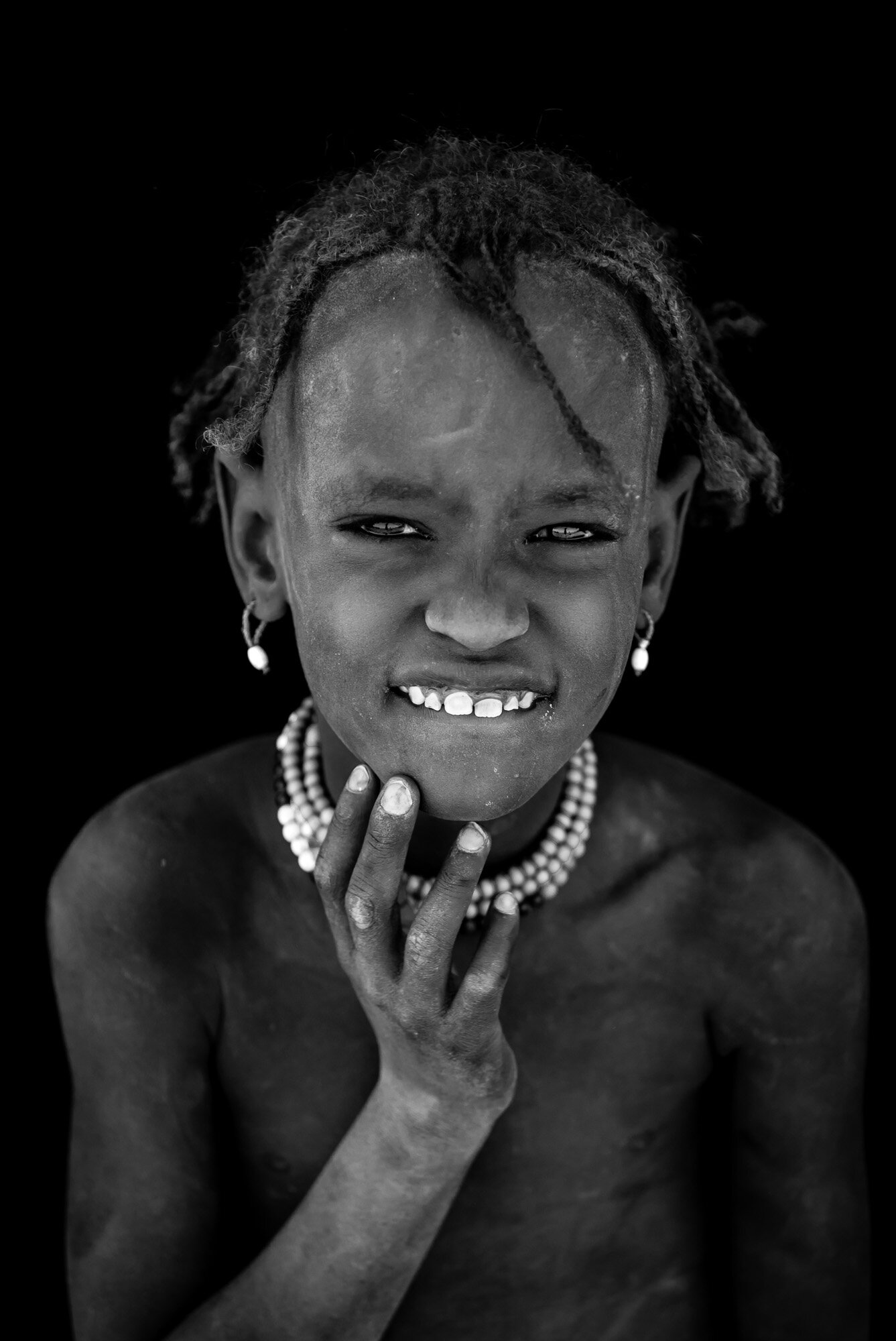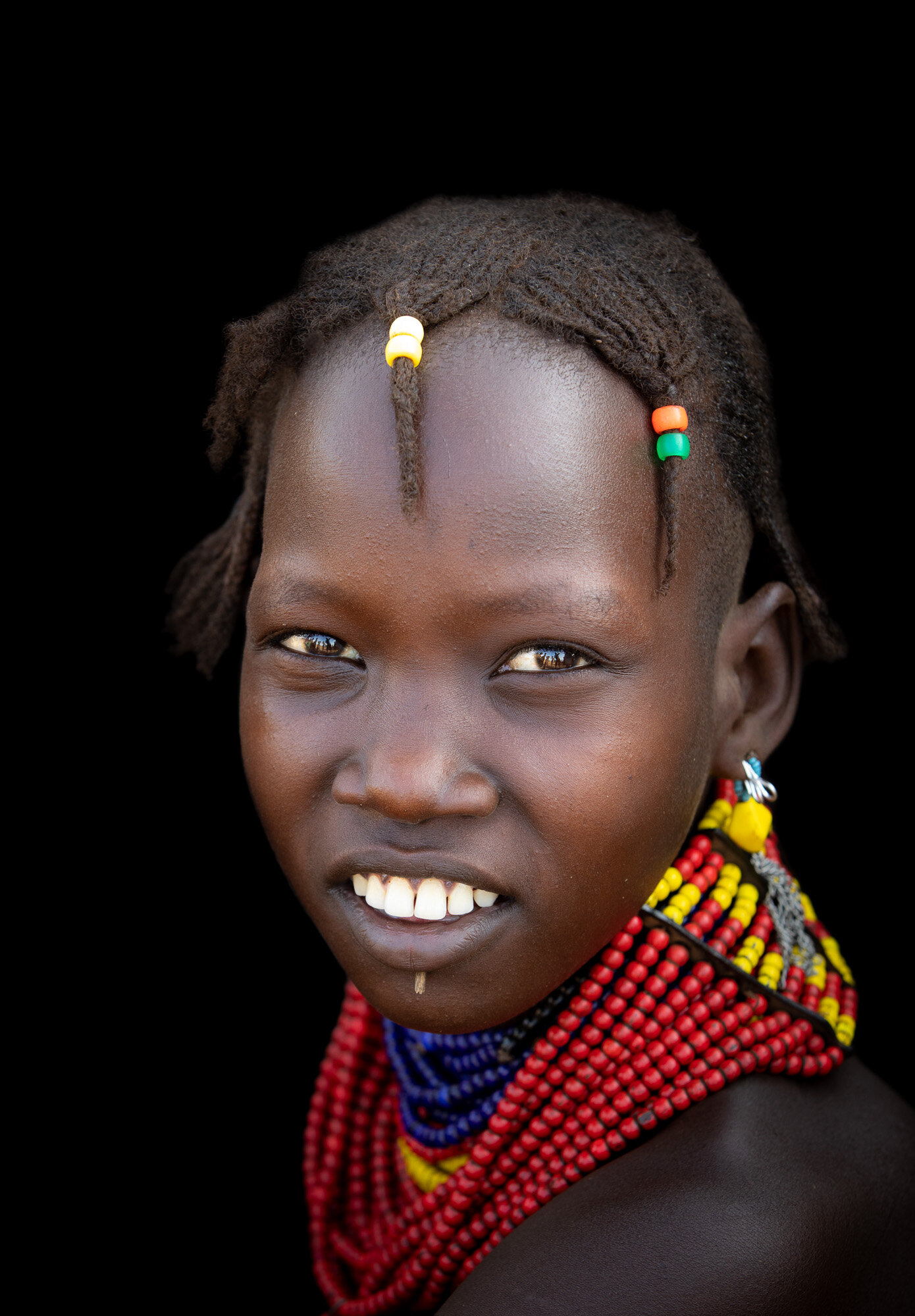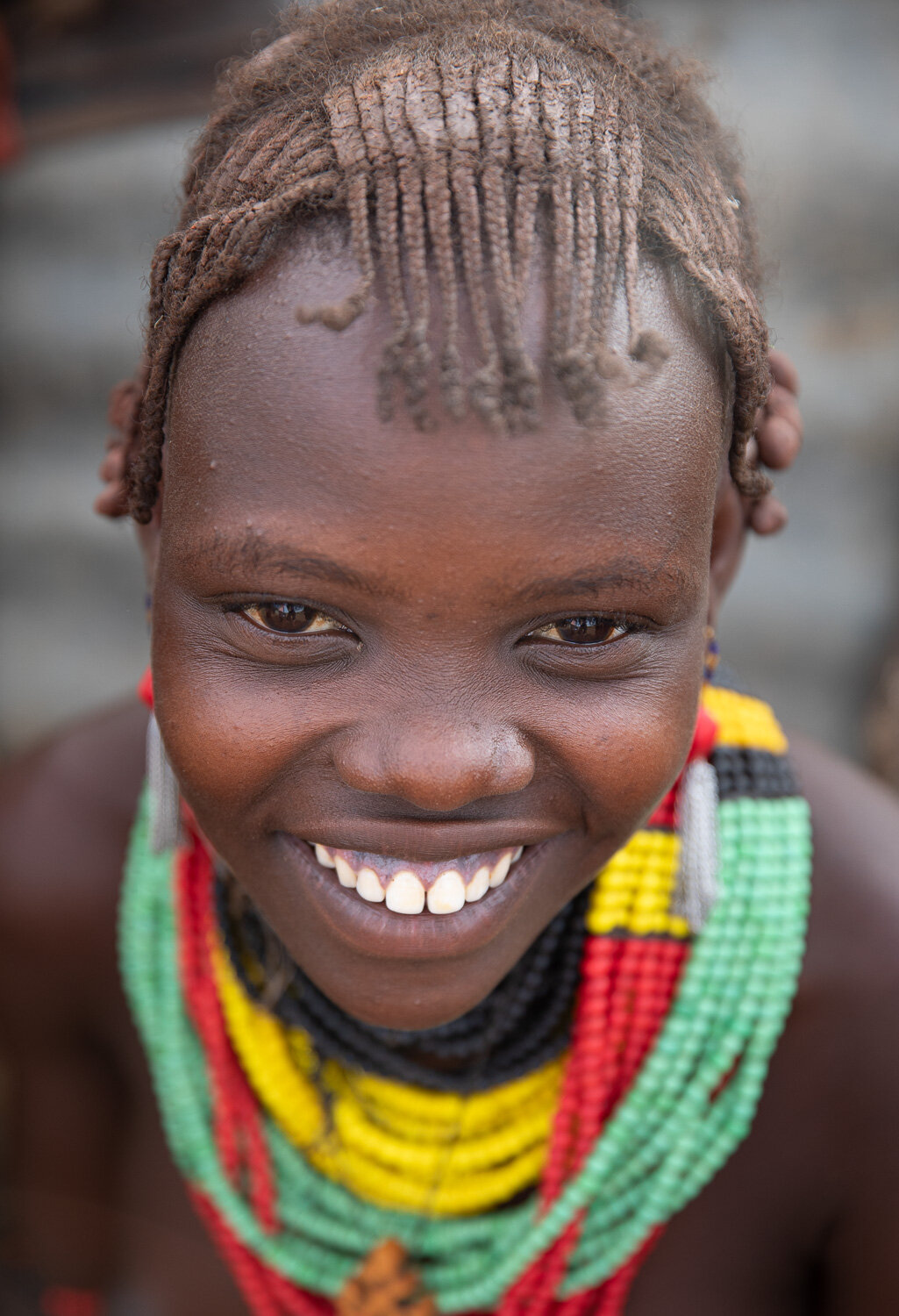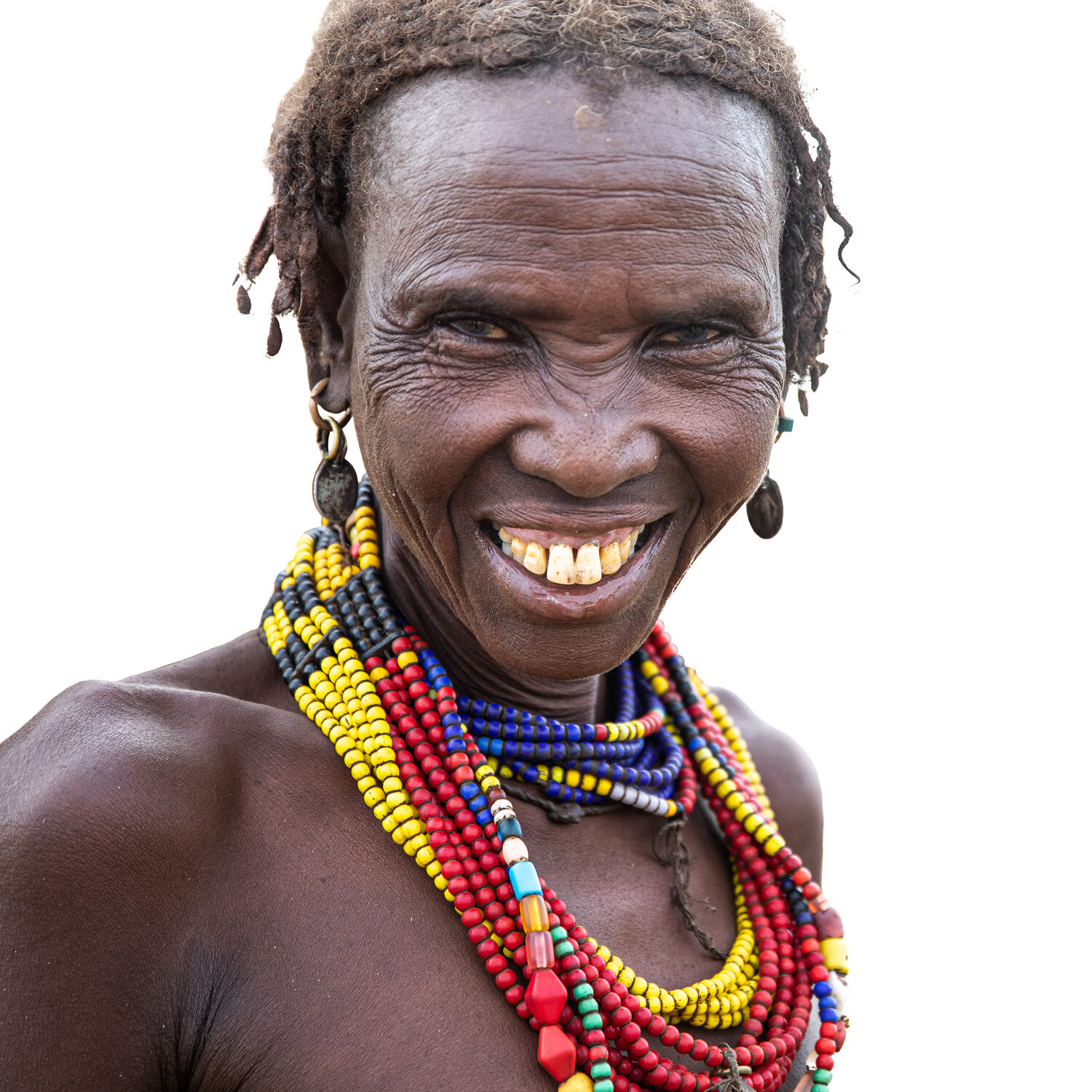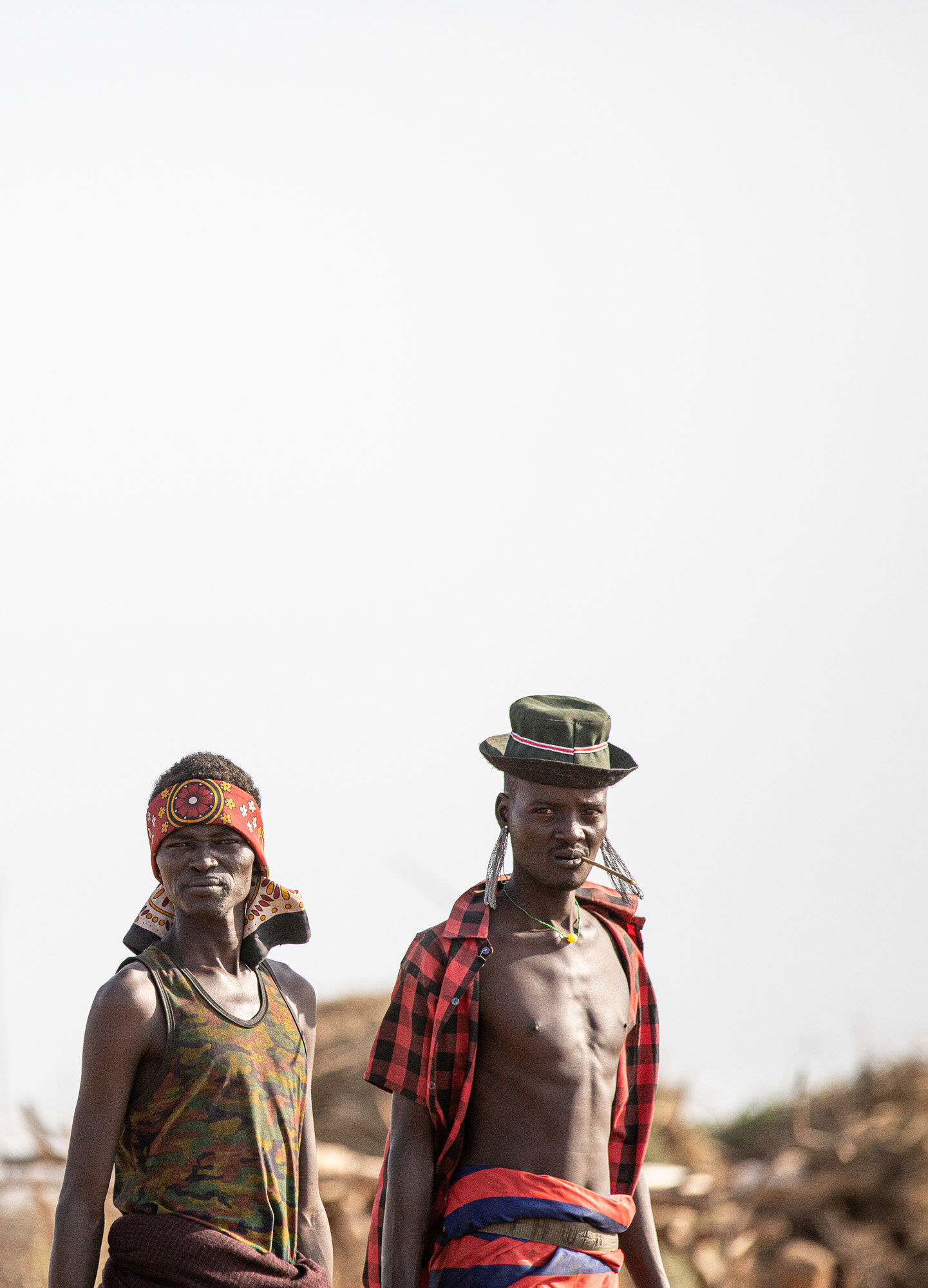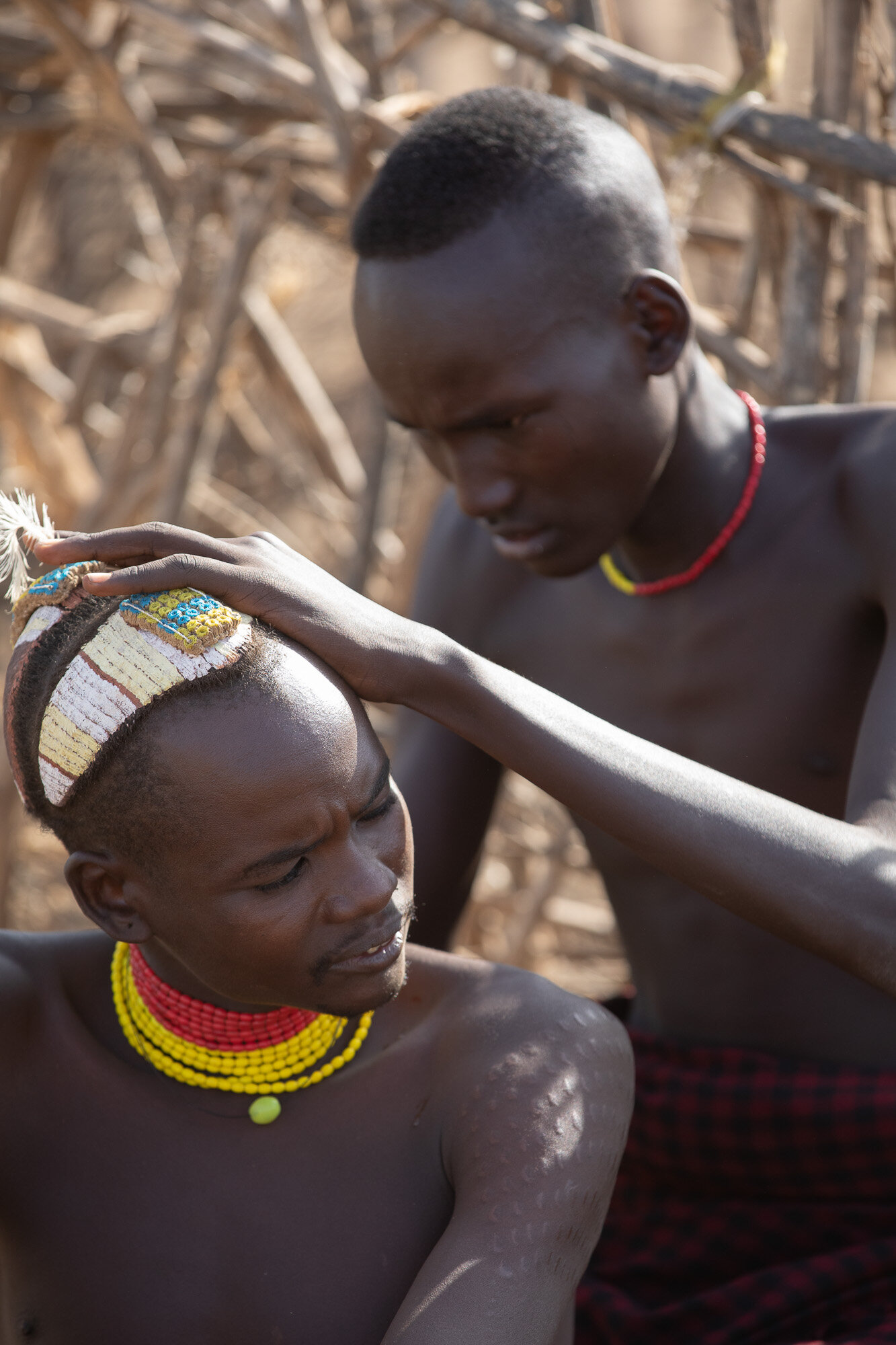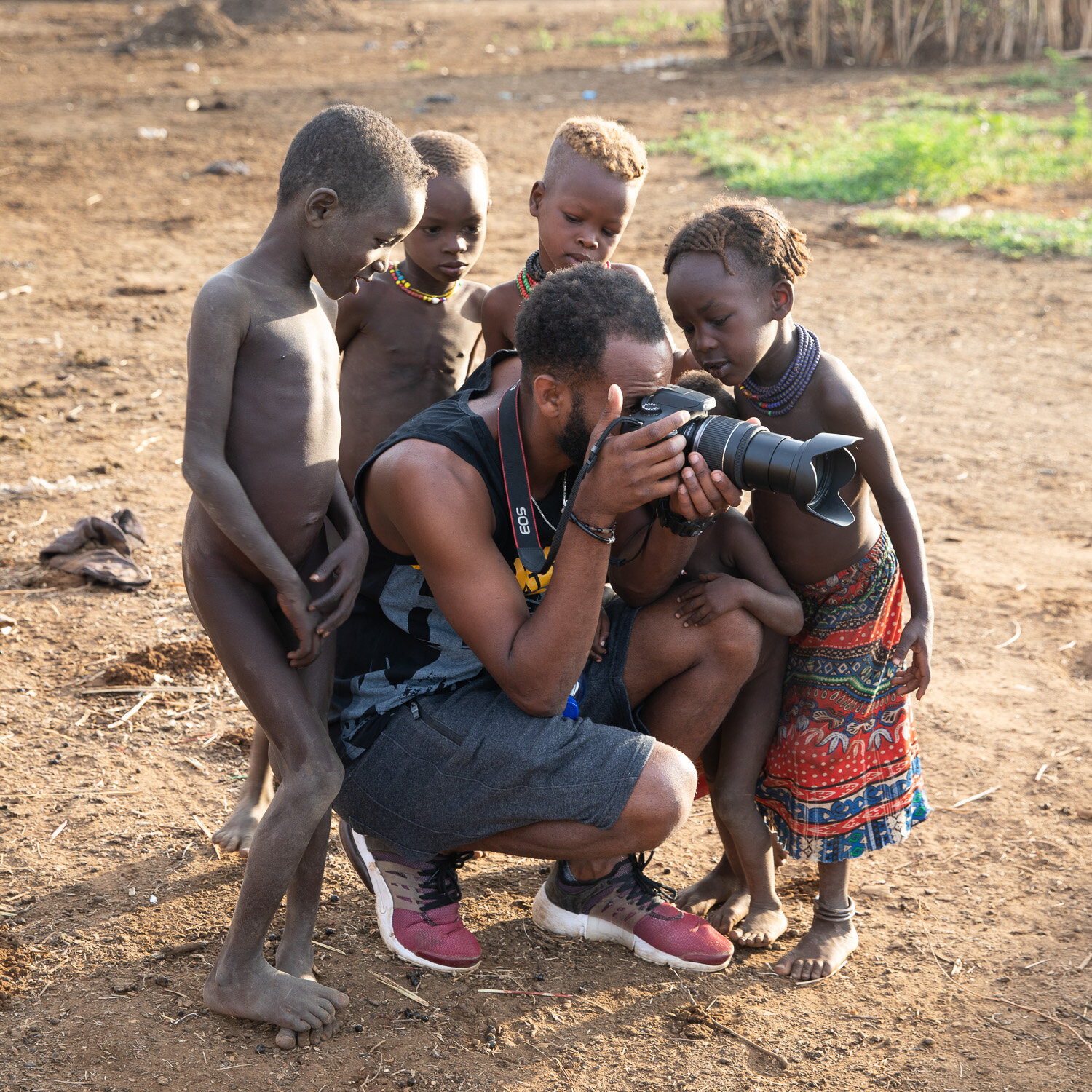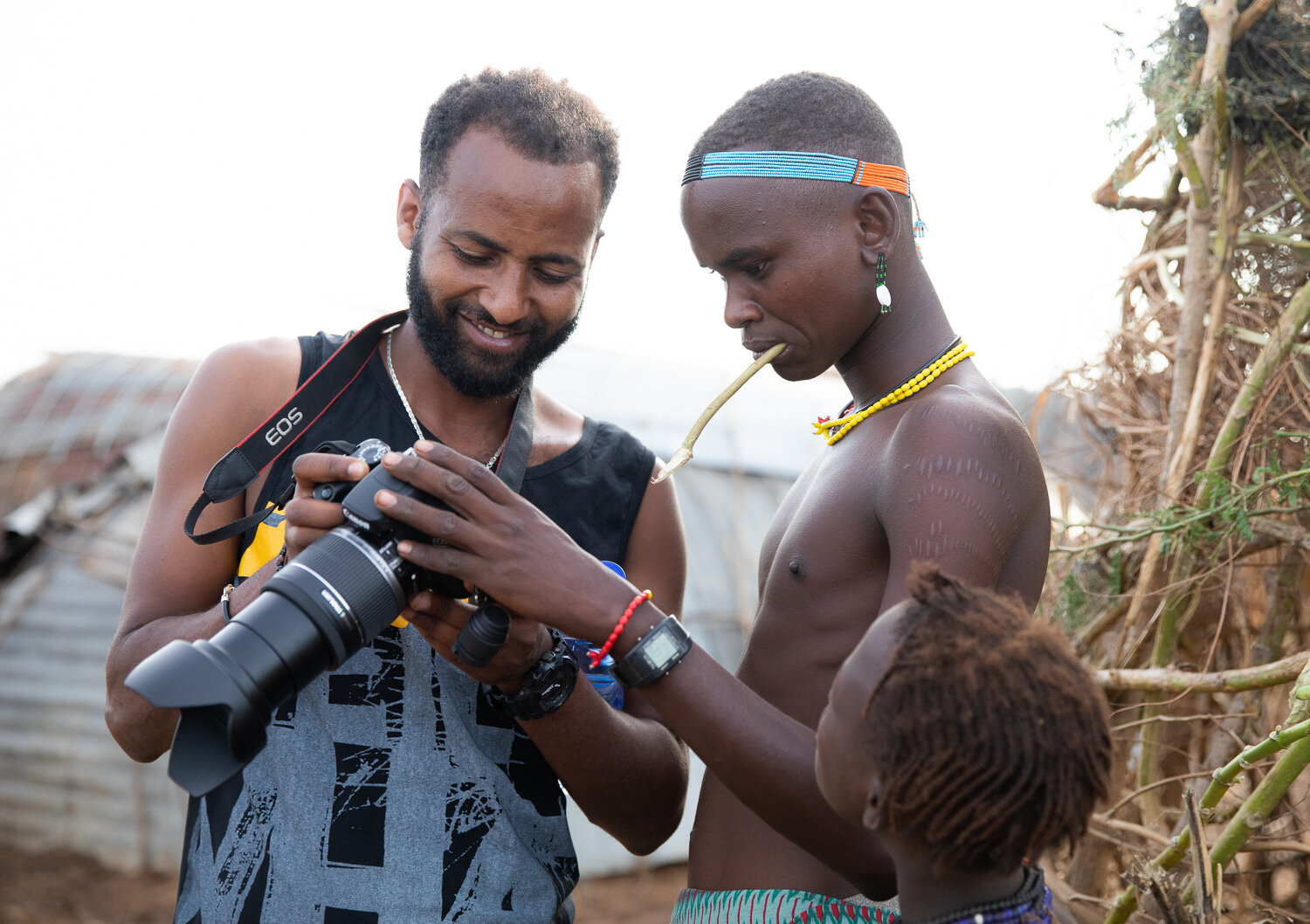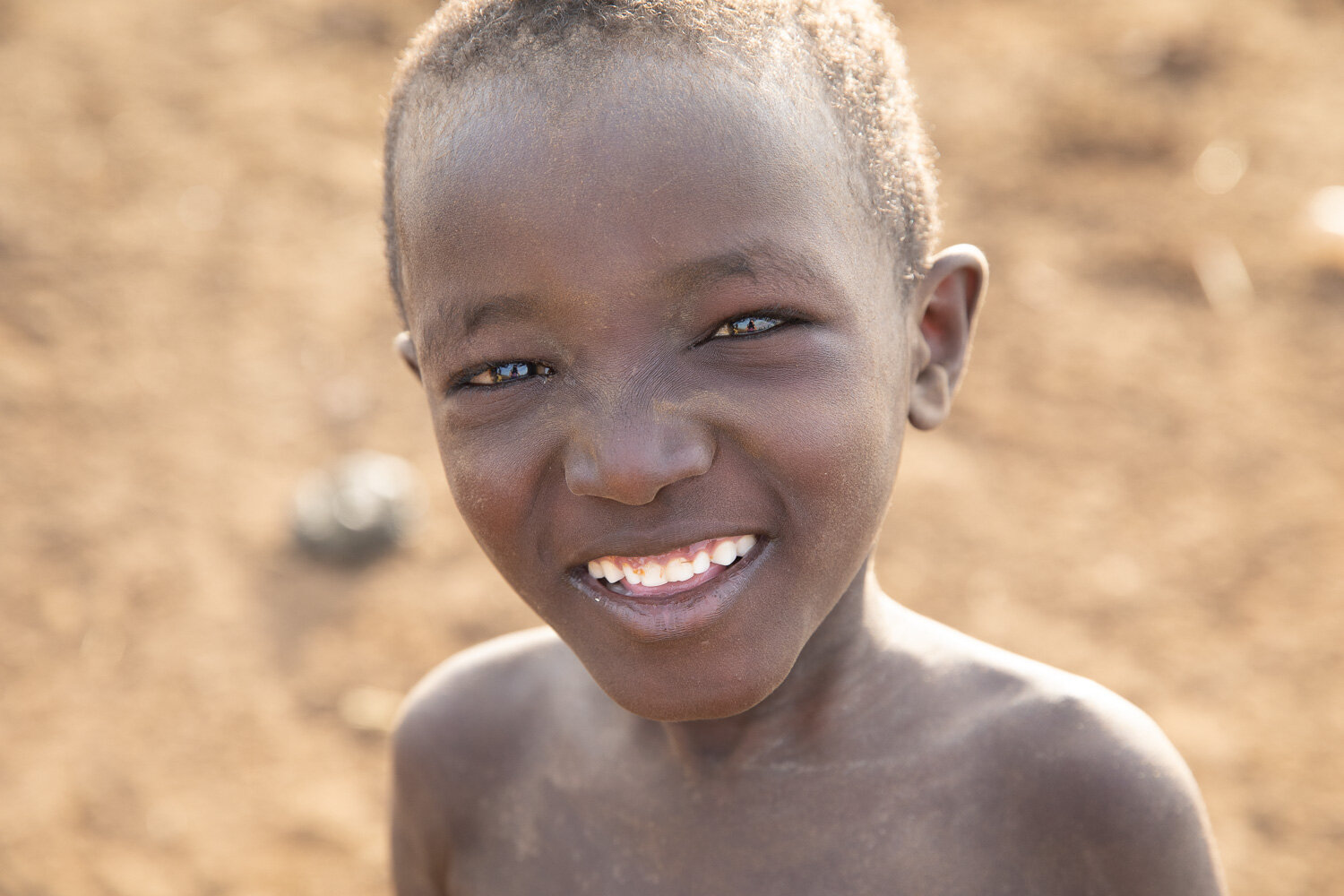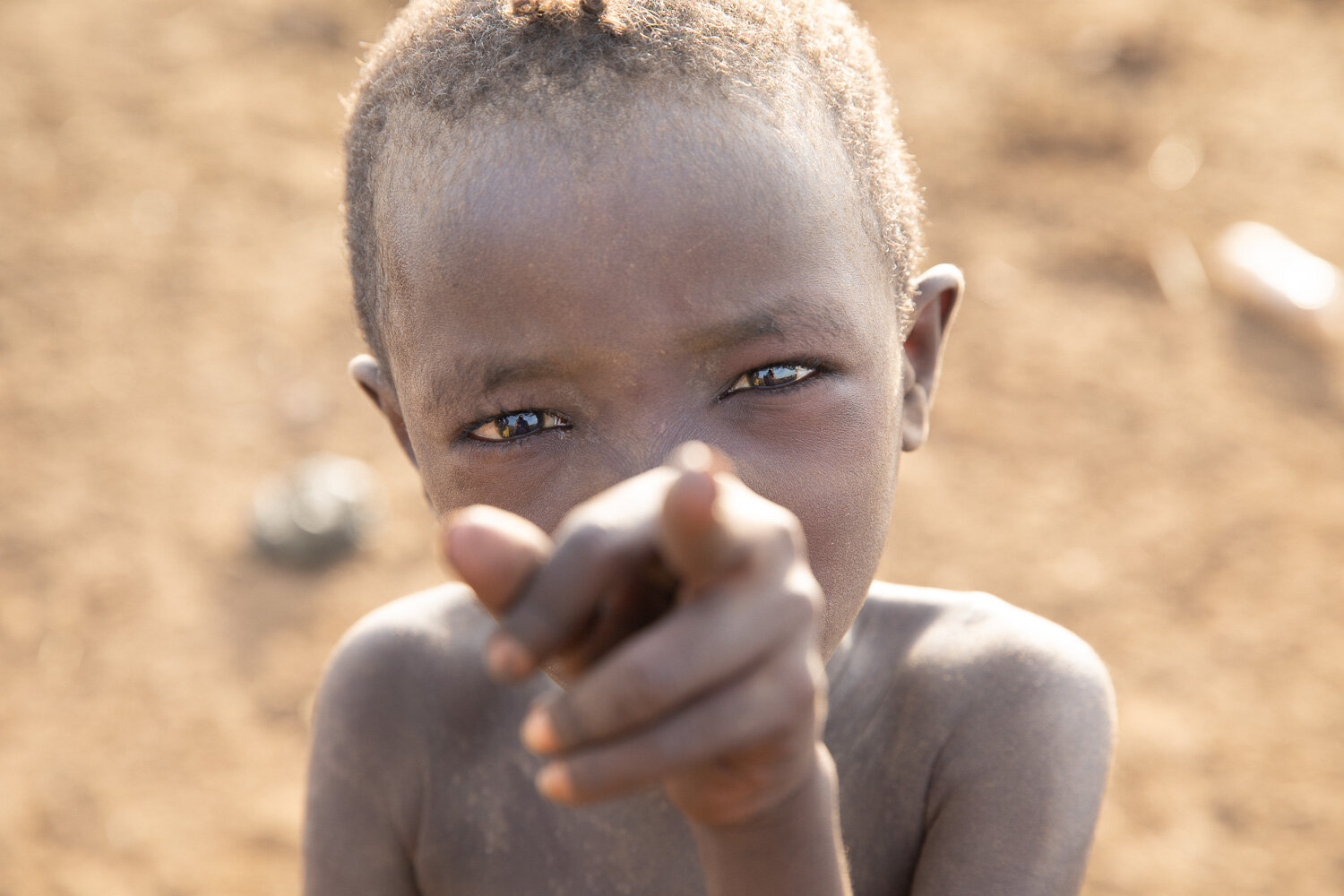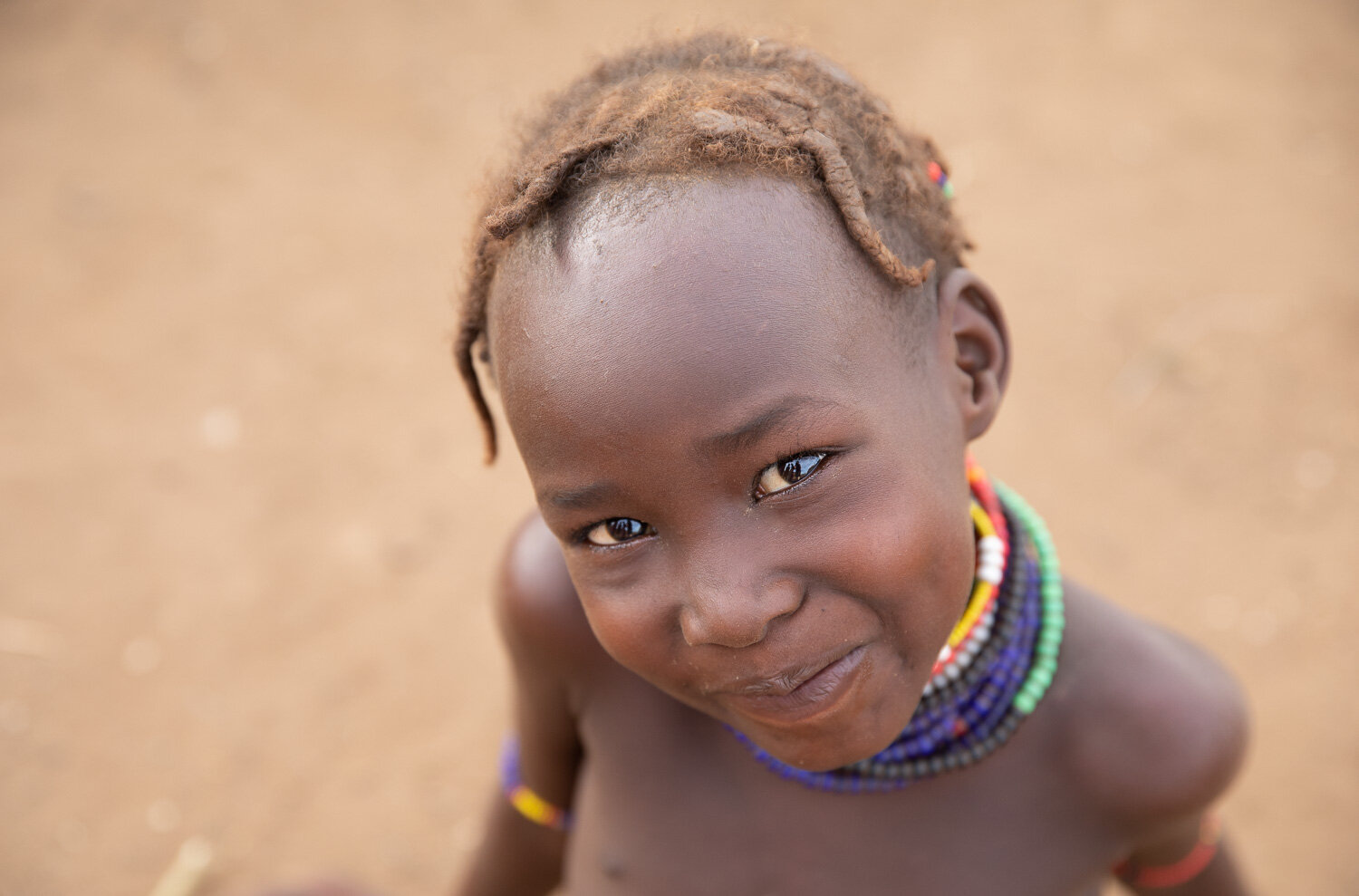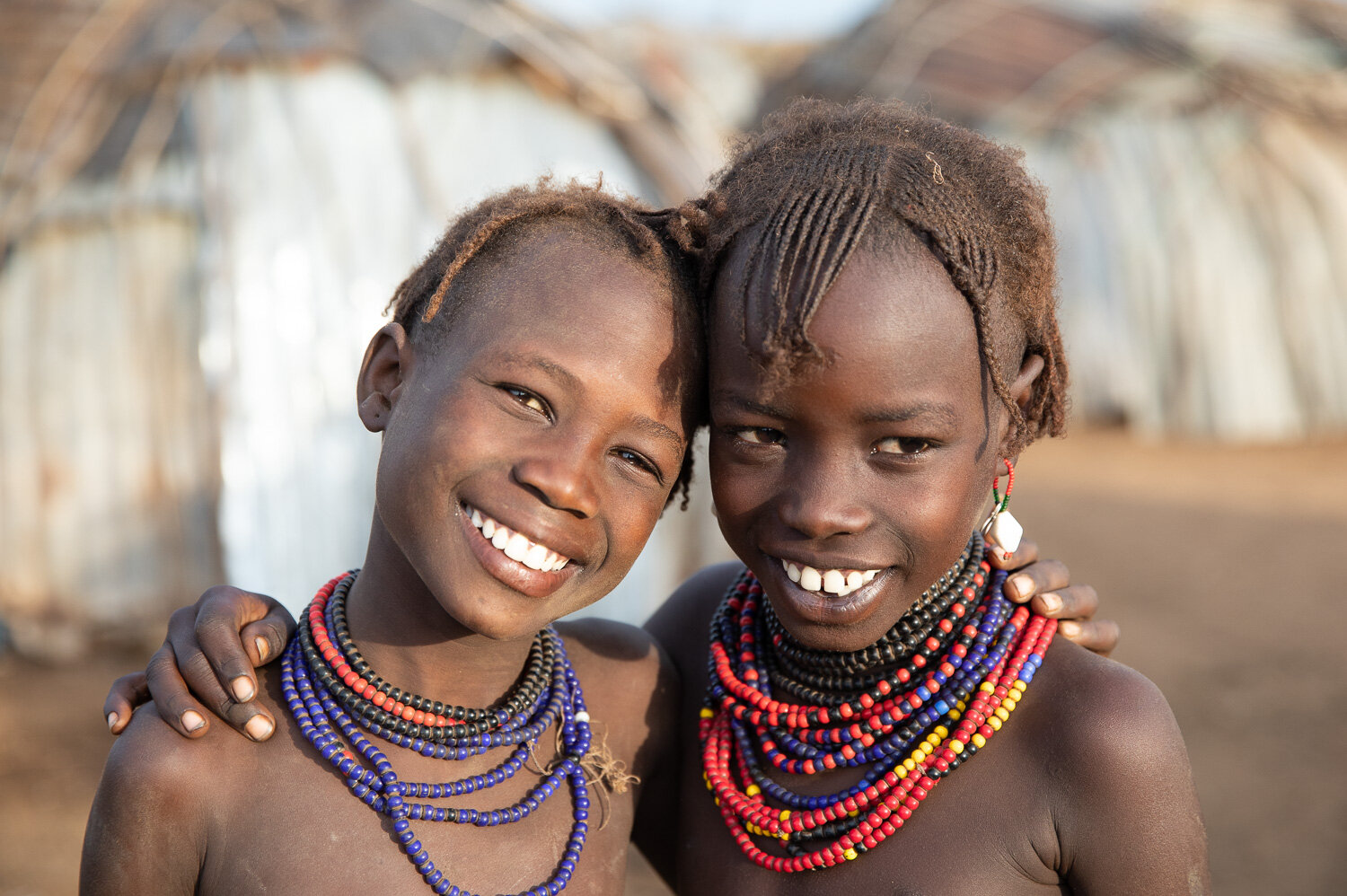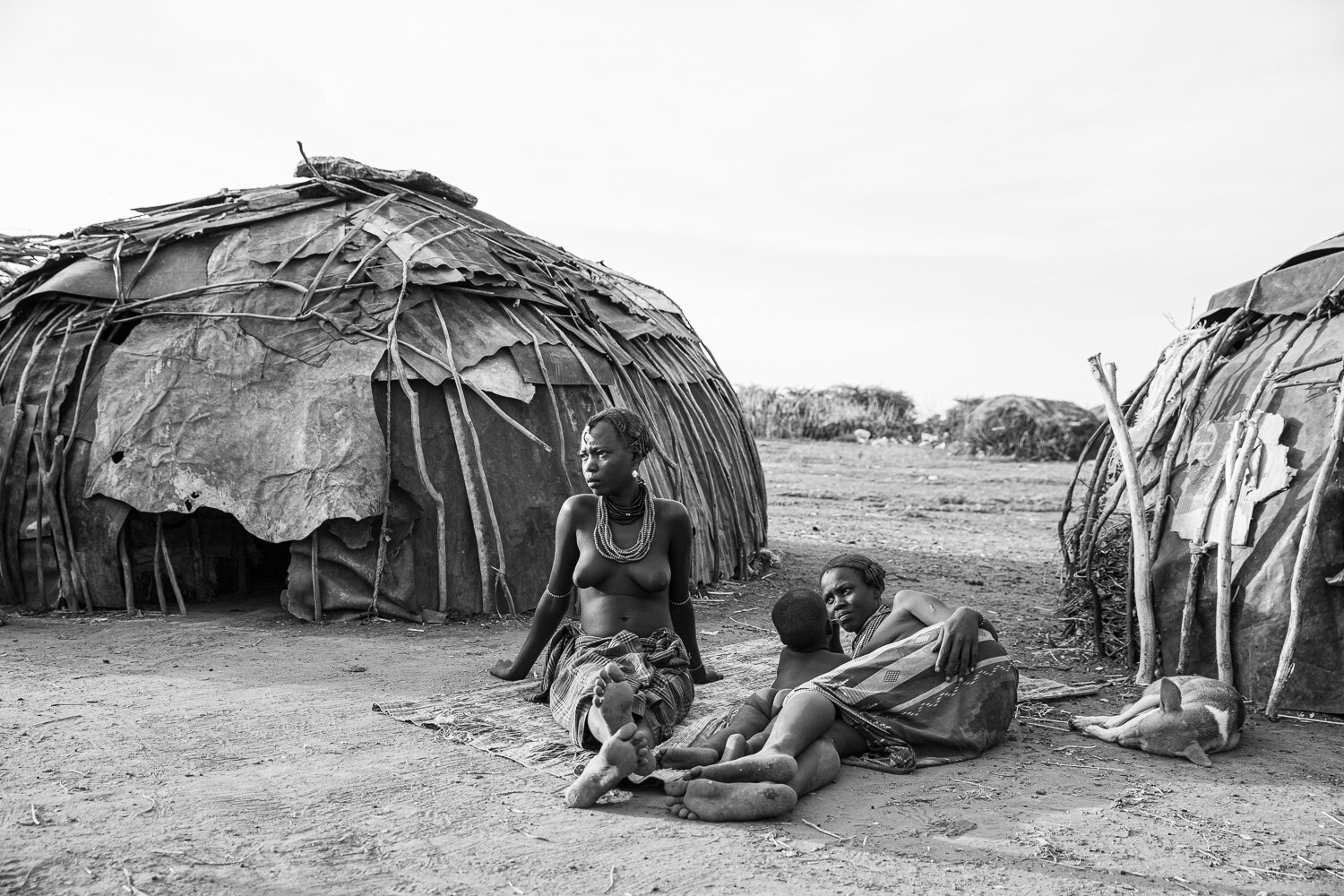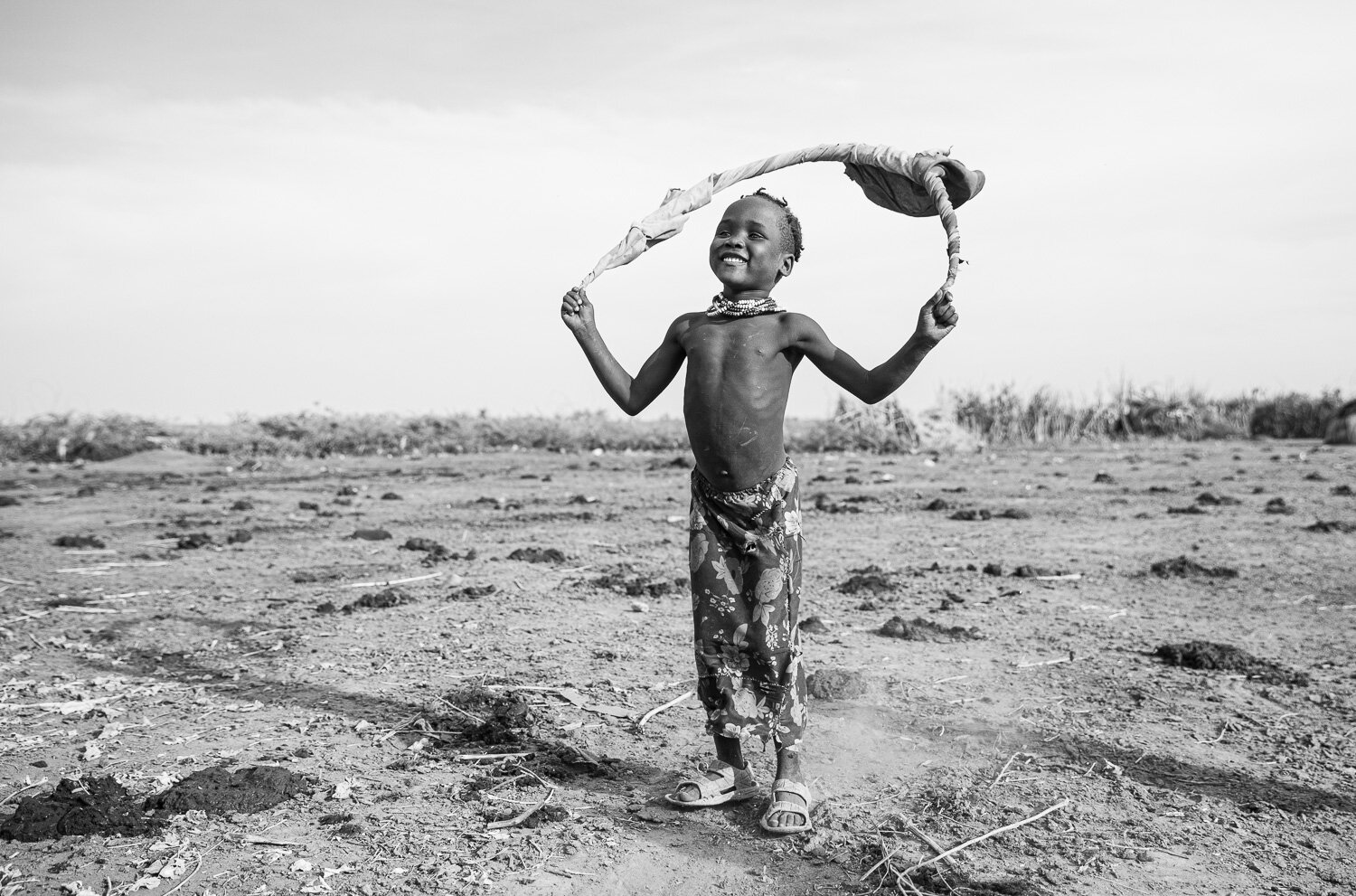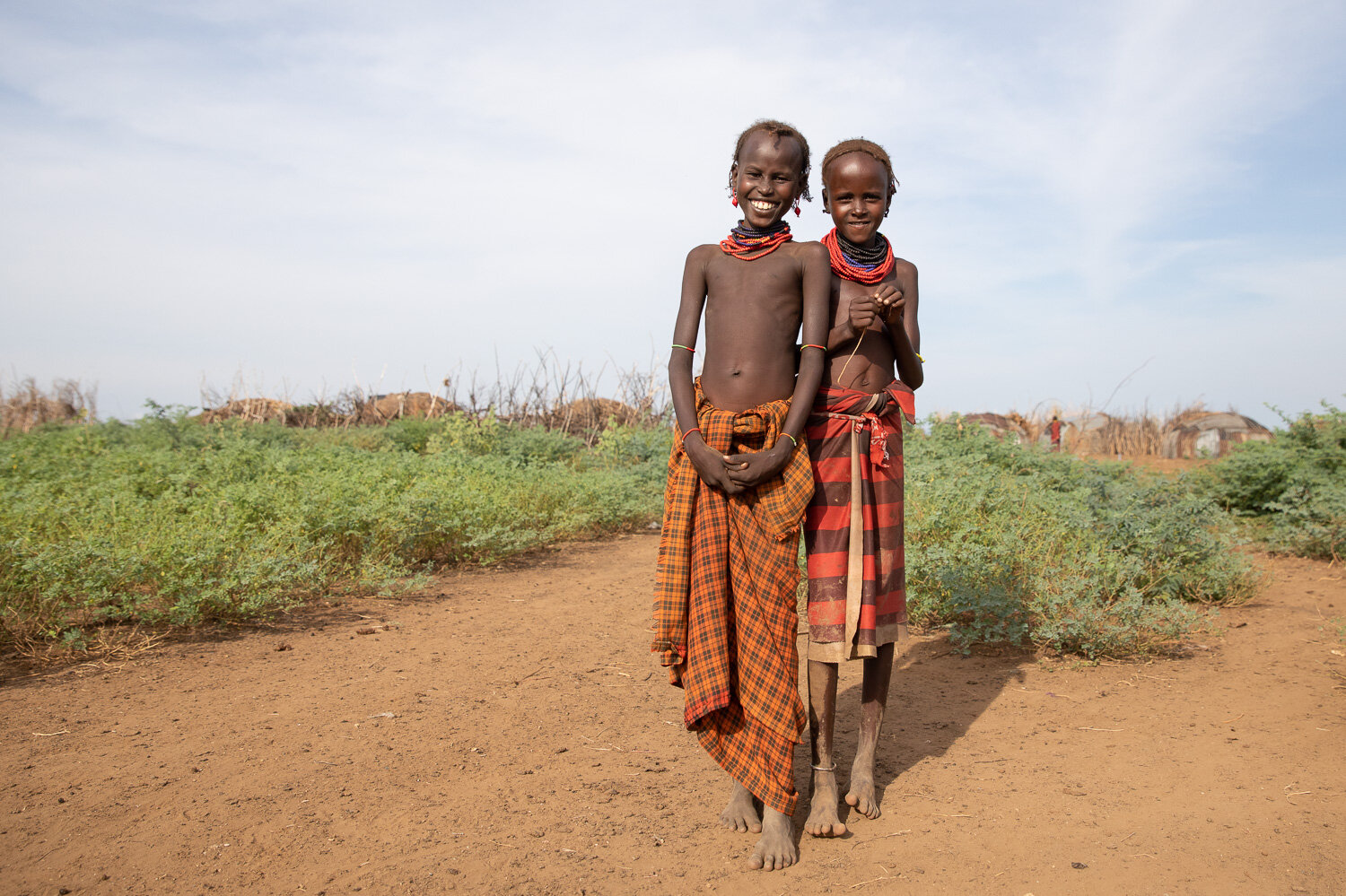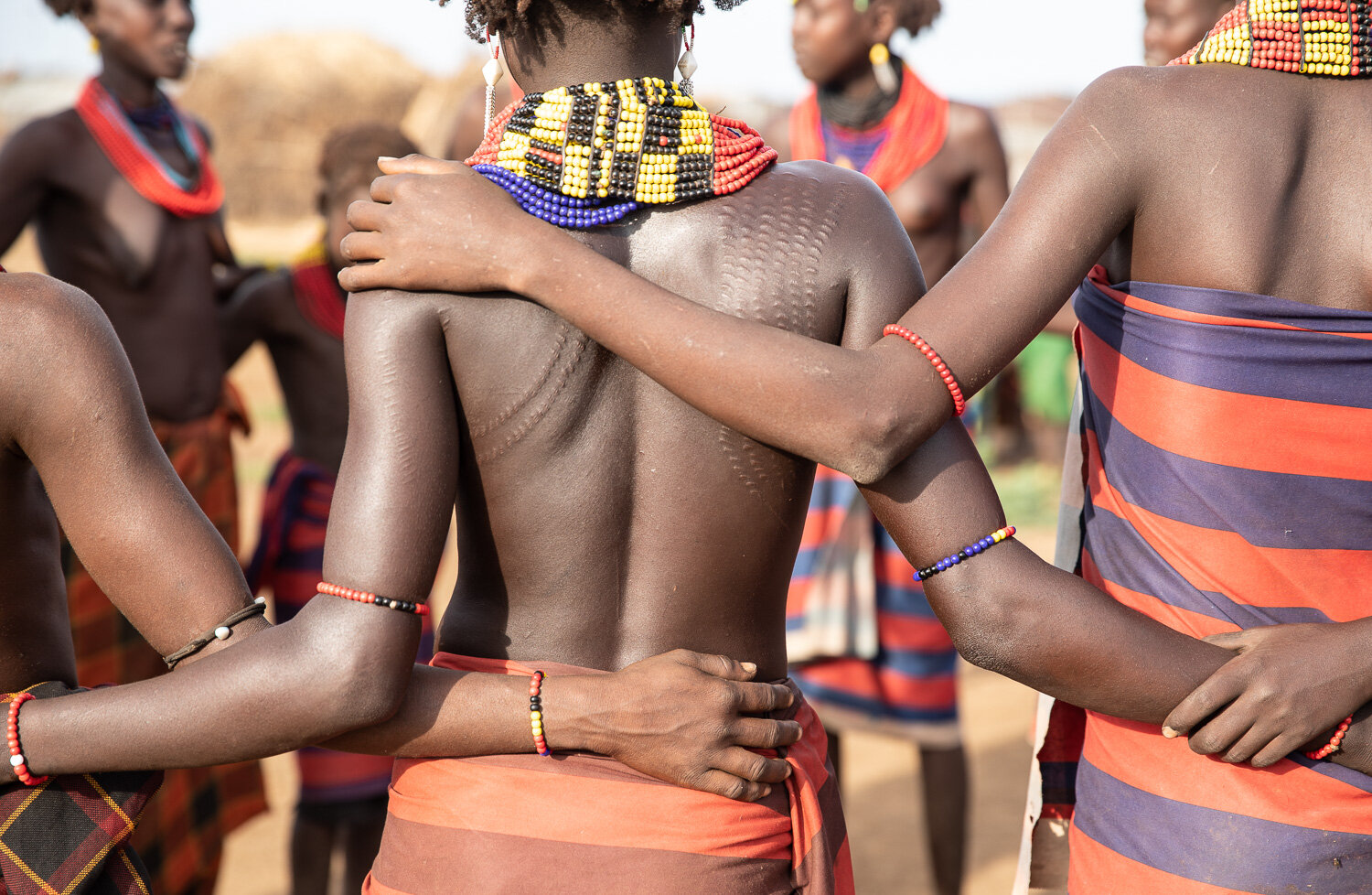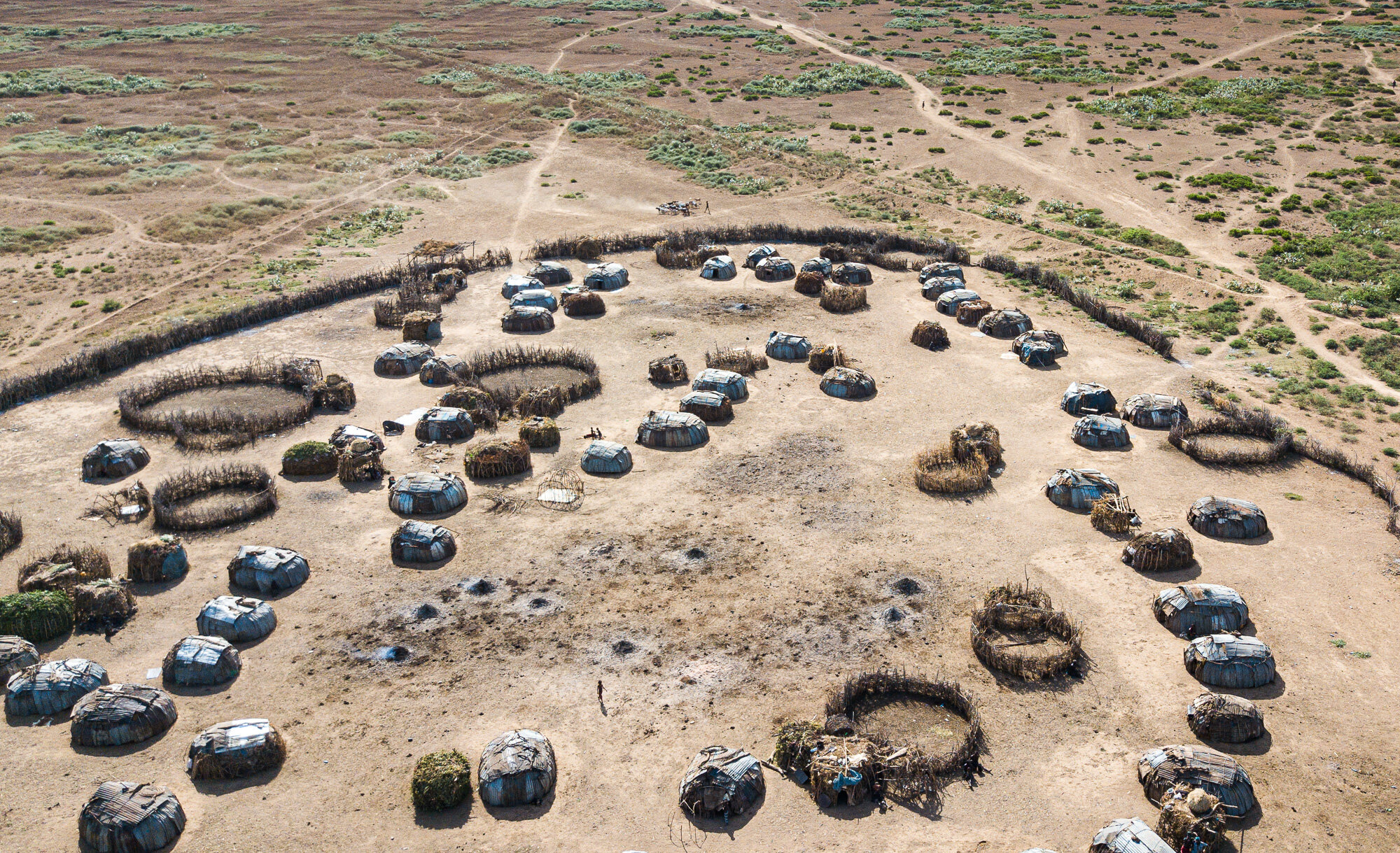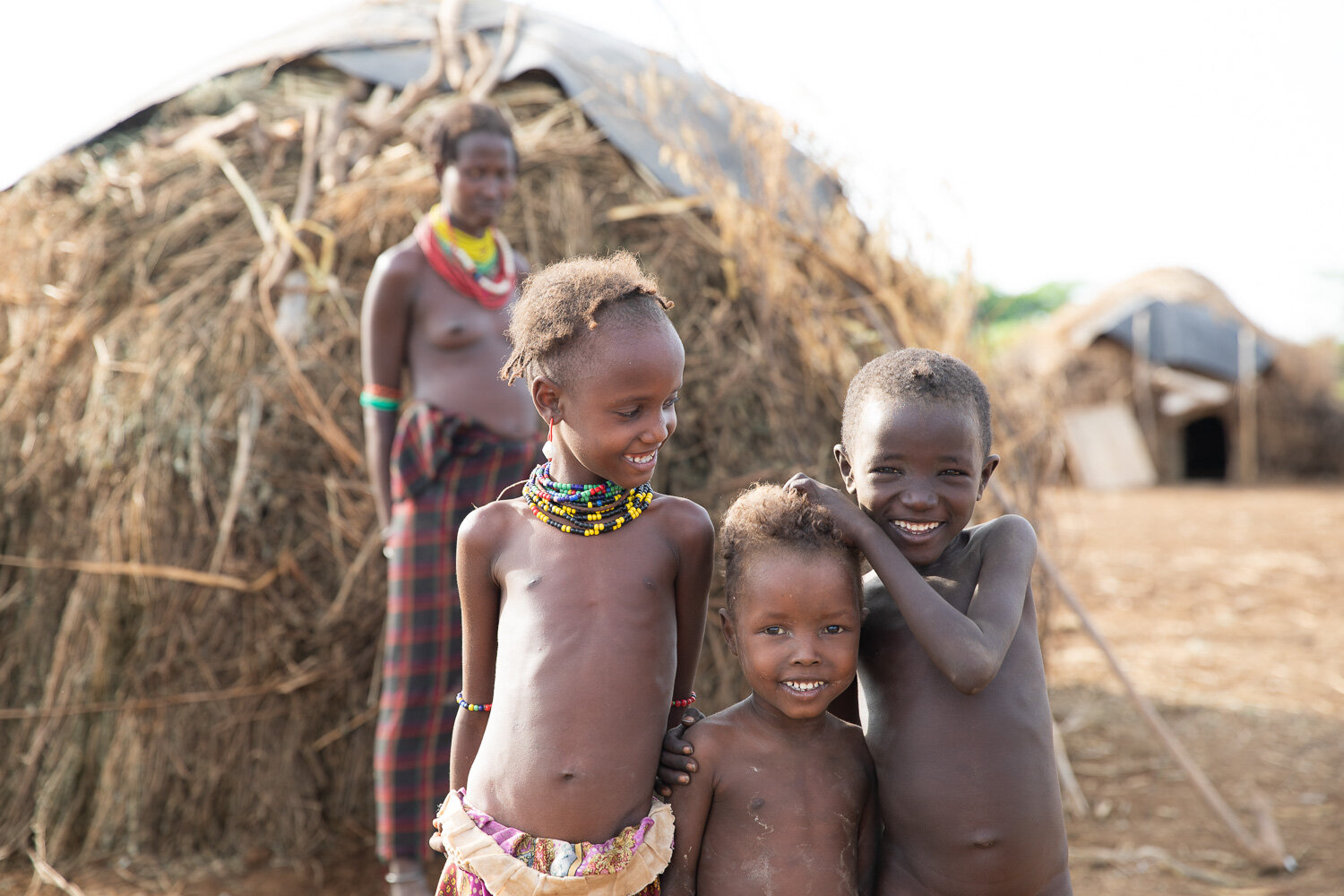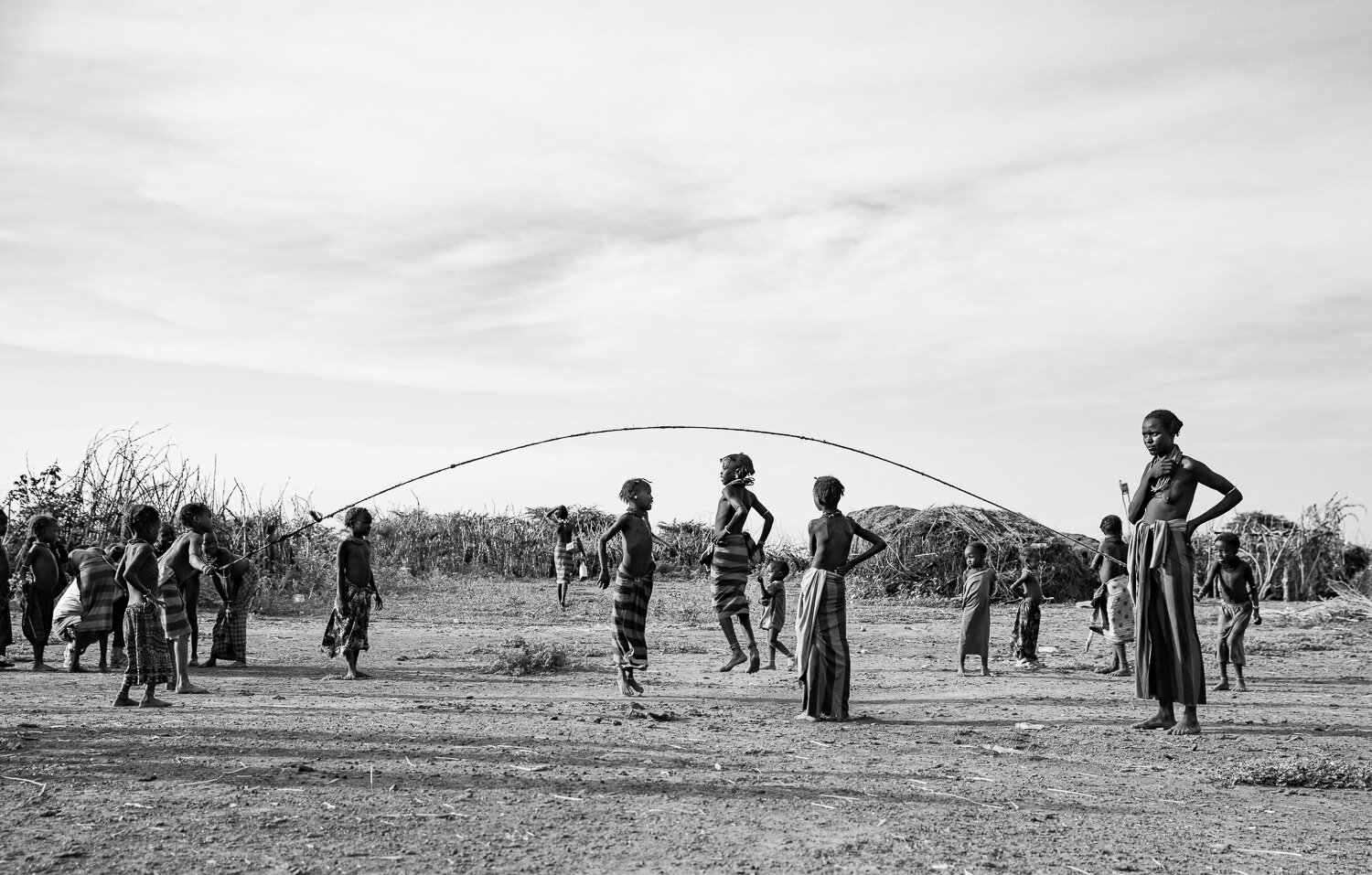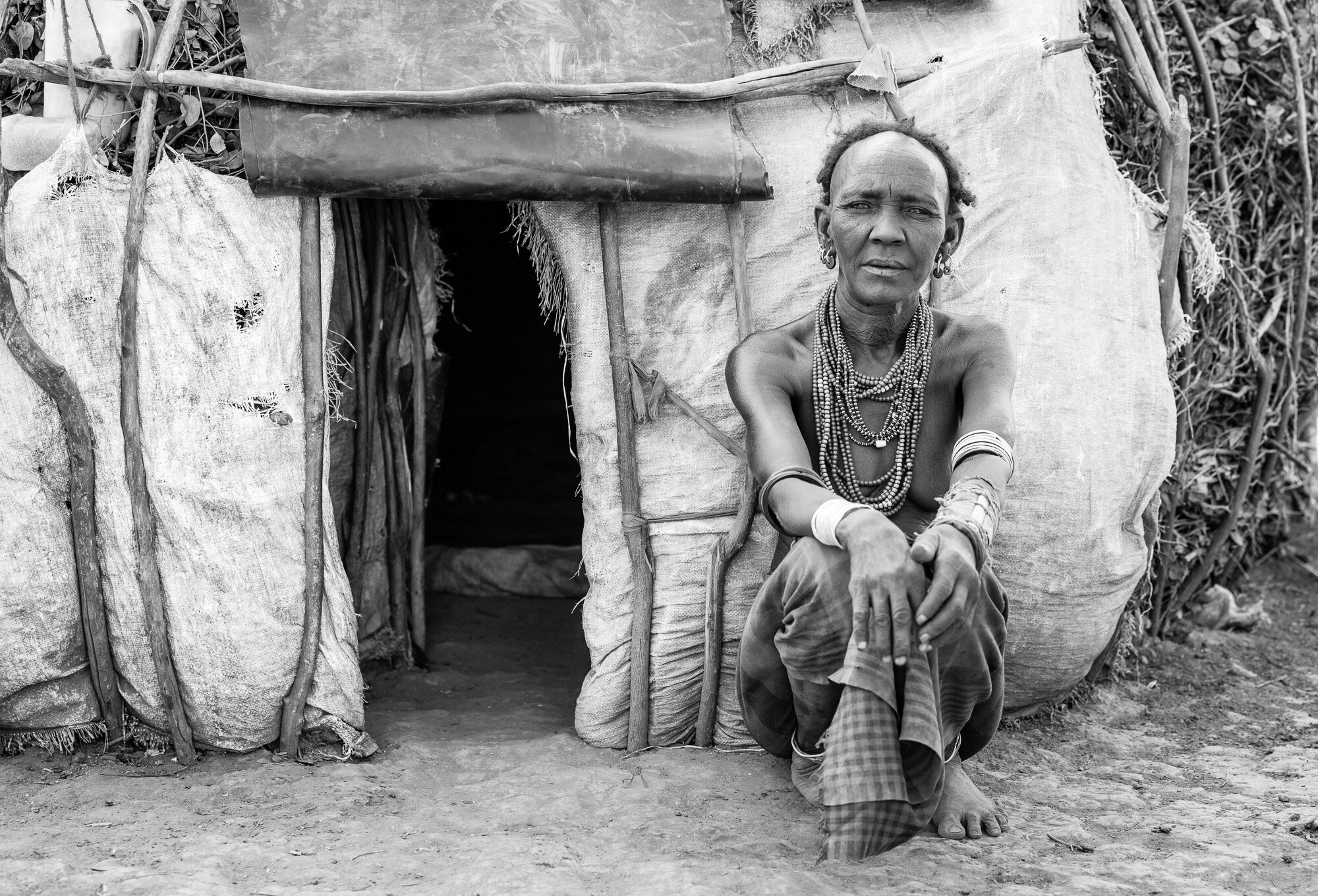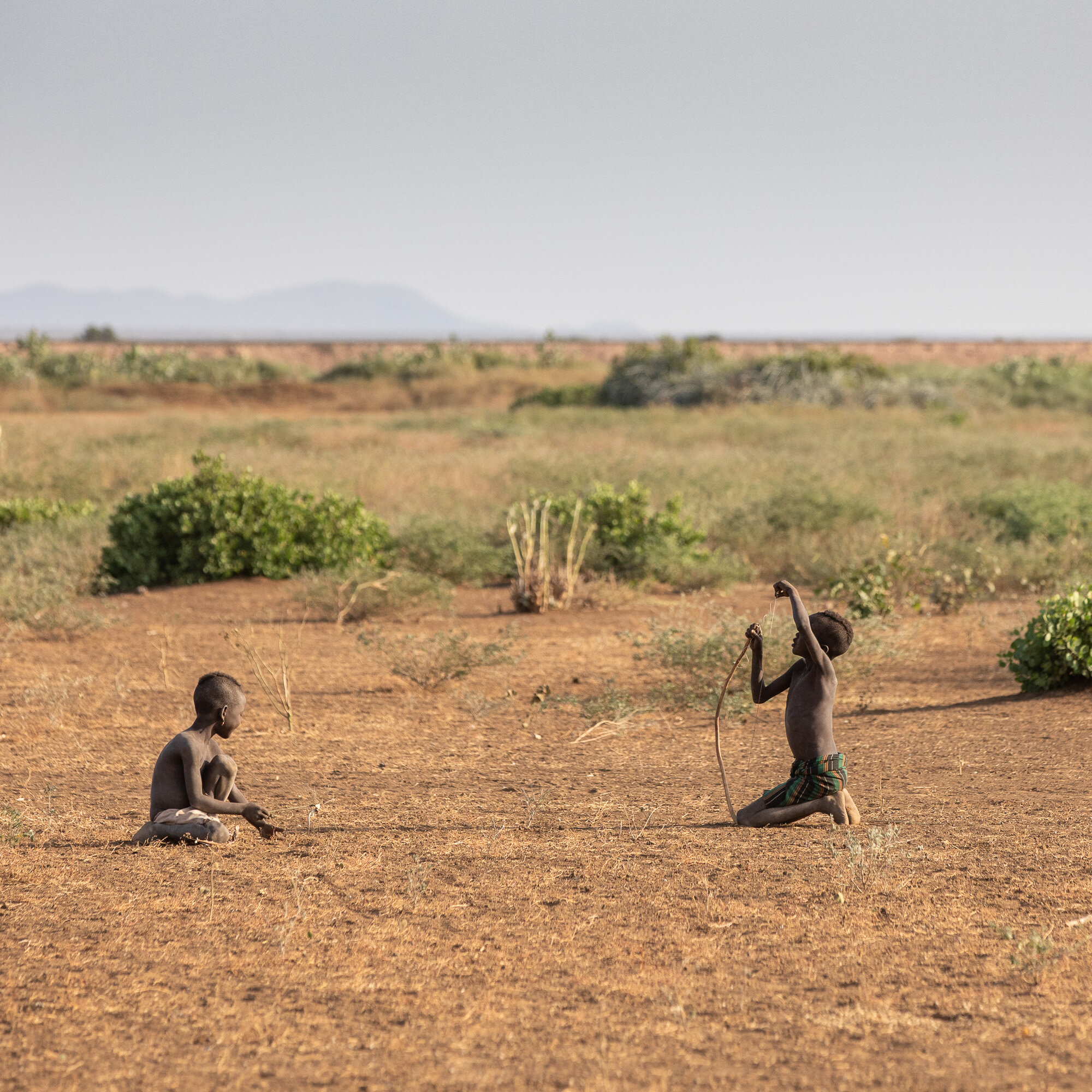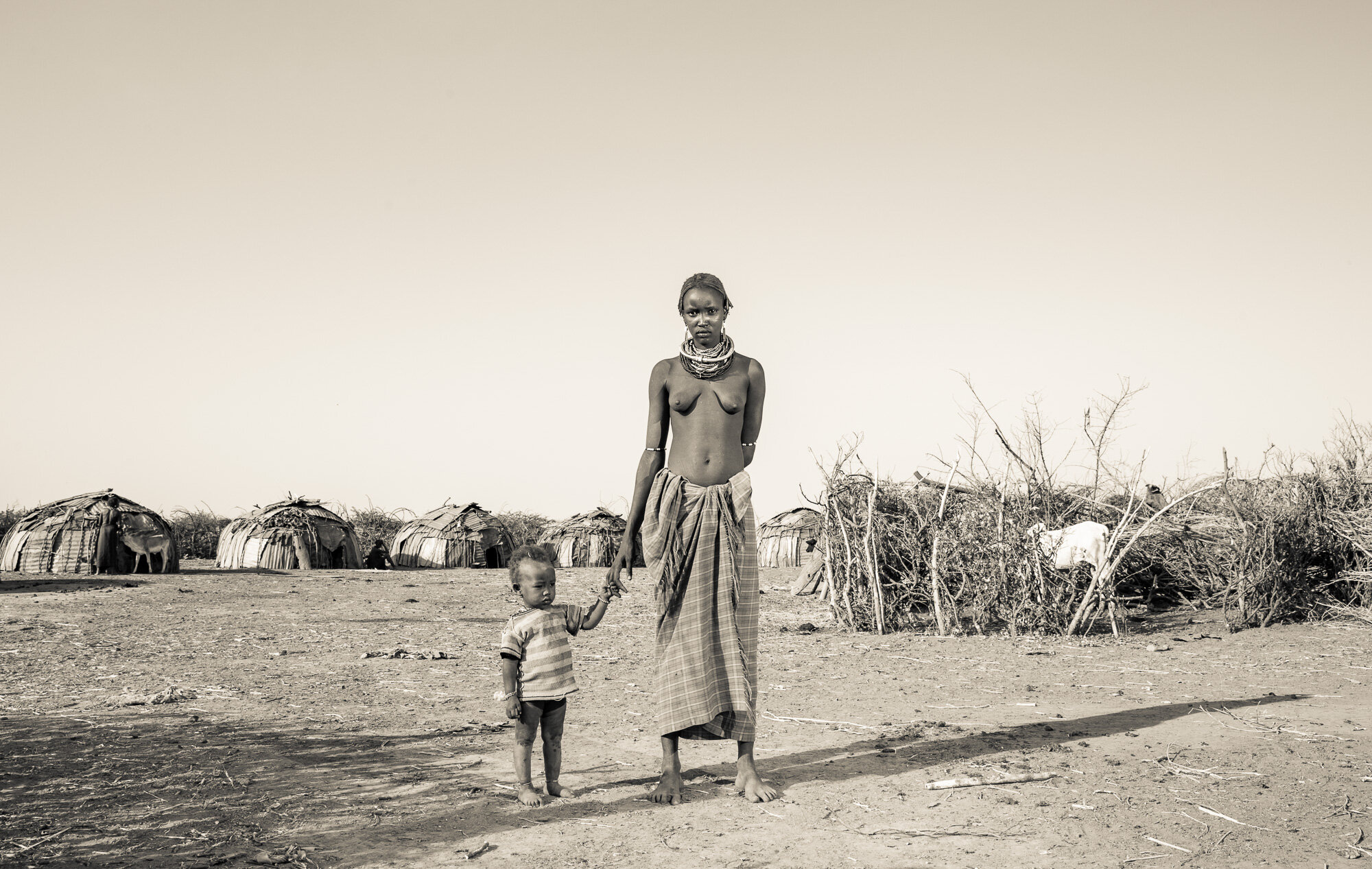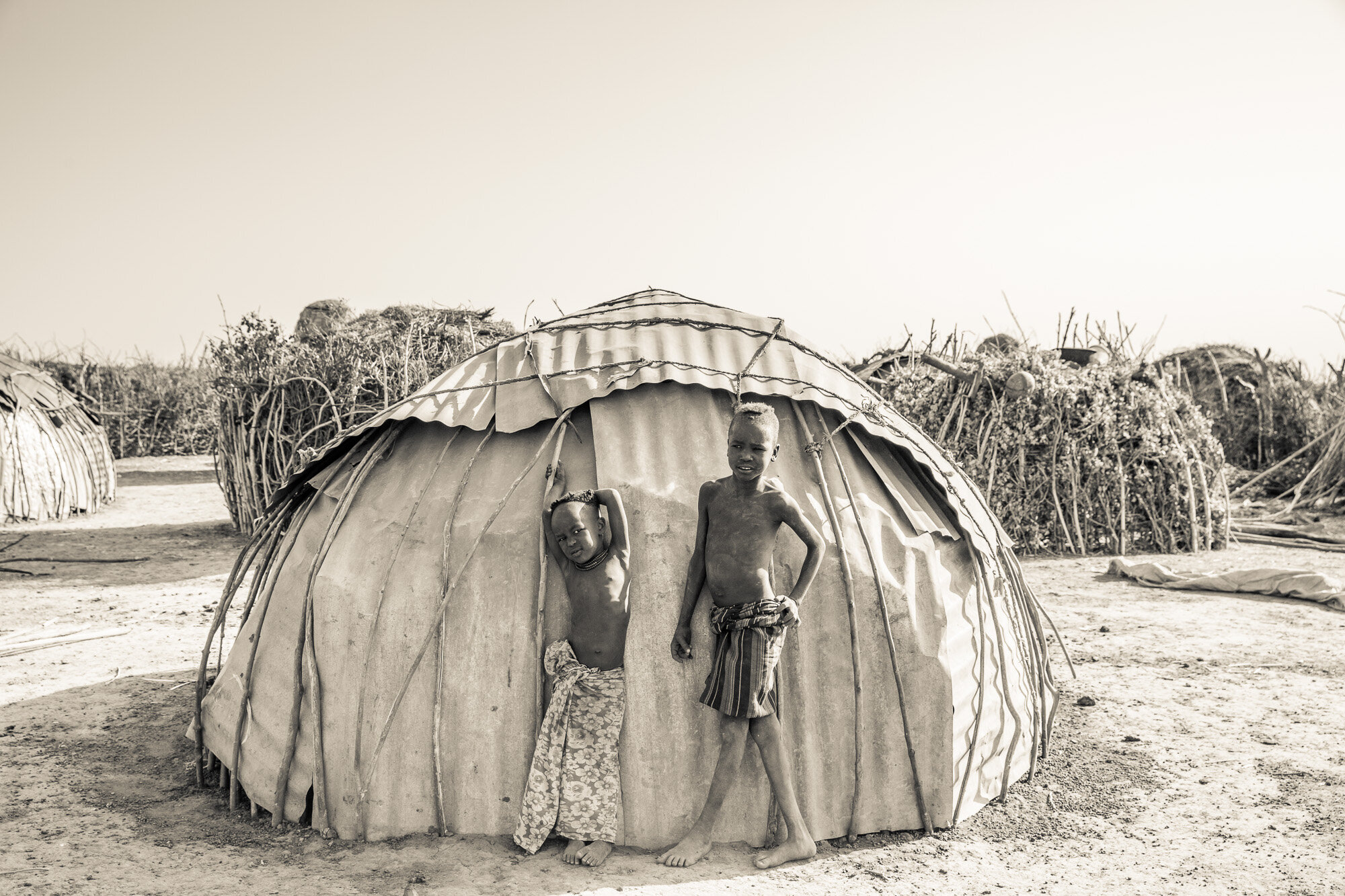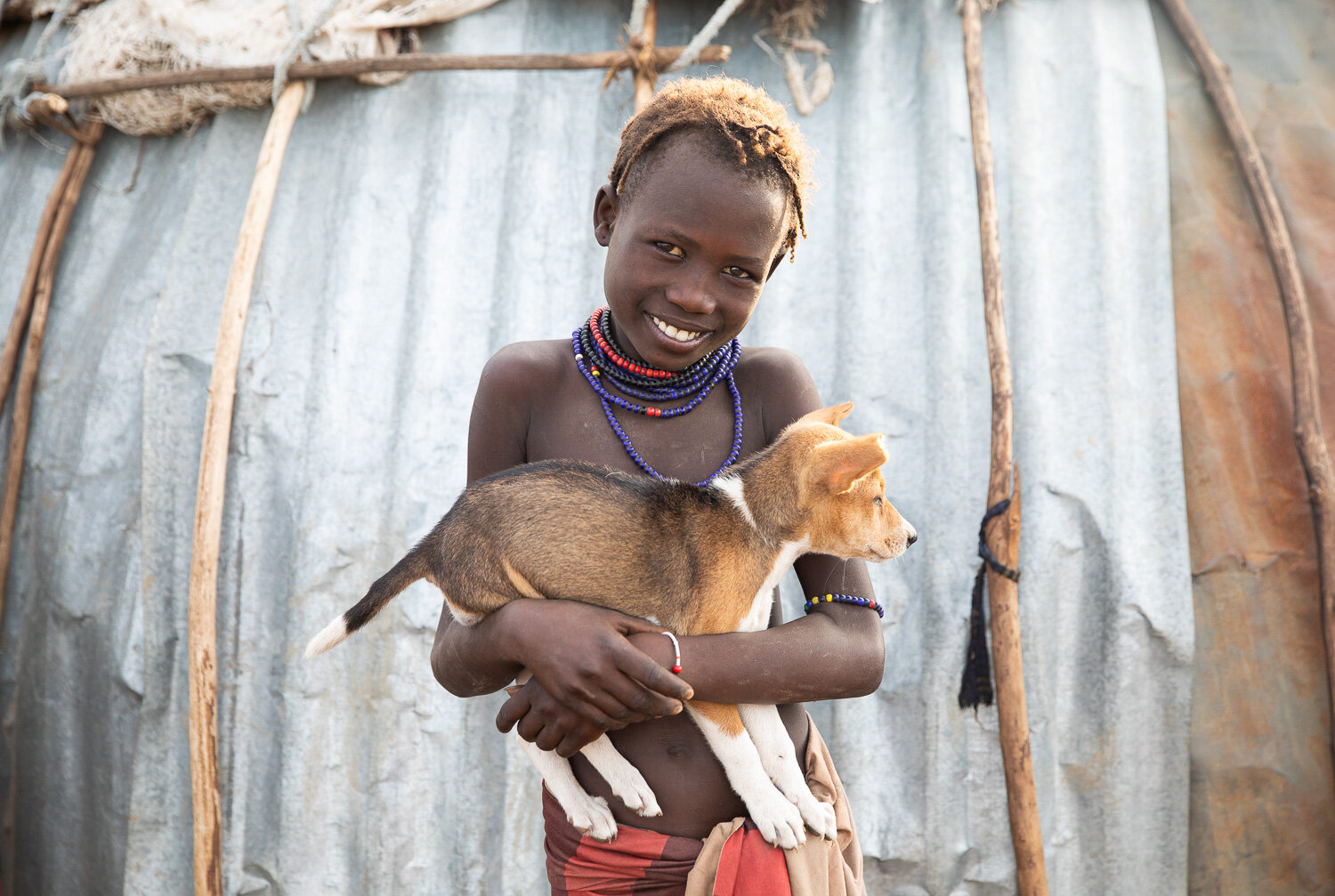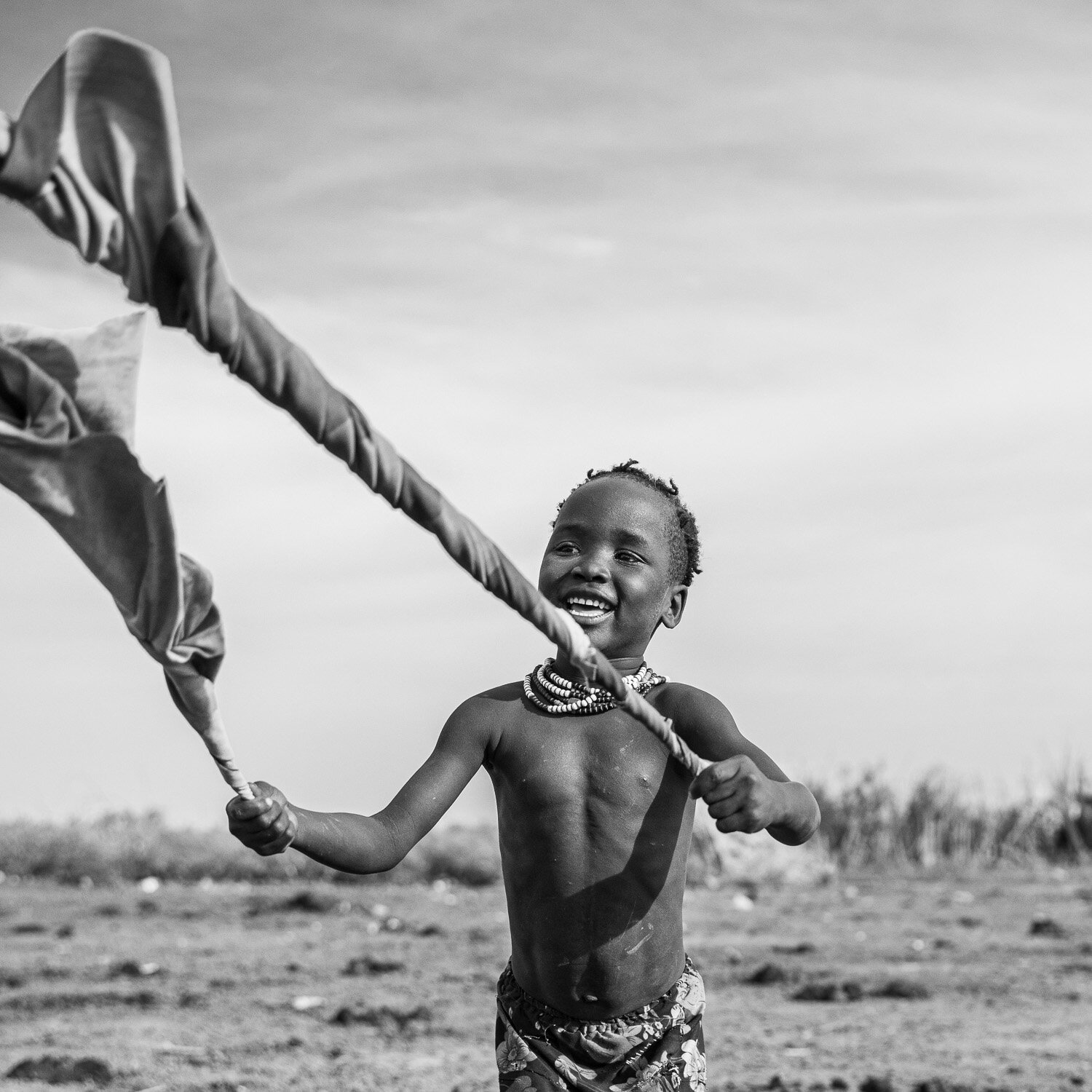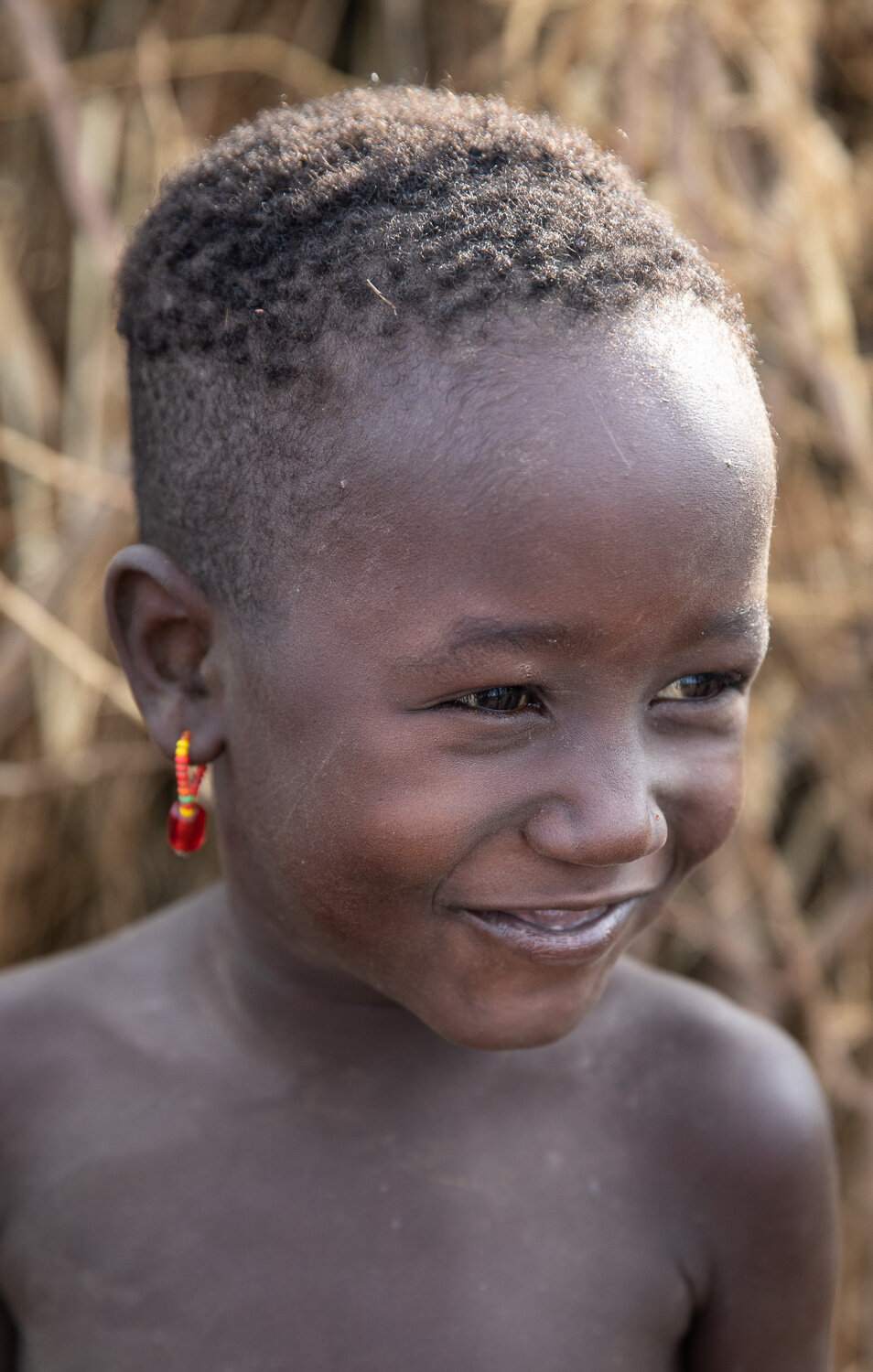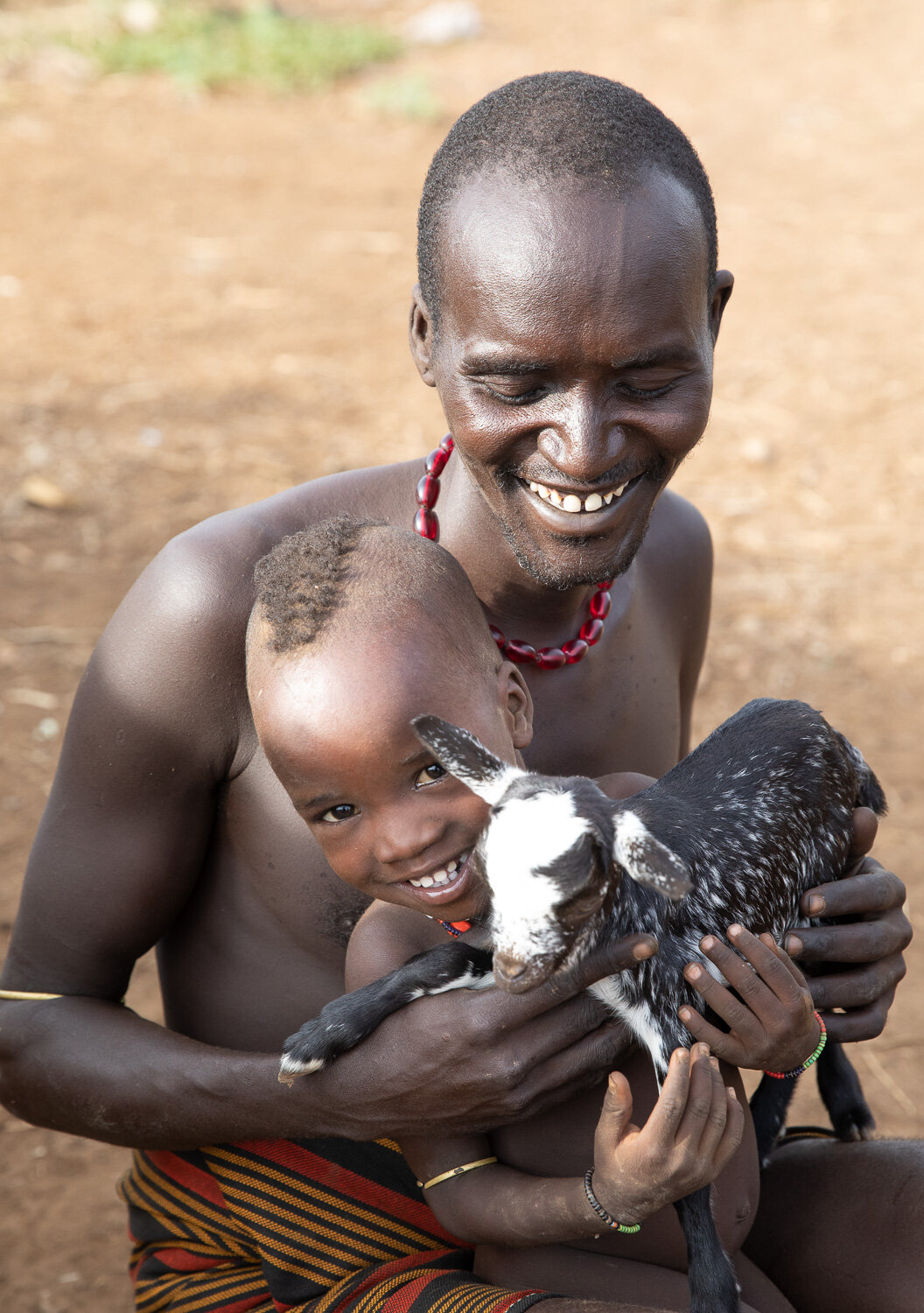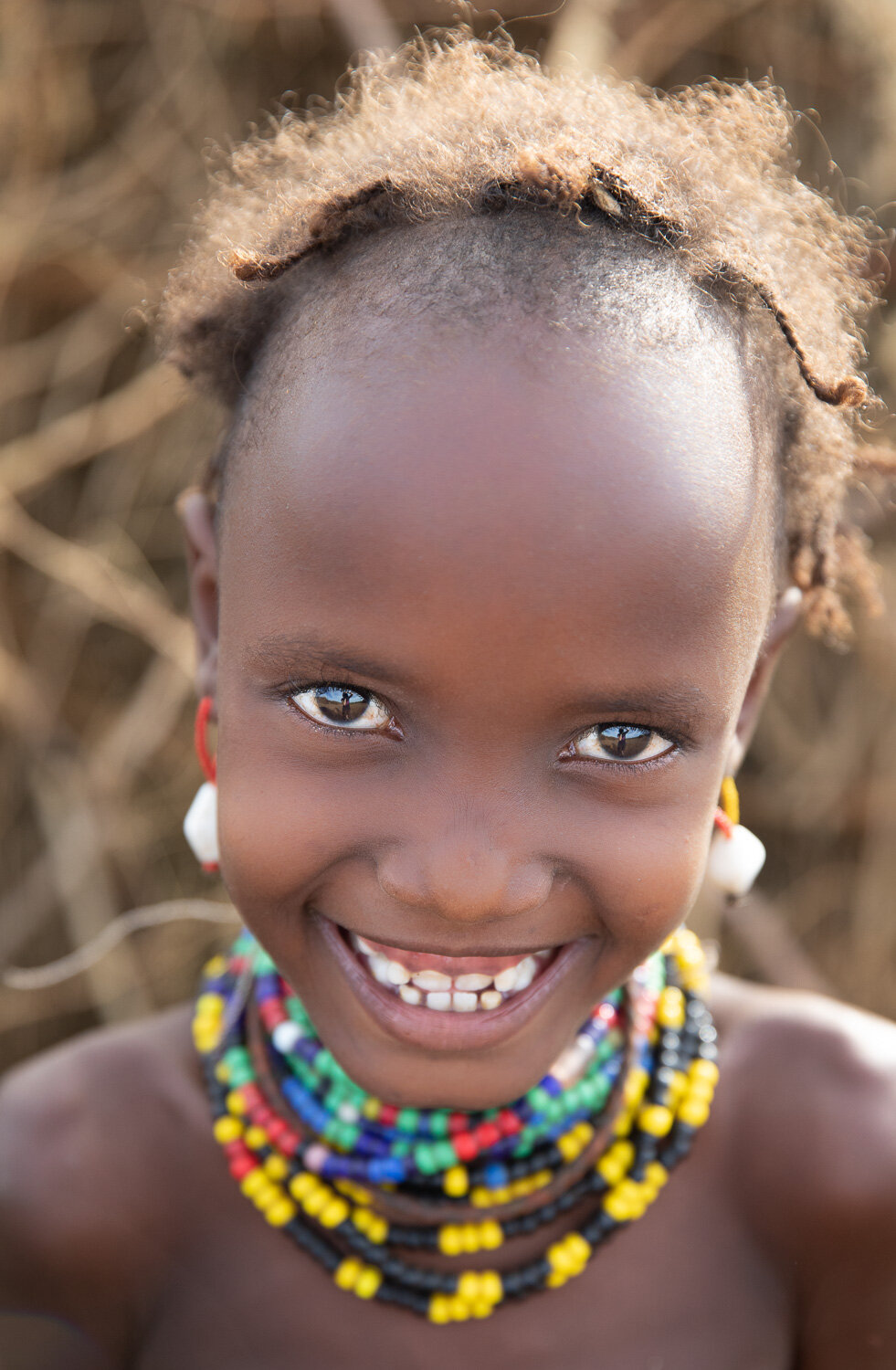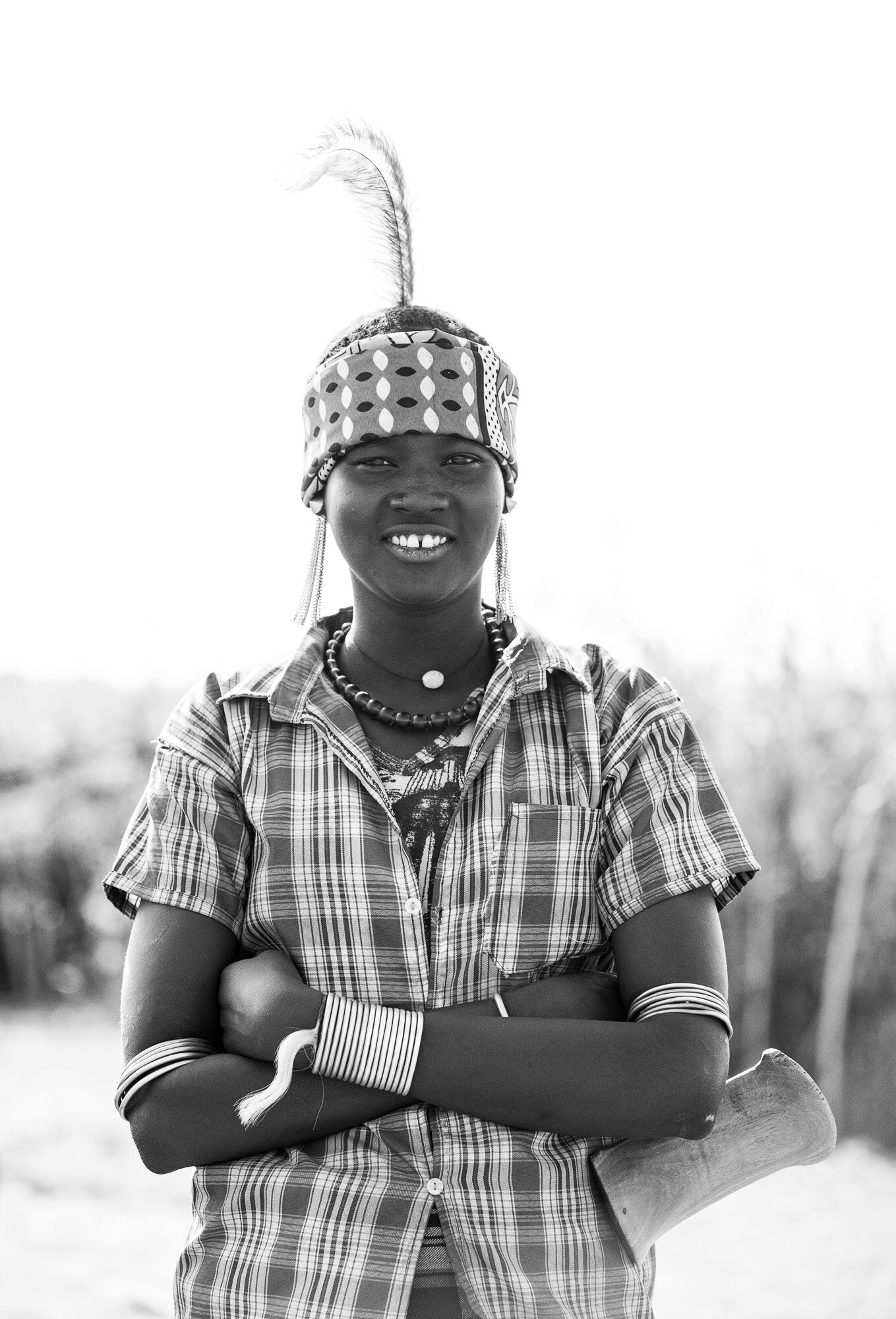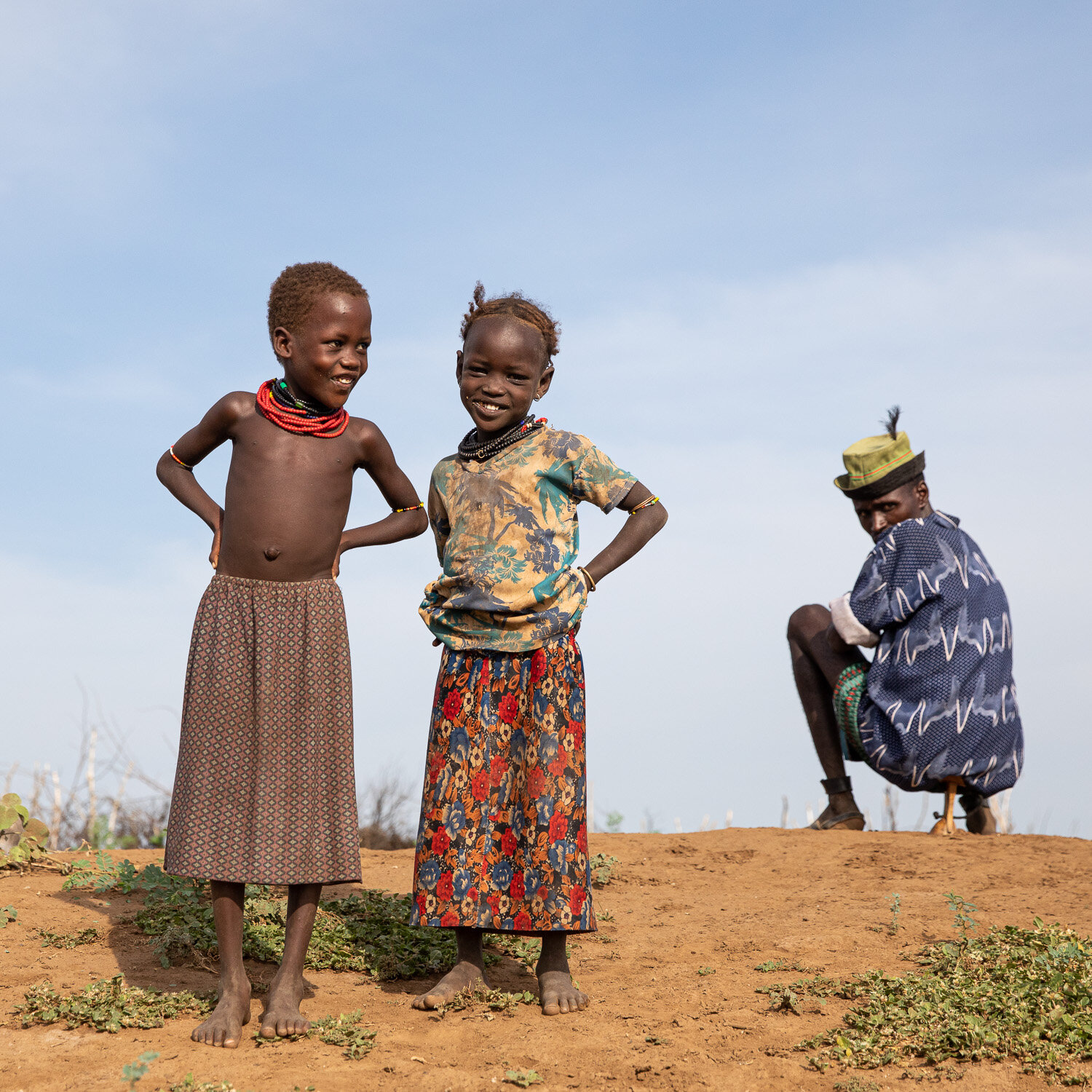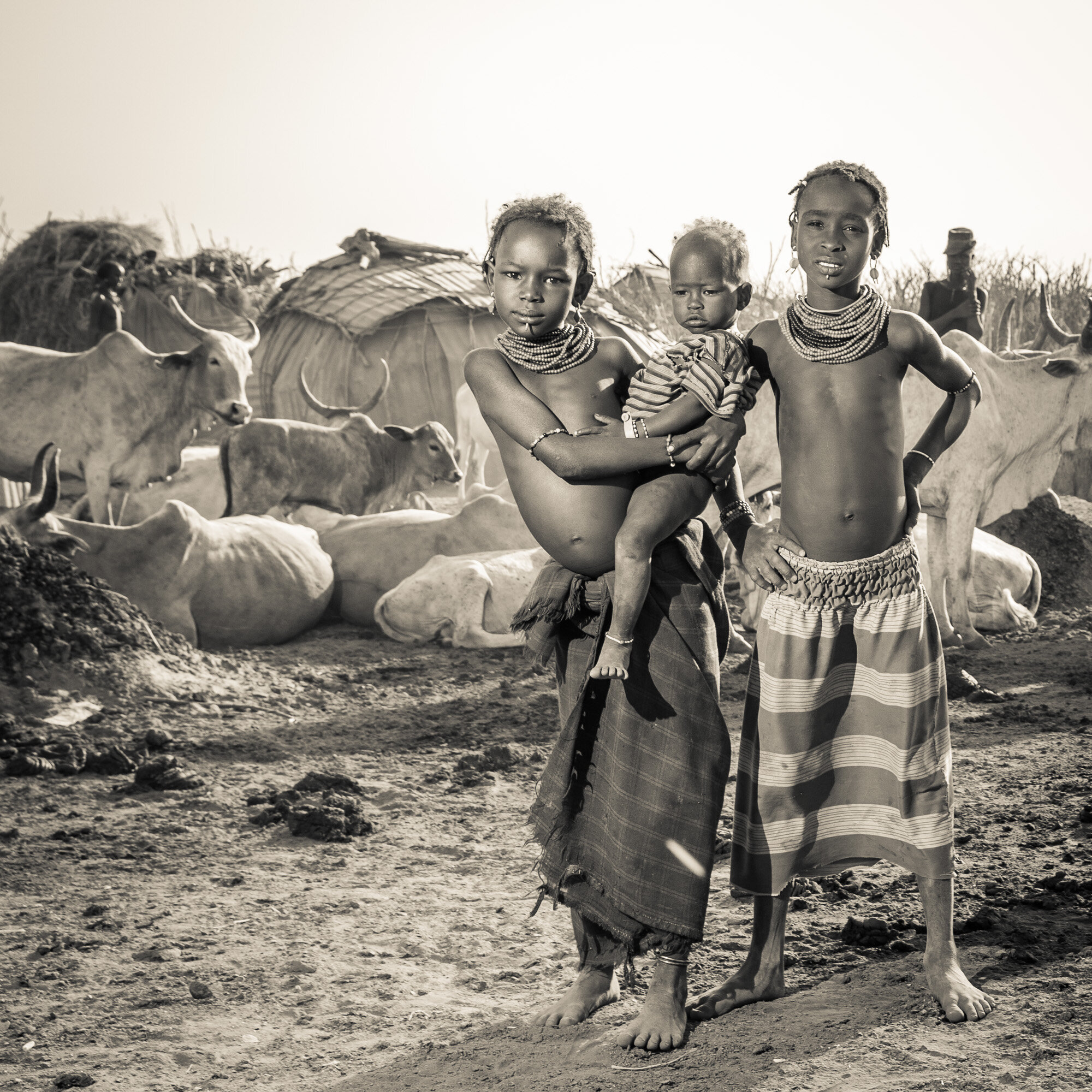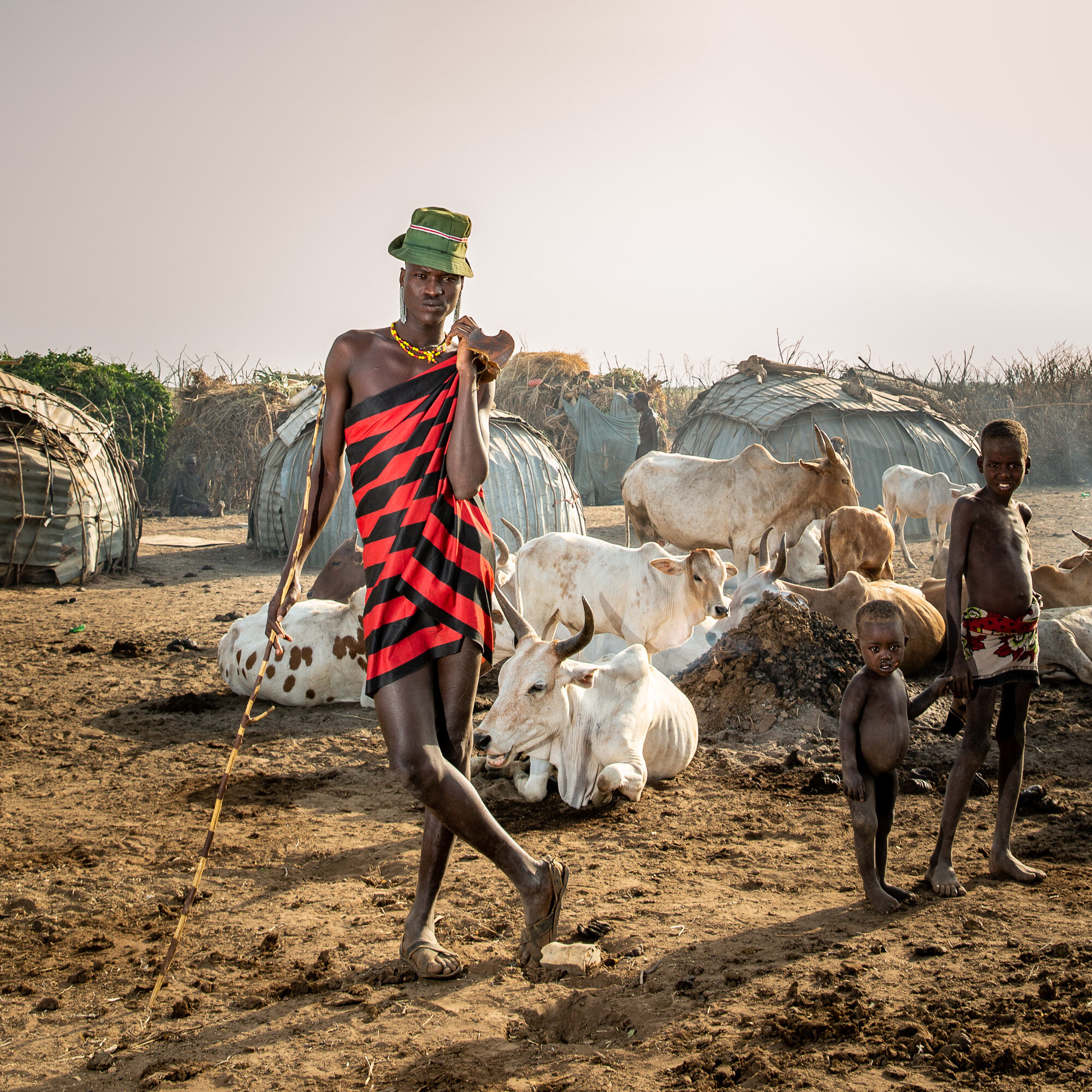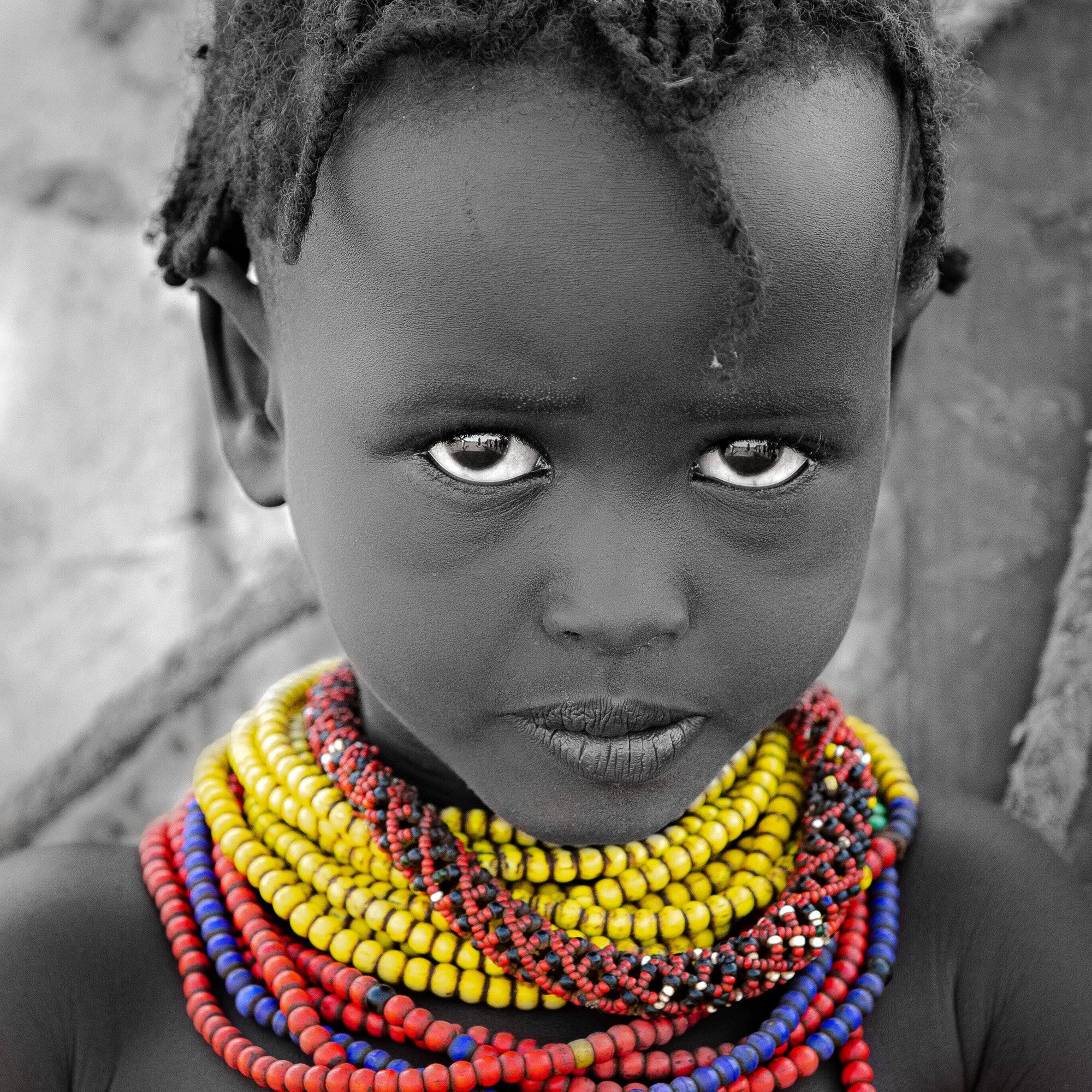No more stops to immigration in Omorate, Omo Valley, ethiopia
After arriving at the Omo Valley town of Omorate your 4x4 used to pull into the local Immigration office on your Omo Valley tour. Nothing moves fast here and if you arrived too early you may have had to wait for the immigration officer to start his day. With passport in hand you used to enter an eerily quiet small room with two desks as the light filtered through from the window opposite. On the wall was a well used map of Southern Ethiopia showing the Southern Nations, Nationalities and Peoples Region. There was no modern technology here, just desks and paperwork. Your passport details used to be recorded on a written list documenting the people entering this area which is close to the border of Kenya. Arriving early was always beneficial as every photographer visiting the Omo Valley tribes loves the morning light and also it gets very hot here in the middle of the day.
The immigration check point in Omorate all changed a few days before one of my trips and I was surprised to find out that they had moved the immigration office point and it is no longer in Omorate. In January 2022 I still visited the office but the officer just asked to view my passport without recording any information. Many locals in Omorate are thrilled with the possible business opportunities that this means for them, as vehicles can now move more freely from Northern Kenya as well as supplies!
On my following trips I still take my passport just incase, but have never had to show it to anyone in Omorate since.
The entrance to the previous Omorate Immigration, Omo Valley Ethiopia
10 facts about the Dassanech tribe
The only Omo Valley tribe you needed your passport to visit (prior to 2022)
Dimi ceremony is the most important rite of passage for a father of a girl
The largest traditional Omo Valley tribe
Genetically have most in common with the Pokot tribe
Both boys and girls are circumcised (FGM)
Most southern tribe in Ethiopias Omo Valley
Dassanech clans live in both Northern Kenya and Southern Ethiopia
A mans first wife is chosen by his family but he can choose his second wife
Thank you is pronounced “Waggiquonodo” (spelt phonetically) in the Dassanech language
When a newborn is named 2-3 days after its birth the women chant and spit on the mother and child to bless it
The Dassanech are also known as the Galeb, Marille and Reshiat tribe
Dassanech, meaning “people of the delta” is varied in its spelling such as Daasanach, Dassenech, Dasenach and Dassanetch. As with the majority of words in Ethiopia when they are translated there are variations in the written English word, although they are pronounced the same. They are less commonly known as the Galeb tribe and Marille tribe and even less commonly referred to as the Reshiat tribe. The Turkana tribe are the ones who use the name Marille for the Dassanech people.
The Dassanech tribe are the most Southern Ethiopian tribe in the Omo Valley
The dust is everywhere, the ground is dry. Their dome shaped huts are uniquely Dassanech. Enclosed by twigs and branches, their villages are quite large and spacious within. The hardship of living on this land is noticeable by vision whilst feeling the 35+ degree Celsius heat of the sun contributes to the harsh lives of these intriguing people. These Ethiopian tribal huts covered in twigs, rope and corrugated iron are visible amongst the early morning smokey fires. The Dassanech tribal villages are wonderful to photograph on an Omo Valley photography tour as there is always so much happening.
The cattle use the smoke to keep the flies away from their eyes in these tribal villages.
dassanech clans, villages and marriages
Large clans with multiple villages of difference sizes are dotted with their domed huts between Omorate and Lake Turkana. The Berqorich rate (ratti) village in Southern Ethiopia has around 400 people from the Ellele clan, The chief of this village has 7 wives. The amount of wives a man has depends on how much cattle he can afford to pay for a new bride as well as his preference. A mans first wife is chosen for him by his family with social and relationship benefits taken into consideration. Future wives he can choose, however every Dassanech wife must have their own hut for themselves and their young children.
Clans have their own identity and responsibilities within the Dassanech community however they share in the same ceremonial rituals such as the Dimi Ceremony (more information below). The women build the huts and village infrastructure while the men take care of their livestock.
In Ethiopias Omo Valley the women in most of the tribes are responsible for building the dwellings.
The strength of these Dassanech women is obvious. It is not uncommon to see women carrying heavy loads like in this photo with men sitting watching nearby.
There are clearly defined responsibilities for both men and women.
dassanech distinctive domed huts with the tiny entrance
The Dassanech villages have times of tribal conflict with neighbouring tribes which includes violence and raids. They also trade goods with neighbouring clans and tribes in the Omo Valley and Northern Kenya for items such as beads, cattle, guns, bullets, beer and food. The Dassanech huts have one entrance which is very small. They were originally designed this way to make sure unwelcome guests cannot easily enter without being noticed.
This young Dassanech girl sits at the small entrance of this dome dwelling. They are the smallest entries to any of the Omo Valley tribes huts in Ethiopia.
Dassanech are the largest tribal group in Ethiopias Omo Valley
The Dassanech are the largest Omo Valley tribe that the vast majority of its people still live in traditional villages and retain their culture. The Aari tribe and Maale tribe in the Southern Nations, Nationalities and People’s Region have a bigger population, however they have adapted to more modern ways of living in more recent years. There are more than 25 local guides operating out of Omorate that visit a total of 14 of the Dassanech tribal villages in Southern Ethiopias Omo Valley. Whilst some of the local guides estimate the total population of the Dassanech people as 17,000 including in Kenya, there are may records showing the estimate to be 30,000-40,000 in total.
linked with the Pokot Tribe before their migration
The Dassanech tribe in southern Ethiopia and northern Kenya is genetically linked to the Pokot tribe. It is believed their initial tribal group separated in two and headed and in different directions, with the Dassanech settling near the Delta of the Omo River and North of Lake Turkana. Despite being so close to the Omo River and Lake Turkana it is a semi-arid and very dry region with hot daytime temperatures.
Dassanech tribe villages are at the southern end of the Omo River and towards Lake Turkana.
They rely on the natural flooding of the Omo River as well as rains to grow their crops.
tribal life in a Dassanech village
Constantly adapting to their changing environment the Dassanech mostly grow sorghum, maize and beans. Goats and cattle give them milk as well as meat in the dry season when the crops and food is scarce. The Sorghum is mixed with water into a sloppy porridge as well as making their local beer when fermented.
Everything has a use in the Omo Valley and here a dog finds warmth in the chill of the early morning near some cattle dung while this Dassanech girl separates seeds.
Breakfast time in a Dassanech village for this little boy.
Like many of the Omo Valley tribes the Dassanech men place a high importance on their livestock. Not only do they use them for their milk and skins, but it is a sign of their status and wealth. During long droughts when many of their livestock have not survived some men have chosen to take their own lives.
The Dassanech and “The Dies” in northern turkana
The Dassanech that have no cattle (droughts/disease or cattle raids from tribal neighbours) head to the shores of Lake Turkana. They hunt crocodiles for their meat and go fishing. They used to be seen as a lower class and are sometimes called “Dies” (poor people) they mostly economically and culturally set apart. The Die and Dassanech trade resources with each other. Sometimes their time as a Die is temporary as they can become a “Dassenech” again when they get livestock. The men need livestock to be able to marry and pay the bride wealth. On occasions the Die can trade small resources with relatives that have cattle and then pay their brides father over many months or years as calves are born.
There are very established and economically viable Dassanech fishing villages too. Due to the long droughts and hardships on the land, the Dassanech that live in communities on the shores of Lake Turkana have endless amounts of fish. There’s also refrigerated shipping containers to ensure they have the facilities to sell their catch and make a good living!
The Dassanech are a tribe that practise circumcision for boys and girls (FGM)
Dassanech are accepting of females from various ethnic groups joining them and marrying them, however they all must be circumcised. Both boys and girls are circumcised in this African tribe. The Dassanech is an Omo Valley tribe that practices Female Gential Mutilation (FGM). The girls are usually circumcised before they are teenagers by having their clitoris removed. The girls are in a group and go through the circumcision ceremony together with an older women cutting them. Prior to this they are called “animal” or called a “boy” and cannot marry until they have been cut. Their fathers have a direct interest in their daughters being married due to their bride wealth and the cattle they will receive in exchange. After a girl is “cut” she is seen as a “woman” and she can then be married.
To read more about FGM I highly recommend reading the following books.
1) “Desert Flower” by Waris Dirie. Waris was born in Somalia and details her life including her circumcision at age 5 with a blunt, dirty blade that nearly resulted in her death.
2) “The Girls in the Wild Fig Tree” by Nice Leng’ete with Elizabeth Butler-Witter. Nice is a Maasai in Kenya and she ran away and refused “the cut”. Her story is inspirational and brave. She has so far contributed to stopping 16,000+ girls being cut (FGM) and has created a safe place for girls.
FGM is still practised in this African tribe.
Omo Valley photography tours of dassanech tribe, ethiopia
When visiting a Dassanech village on an Omo Valley photography tour in southern Ethiopia you are surrounded by wonderful smiles and curious and happy faces. Their harsh living conditions and limited resources are obvious. Everyone has a role to play within their families and villages. You will see the children looking after younger children, preparing food (girls) and looking after goats (boys).
dassanech body scarification
The girls and women wear necklaces as well as bracelets and also practice body scarring. Most Dassanech tribe scarification for the women is on their backs and shoulders and is a sign of courage and identity. Some men have the multiple horizontal lines scarred on their chests once they have killed an enemy. This is similar to some of their neighbouring tribes in the Omo. It is easy to identify a “killer” and these symbolic scars are a sign they are “good with a gun”.
Body scarification on the backs of these African women from Dassanech tribe in Ethiopias Omo Valley.
Dassanech women hairstyle traditions and culture
The hairstyles of this tribe in southern Ethiopia indicates their status. The single Dassanech tribe girls generally have this type of hairstyle (or similar) with the fringe at the front.
The married women in their first pregnancy have a short shaved hairstyle, where as married women after their first child have a hair style with a parting row in the middle. There can be differences in variations in hairstyles with the different Dassanech clans, but the single and married hairstyles of these African tribal women are symbolic to these people.
This is the traditional hairstyle of a married Dassanech women. Her hair is parted down the middle with the plaits pulled to either sides.
The girls and women sit in the shade in the heat of the midday sun and do each others hair.
This Dassanech tribal woman has body scarification on her back and the traditional married hairstyle.
The traditional Dimi Ceremony of the Dassanech people
The Dassanech have a strong culture and ancient traditions and ceremonies. The Dassanech Dimi Ceremony is a rite of passage for a man with at least one daughter. The Dimi ceremony is the biggest ceremonial ritual of a mans life. It celebrates and blesses the future marriage and fertility of a fathers daughter after they have been circumcised (Female Genital Mutilation FGM). Whilst the ceremony is for the first born daughter the blessings pass on to any of the girls sisters whether they are younger or unborn.
The ceremony is of great significance to the father as after the weeks of celebrating during the Dimi ceremony he will become an elder. As an elder he will be able to contribute to the decisions and discussions of the village and his Dassanech tribal clan.
The senior elders provide symbolic blessings over the girls during the Dimi Ceremony. Several fathers and daughters unite and share this tradition together with other Dassanech villages and clans. The father is called “Man of Dimi” during the weeks of celebration.
Dassanech newborn blessing ceremony
While you are walking around some of these tribal villages in Southern Ethiopia on an Omo Valley photo tour do not be surprised if the occasional woman spits towards your feet. Spitting by these African tribal women is not done in an insulting manner. As they talk they may spit in-between sentences.
Newborn babies in the Dassanech tribe are usually named a few days after their birth. During a naming ceremony the mother holds her baby while other married women spit at them. Amongst their spitting they chant and dance which is their way of blessing the baby.
tribe Photography in a Dassanech village
Your experience on an Ethiopian cultural tour in the Omo Valley will depend on many factors but most importantly who you are with. Respectful drivers, guides, tour operators as well as guests is immensely important when photographing people. This is especially true on Omo Valley tours. You are visiting their homes and you must be considerate of the tribes and their experience when you meet them and take photographs. Every visitor and photographer can have an impact both negative or positive. With the right ground team and attitude everyone can have an absolutely brilliant and fun experience.
This Dassanech boy loved seeing his reflection in my camera lens.
cultural Omo Valley photography tours with respect
It’s lovely to be able to share the joy of photography with curious people you meet on your travels. A good photography tour isn’t solely focussed on your photos, but it considers the experience for everyone. Creating a friendly and respectful atmosphere will contribute to better connections resulting in those wonderful photos.
One of the Dassanech children took this photo of me with the girls.
Dassanech girls taking my photo with my Panasonic compact camera.
Dassanech tribe portraits and photos from the Omo Valley
You can cross the Omo River in a traditional dug out canoe, or cross with your 4x4 over the bridge. The light becomes harsh quite and the heat of the sun starts bitting early so to try to get the best light I prefer to drive.
You will definitely be covered in a fine mist of dust after visiting the Dassanech. Remember to keep checking and cleaning your camera lens throughout your Omo Valley photography tour!
After visiting a Dassanech tribal village in Southern Ethiopia you can enjoy a refreshing cold drink back in the border town of Omorate. As you take in the views of the Omo River keep your camera handy. There are plenty of fish eagles and if you are lucky you will also see the magnificent and shy colobus monkeys!
One thing you can be sure of is that your camera memory cards will be full of plenty of memories and unforgettable moments!
Interested in joining me on an Omo Valley photography tour?
Express your interest and get more information on travelling with me on an African cultural tour CLICK HERE
